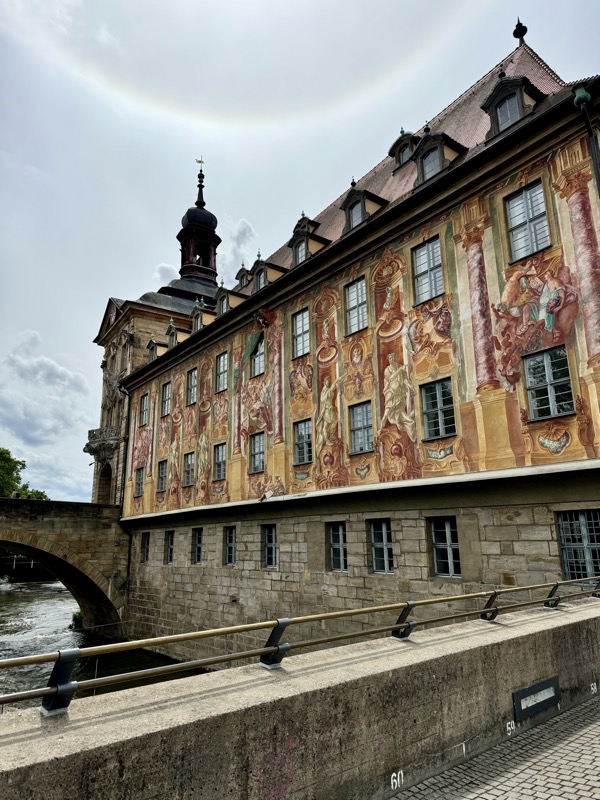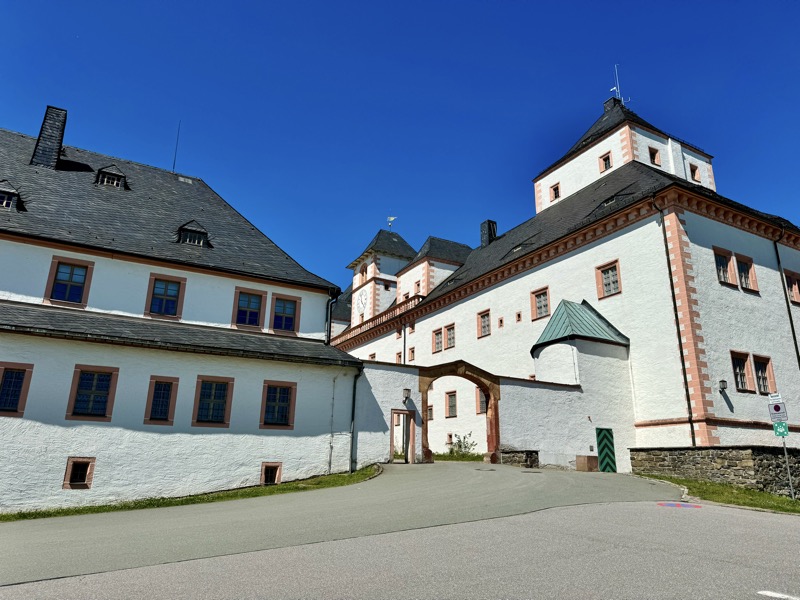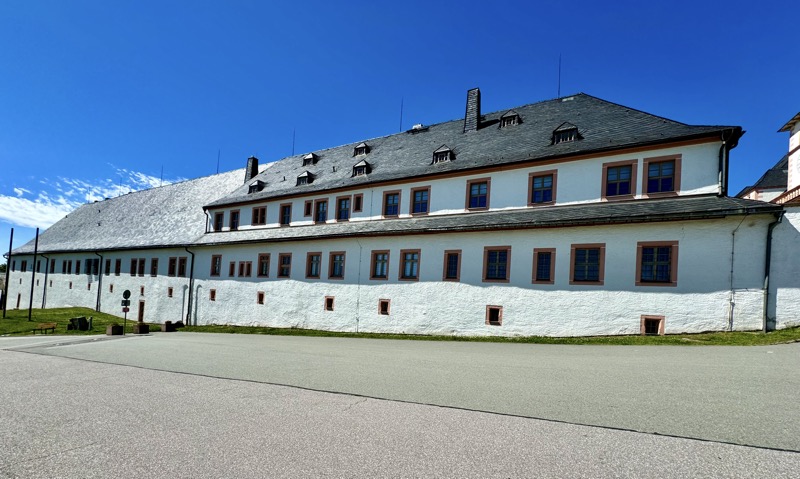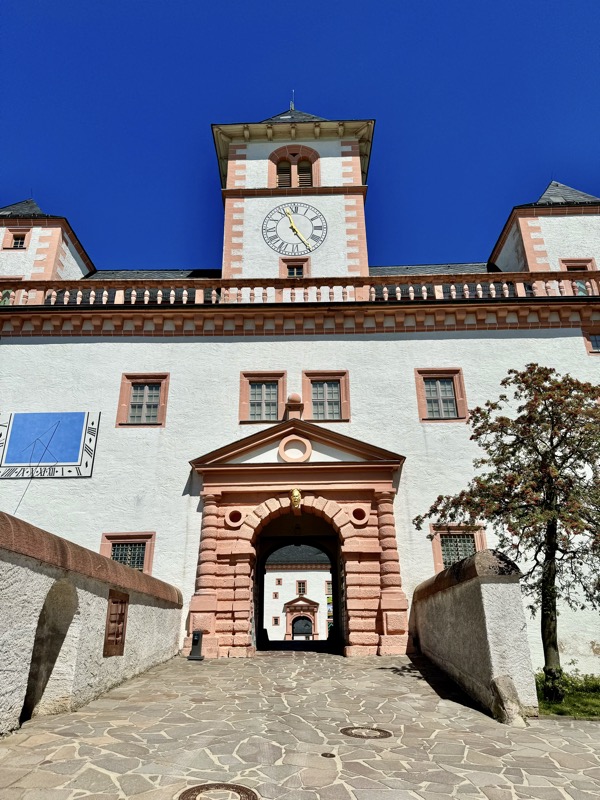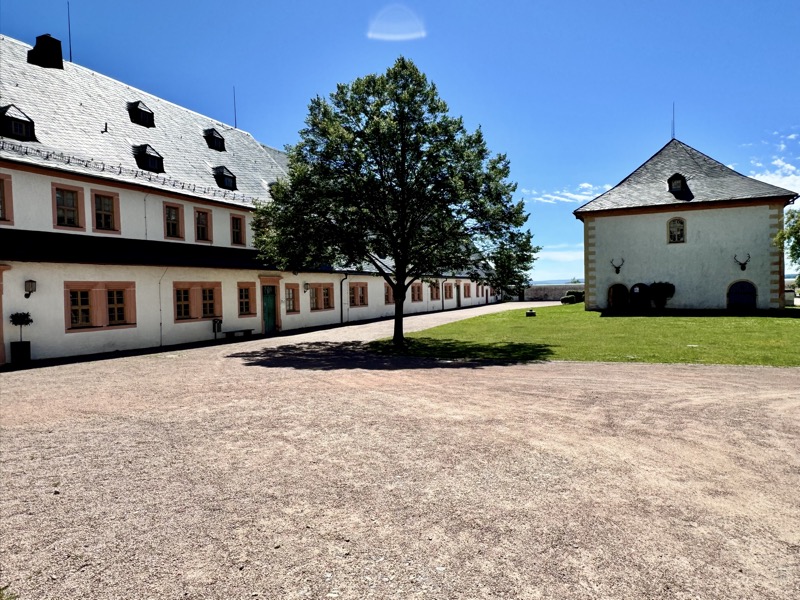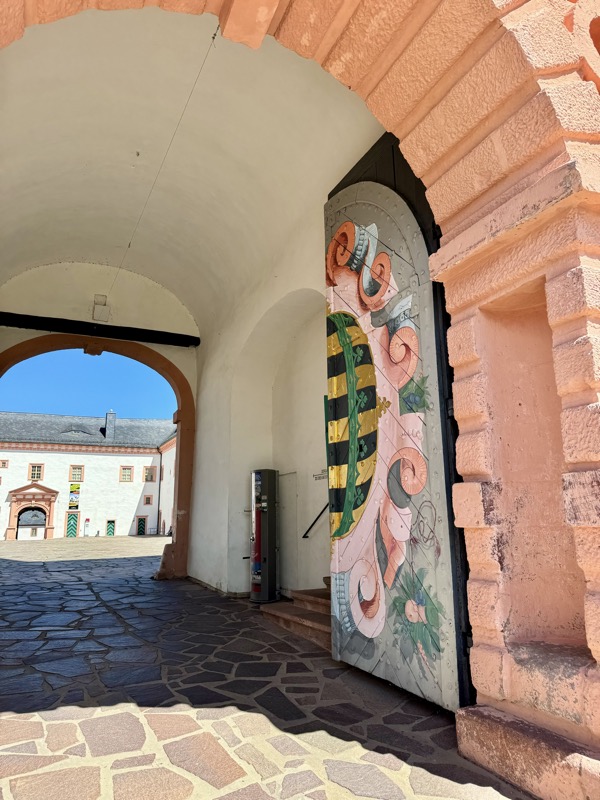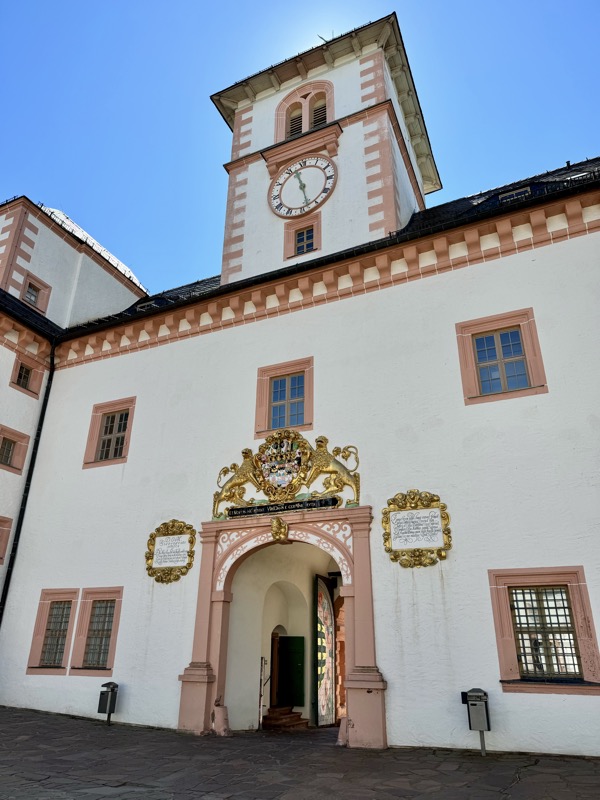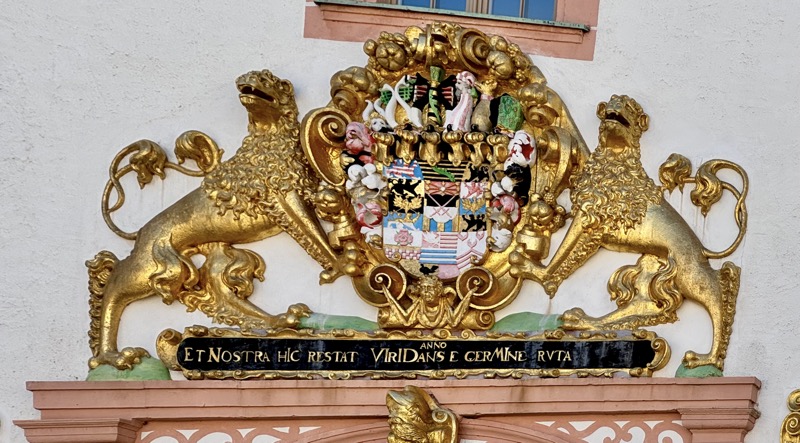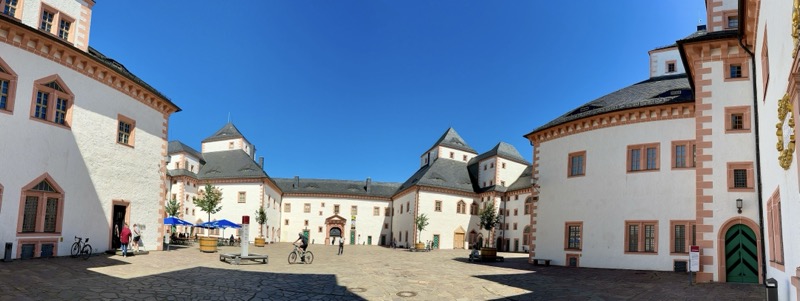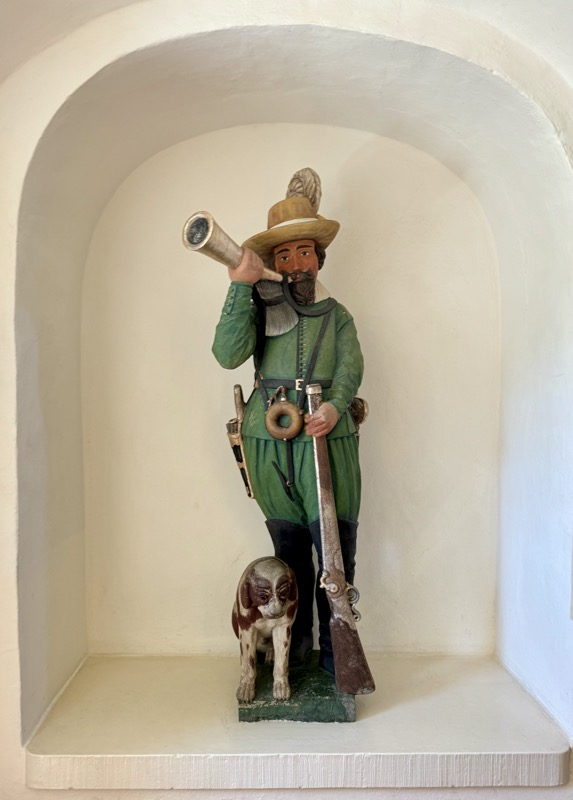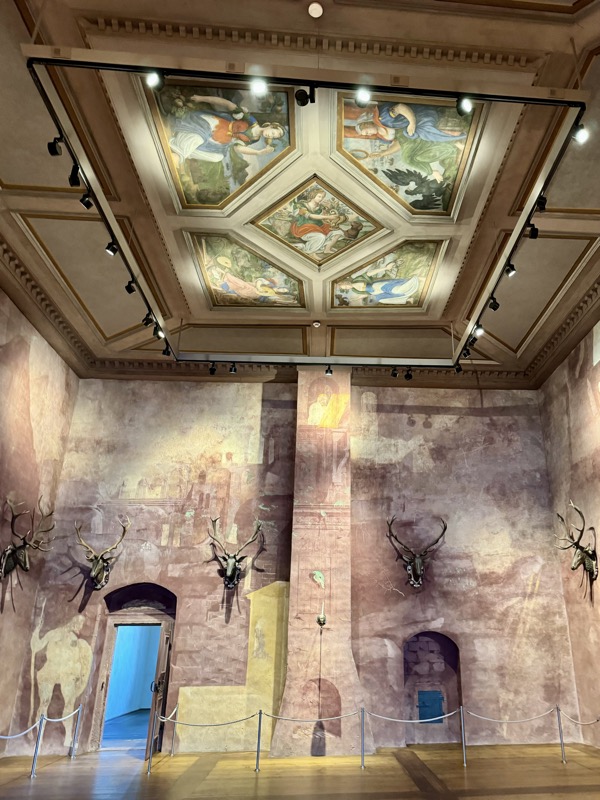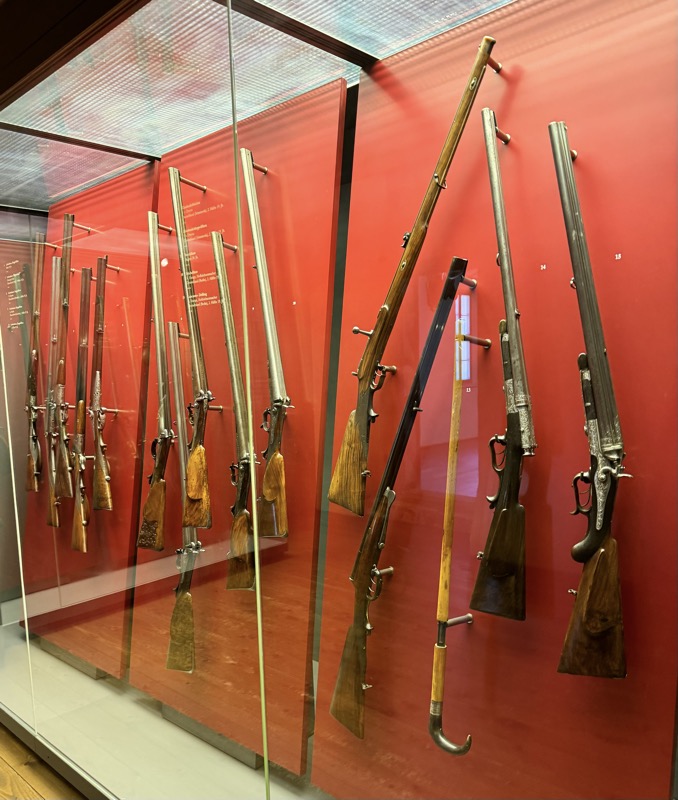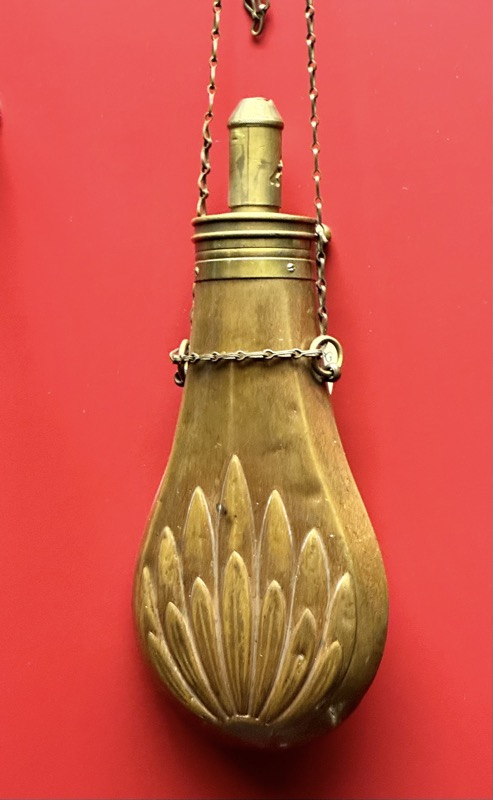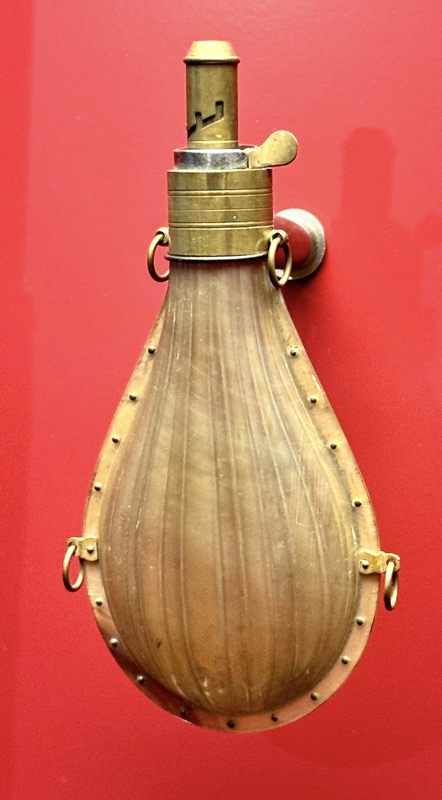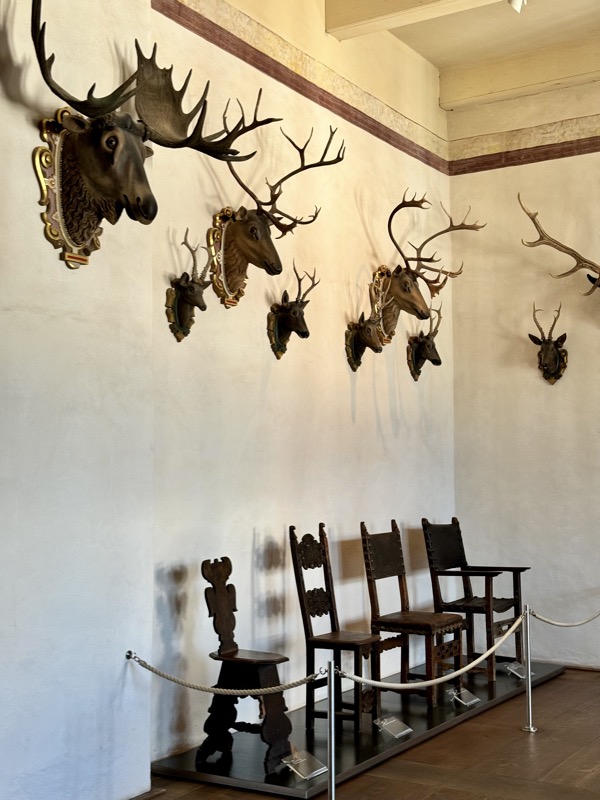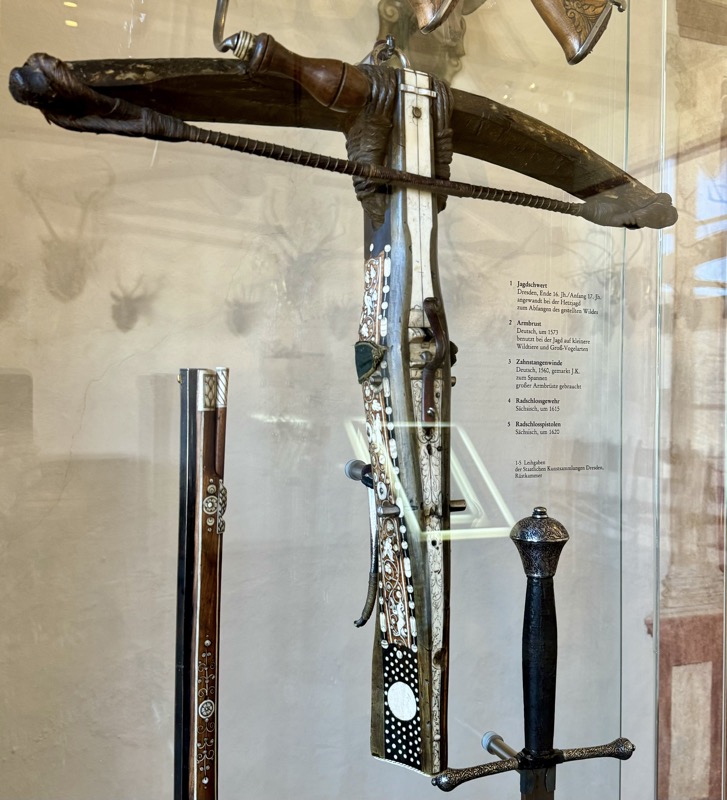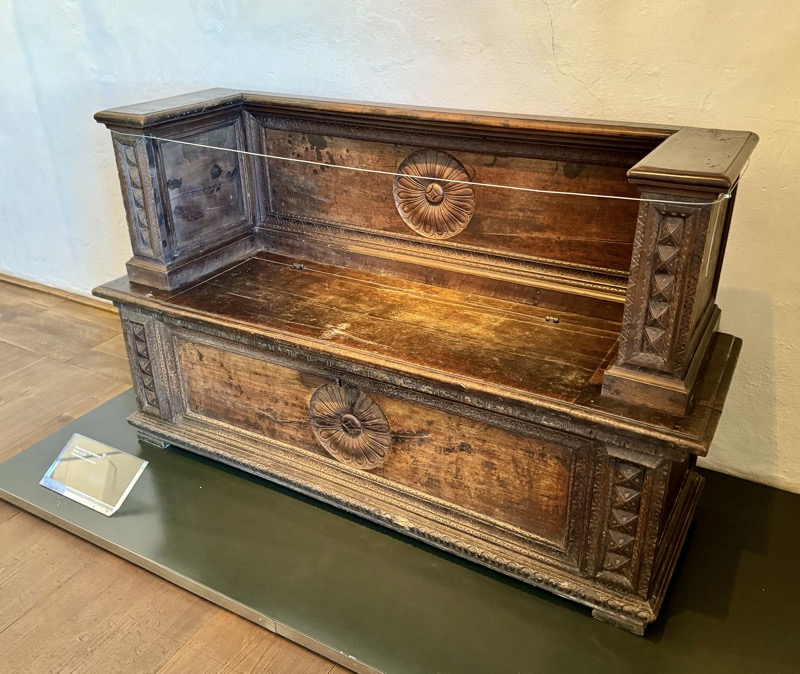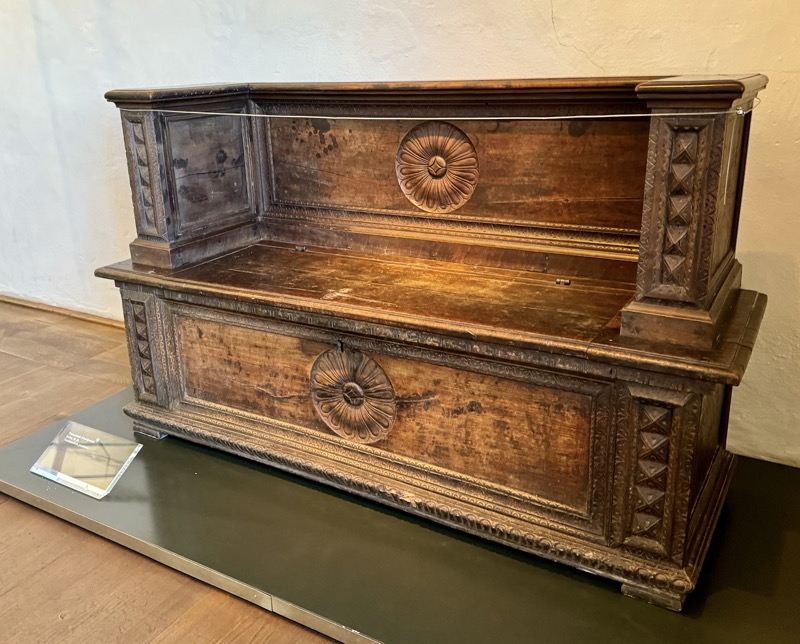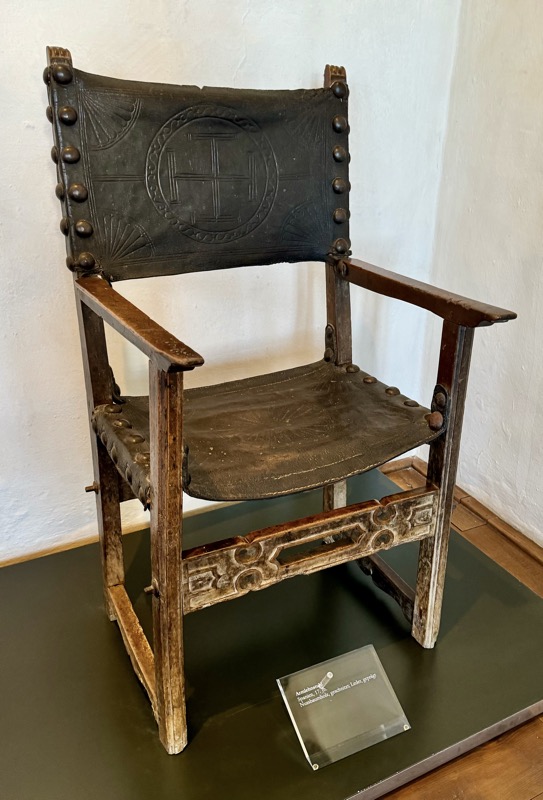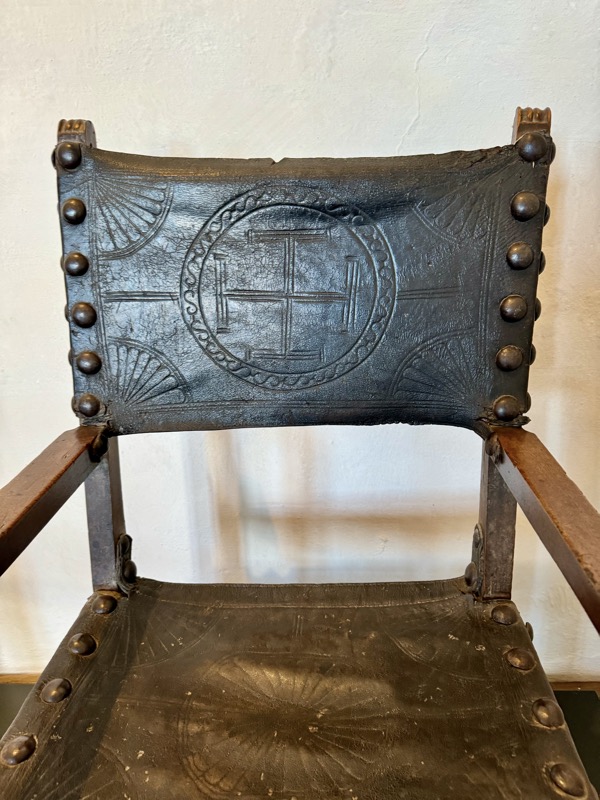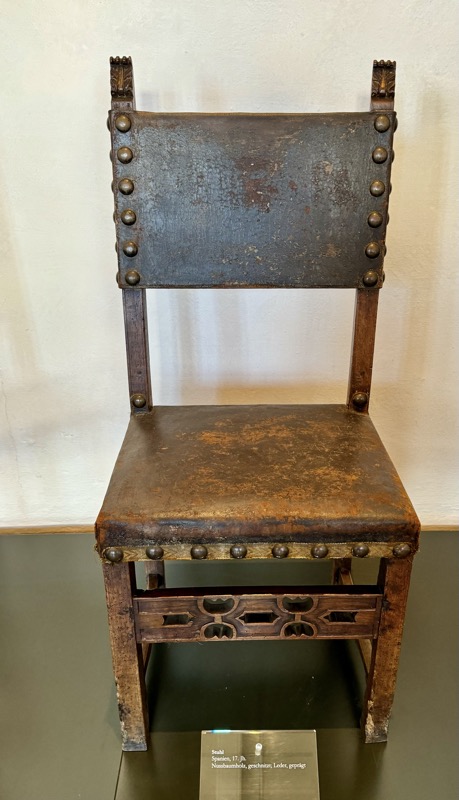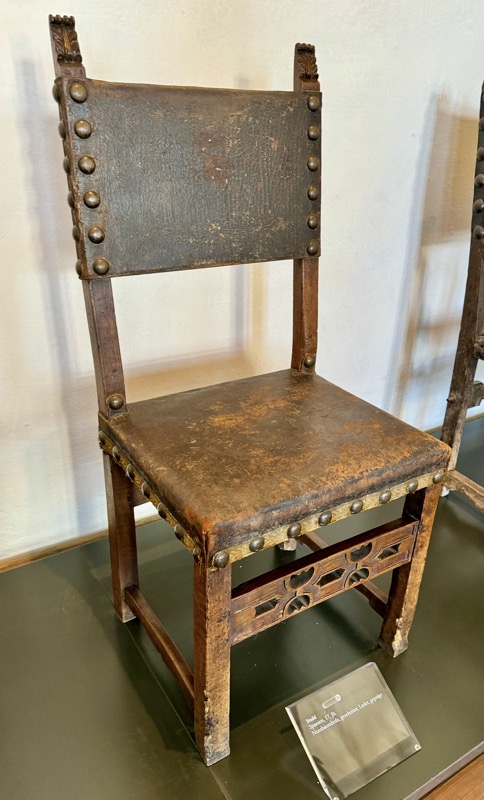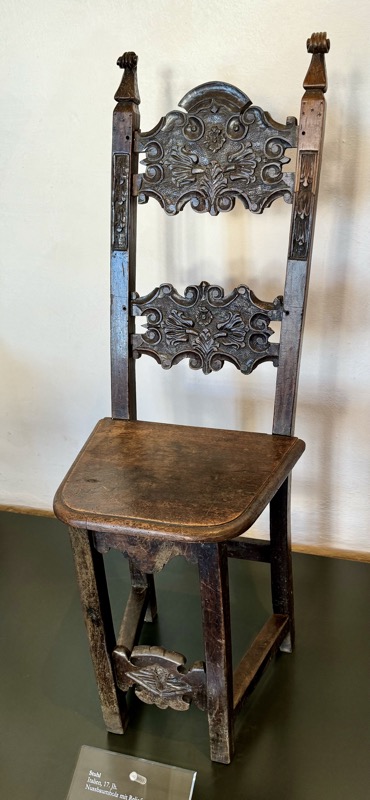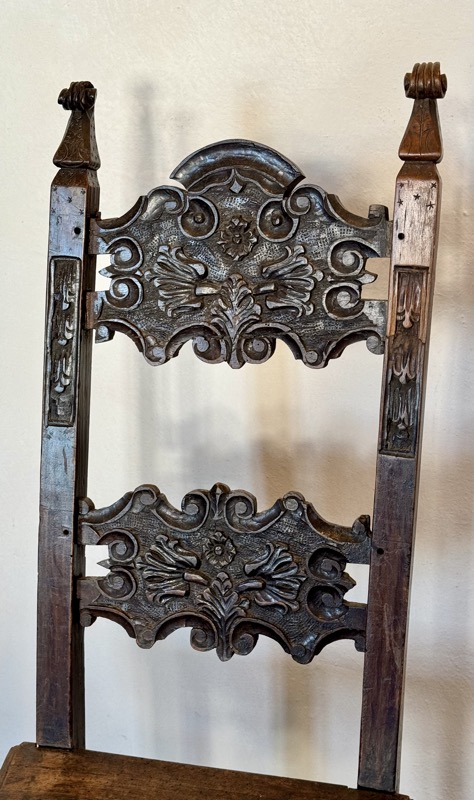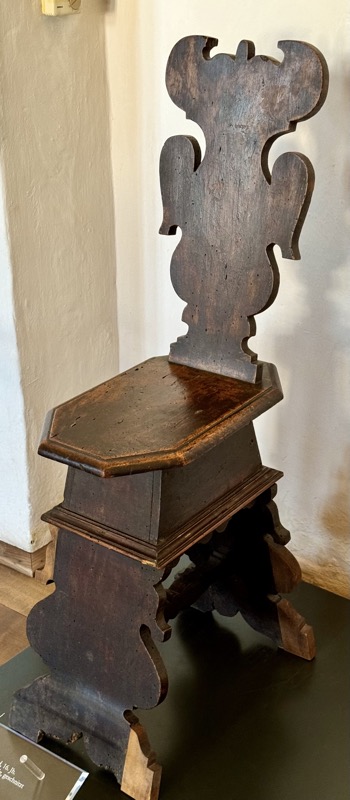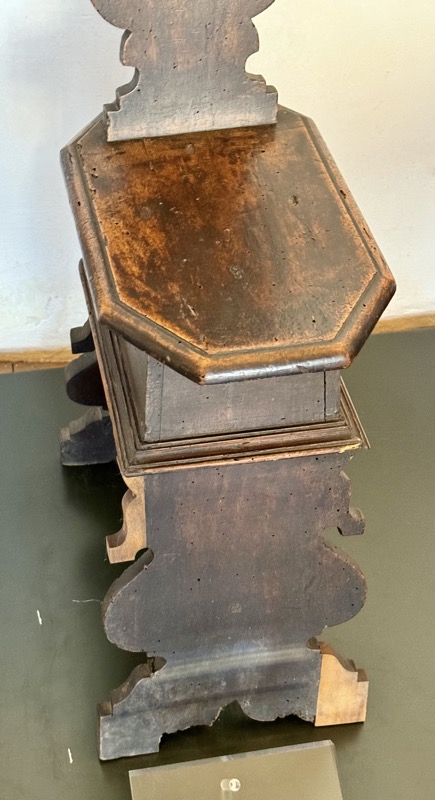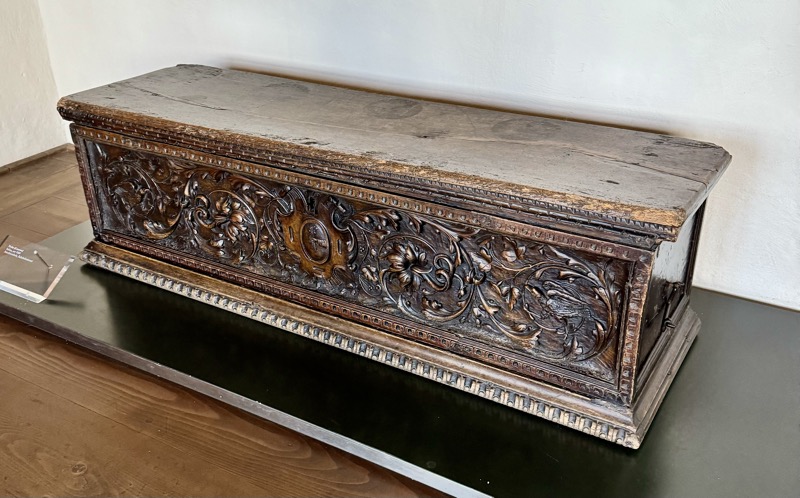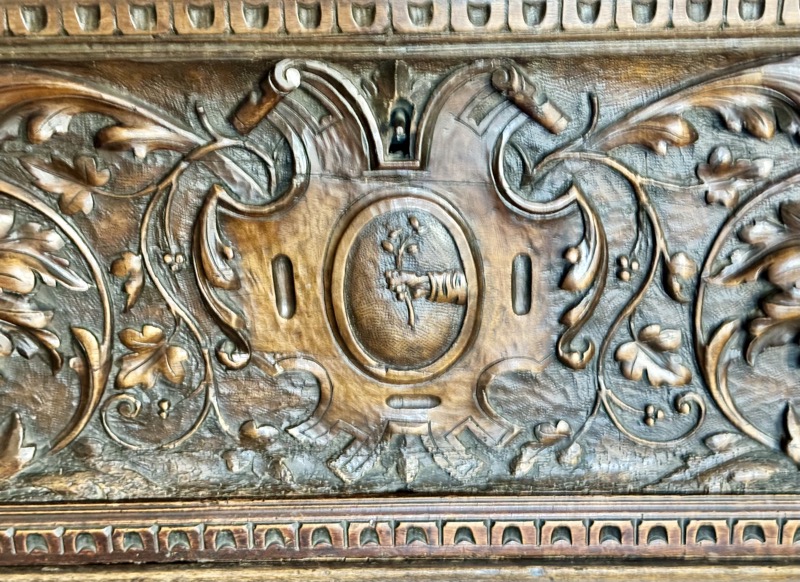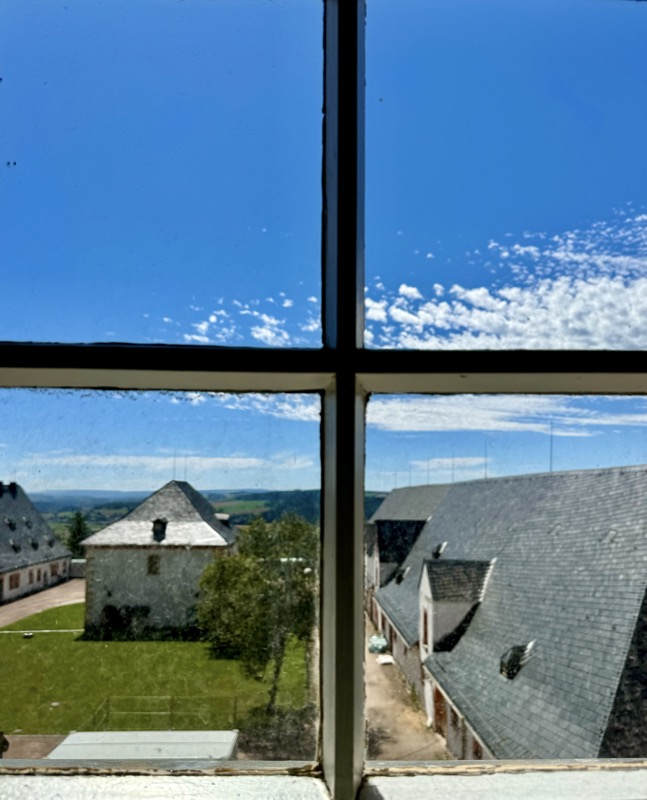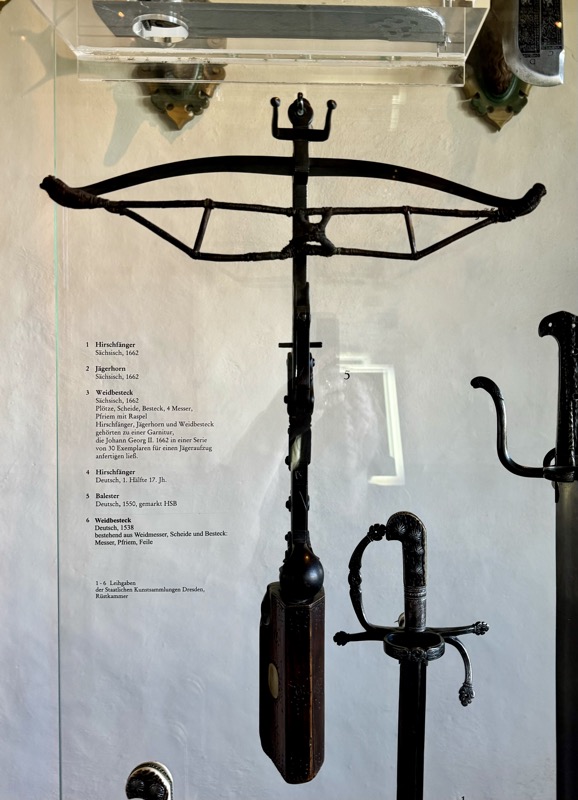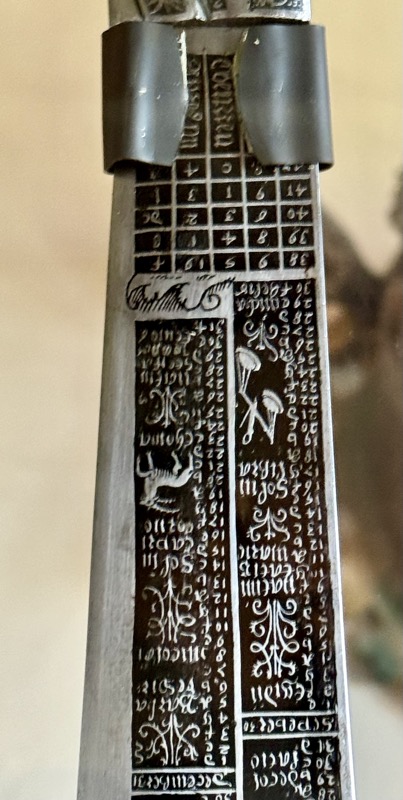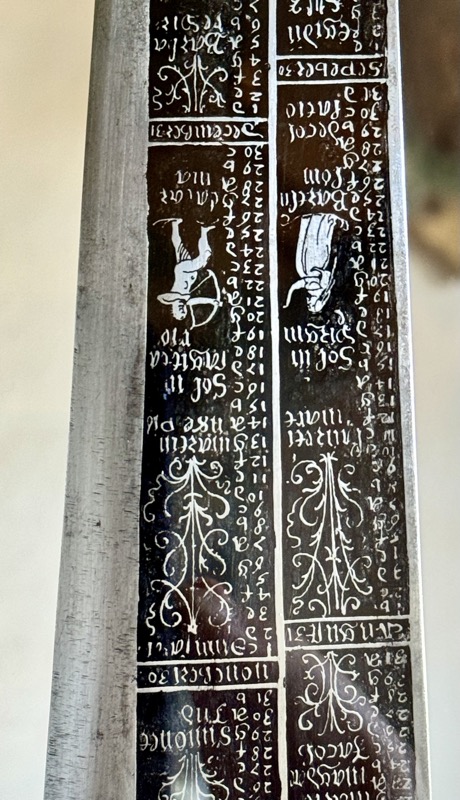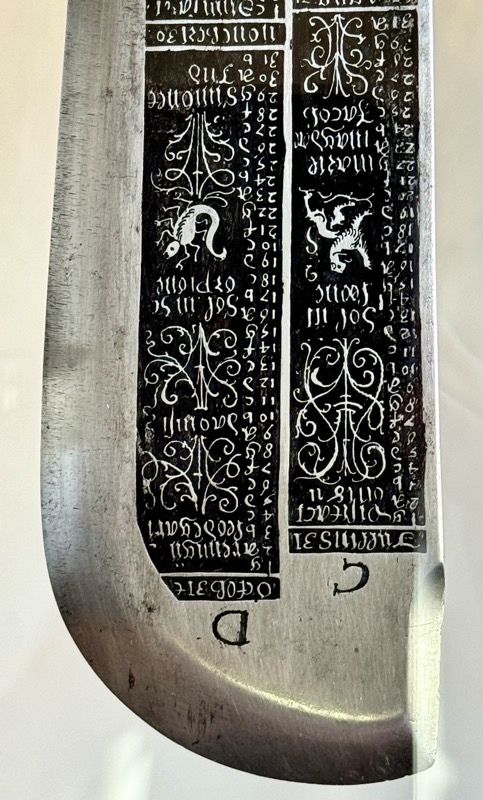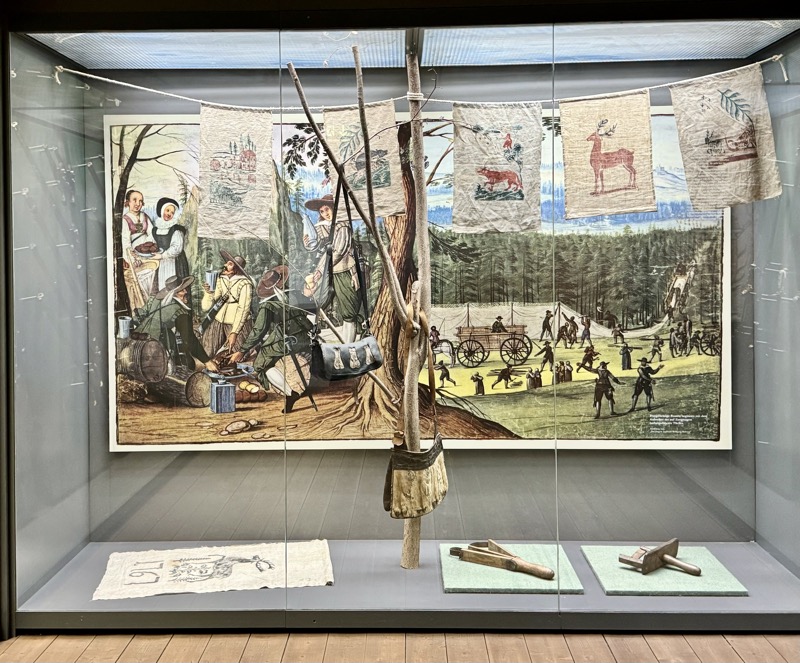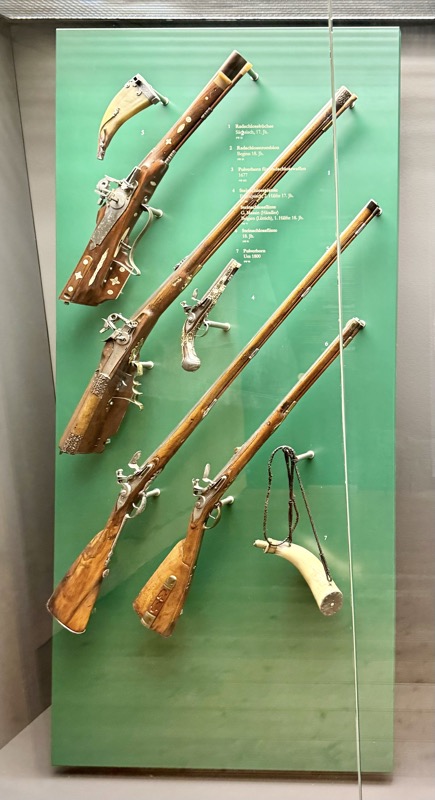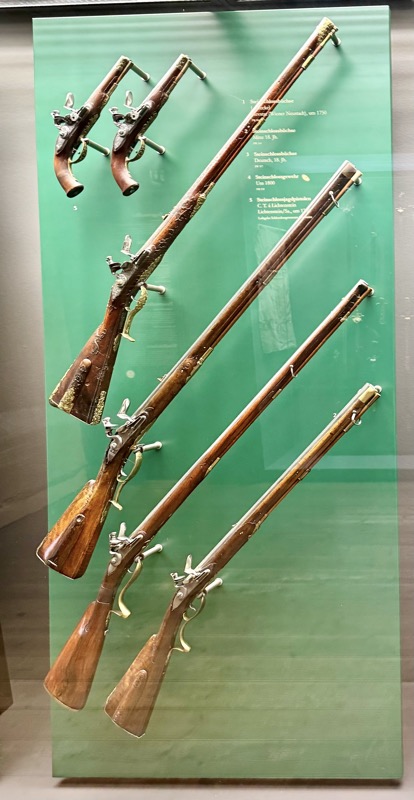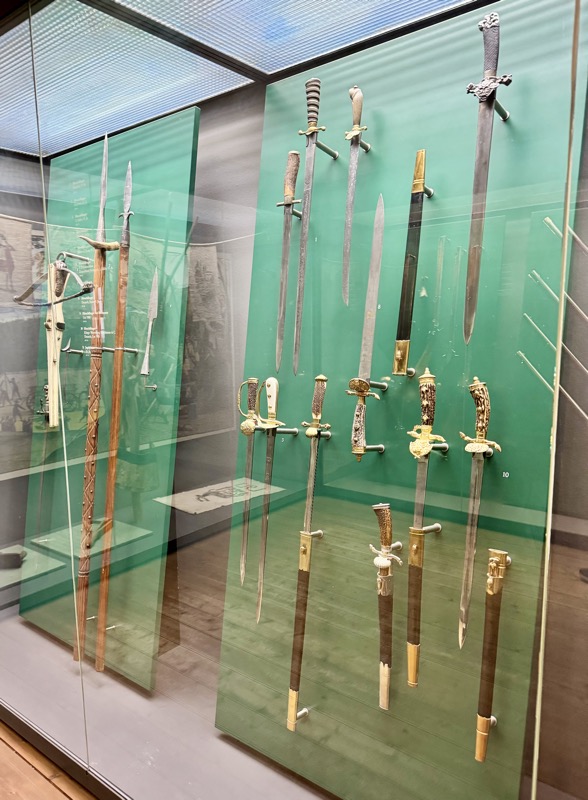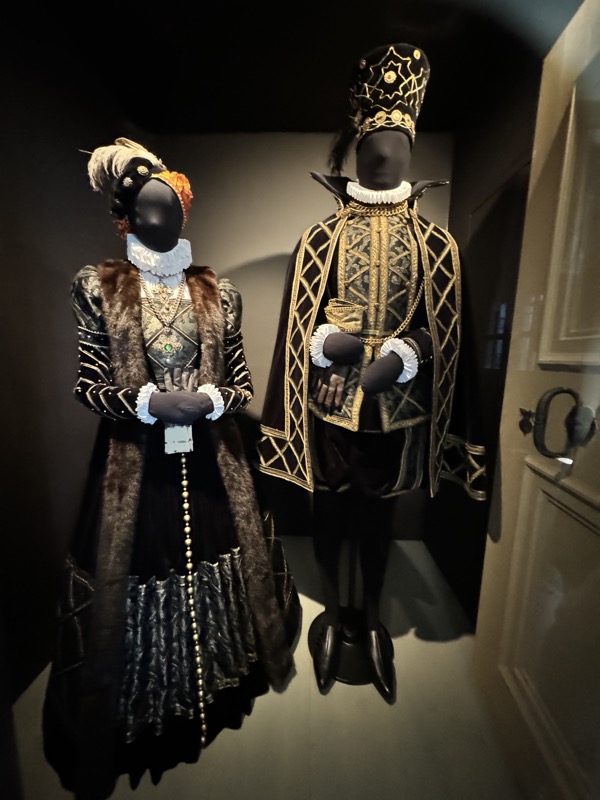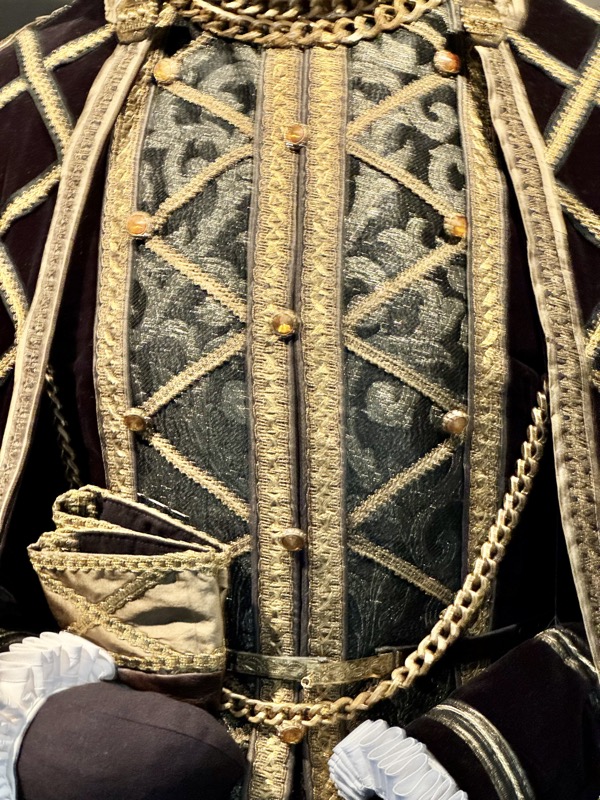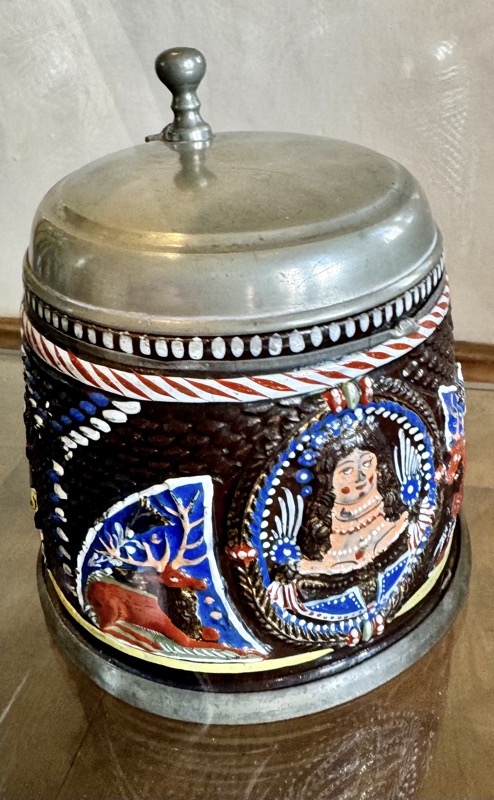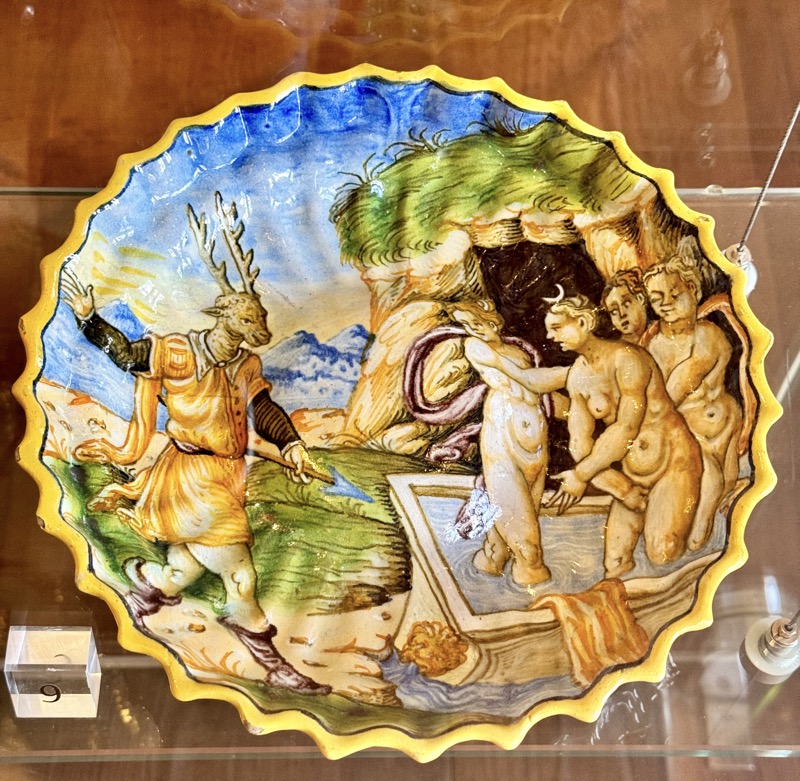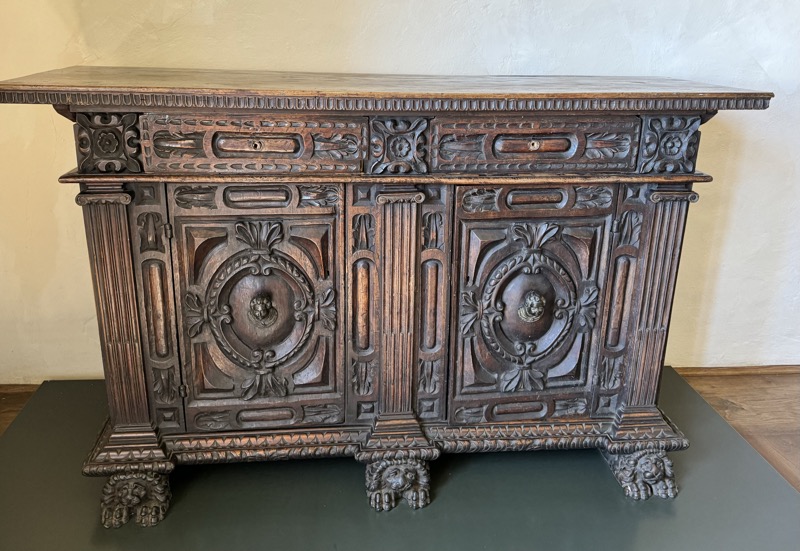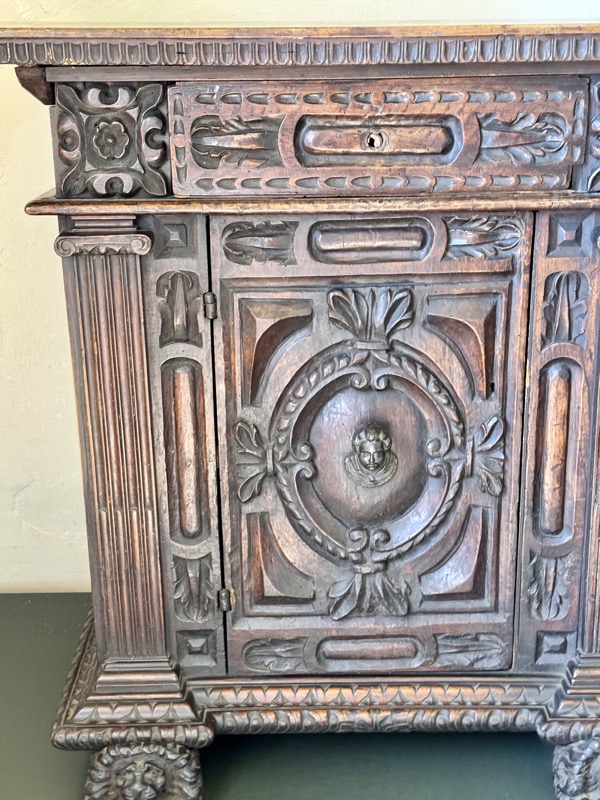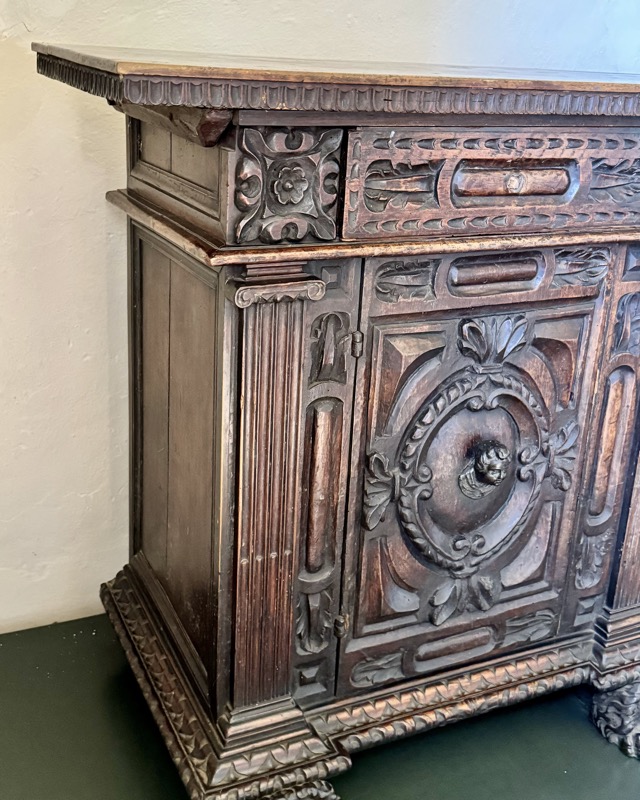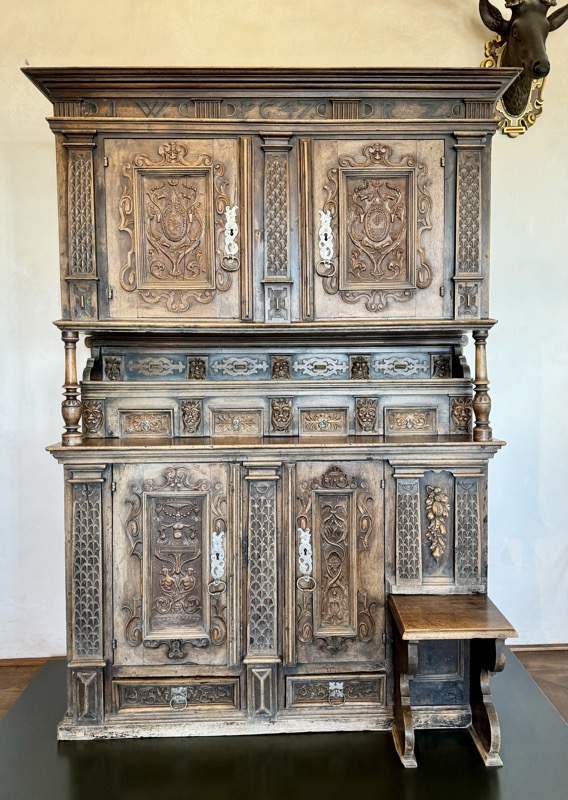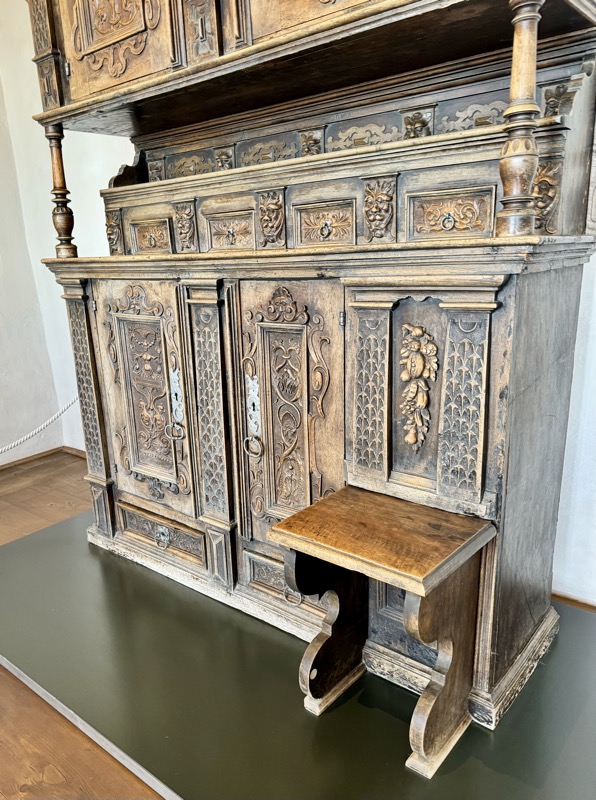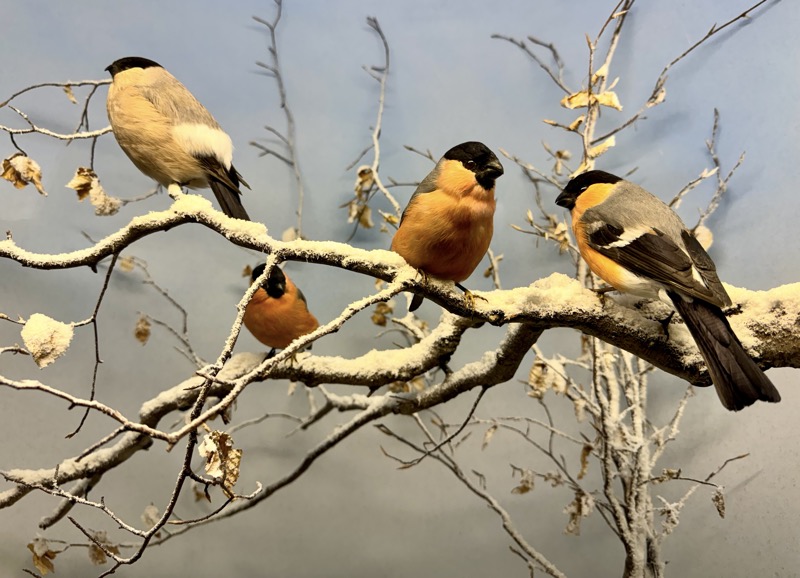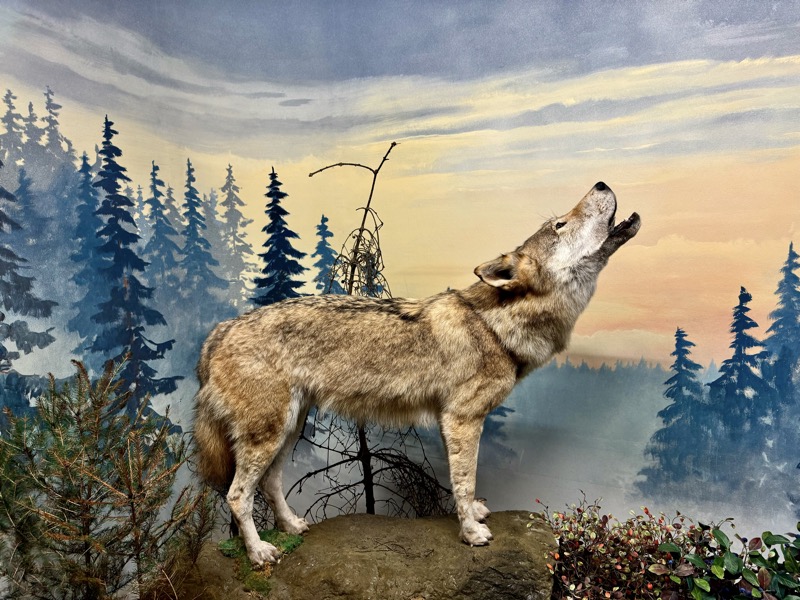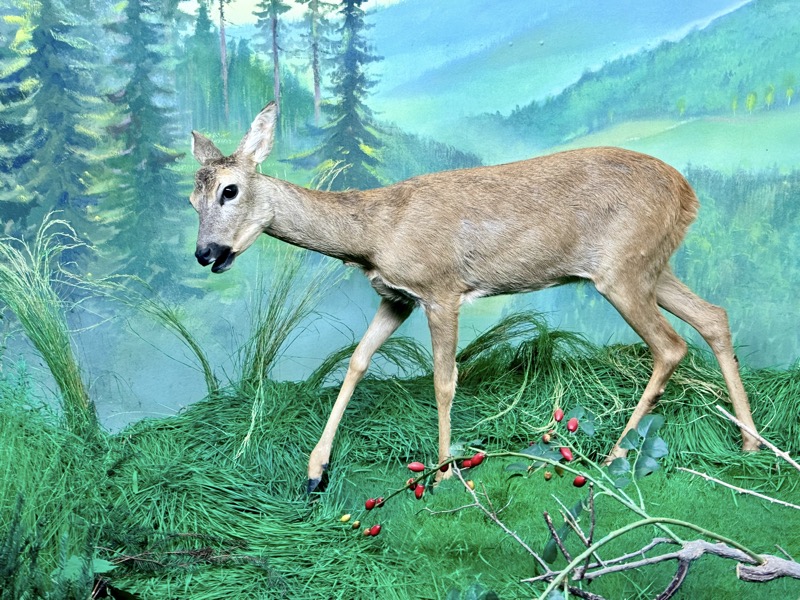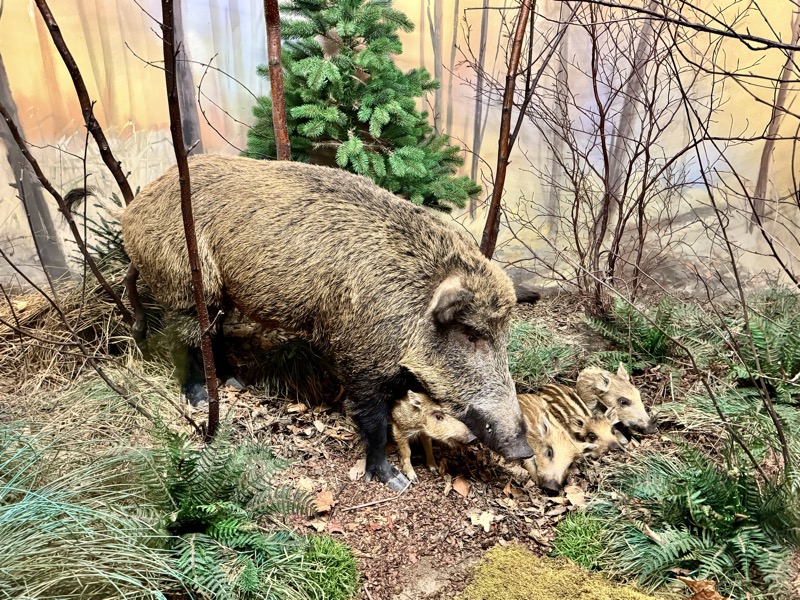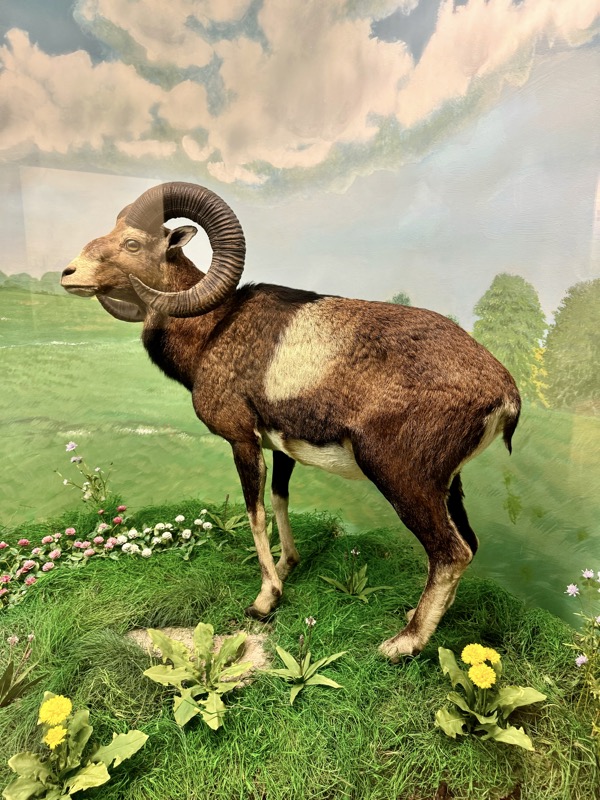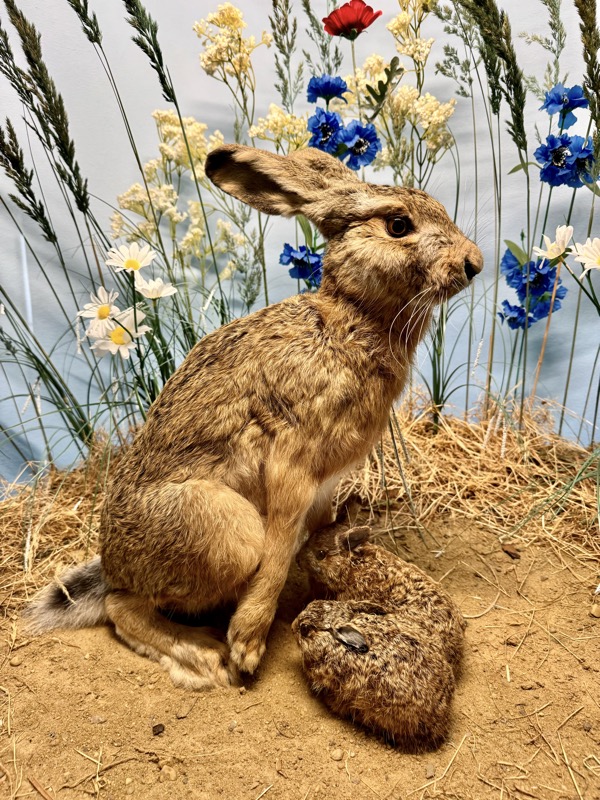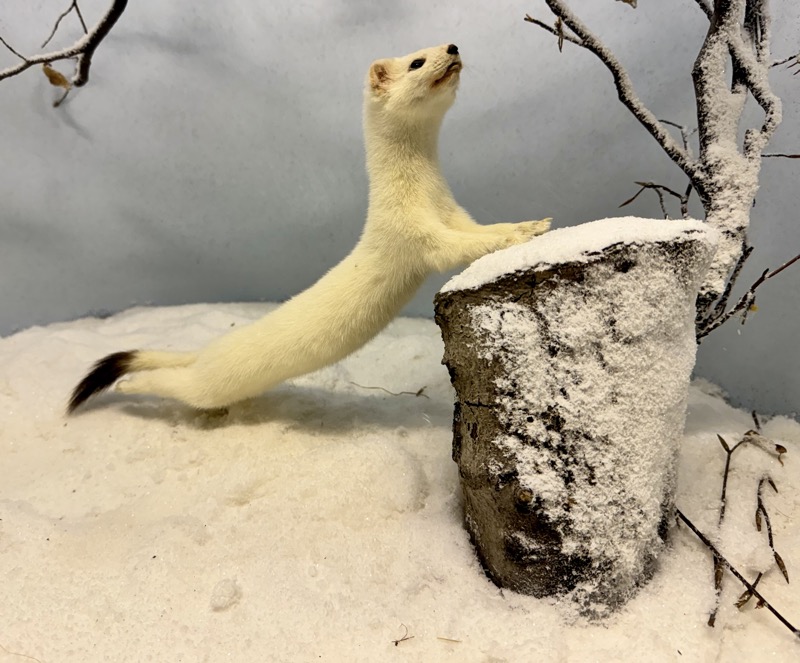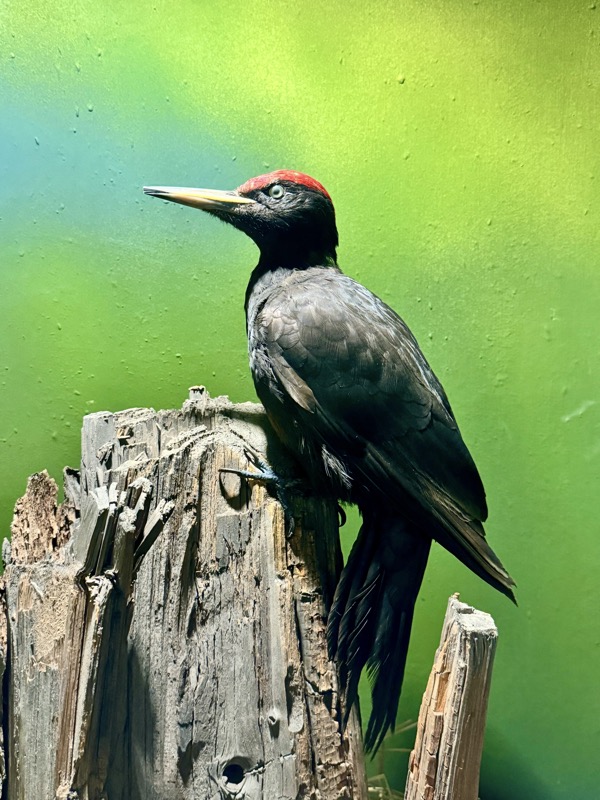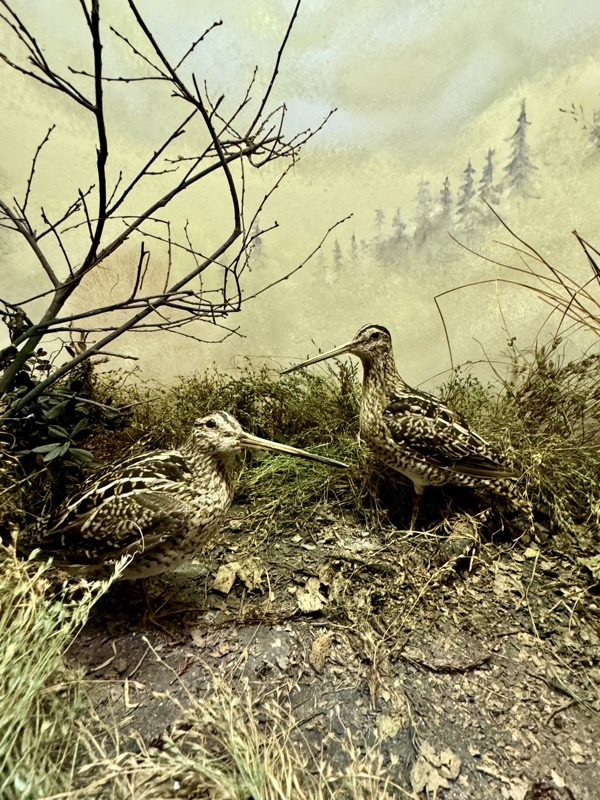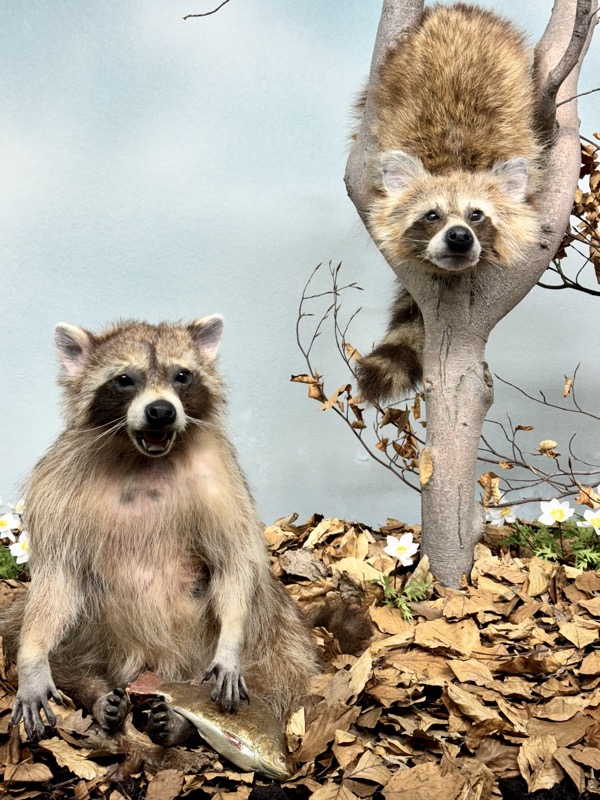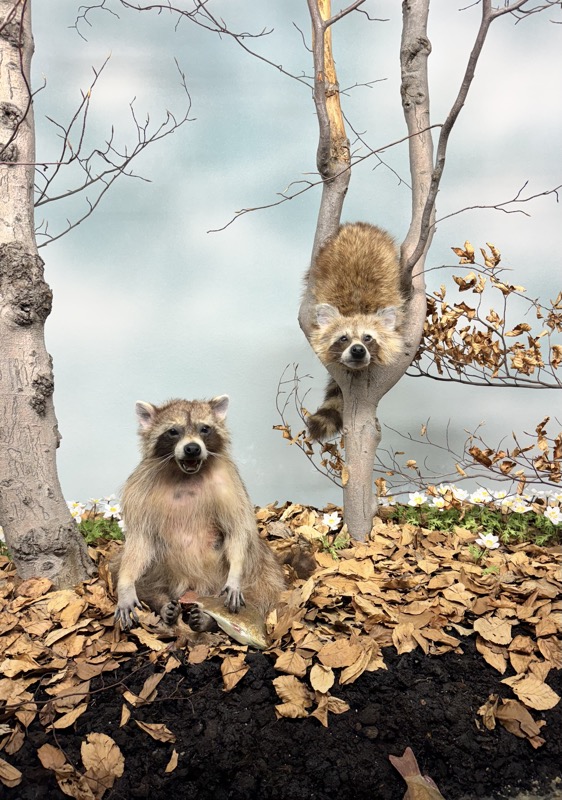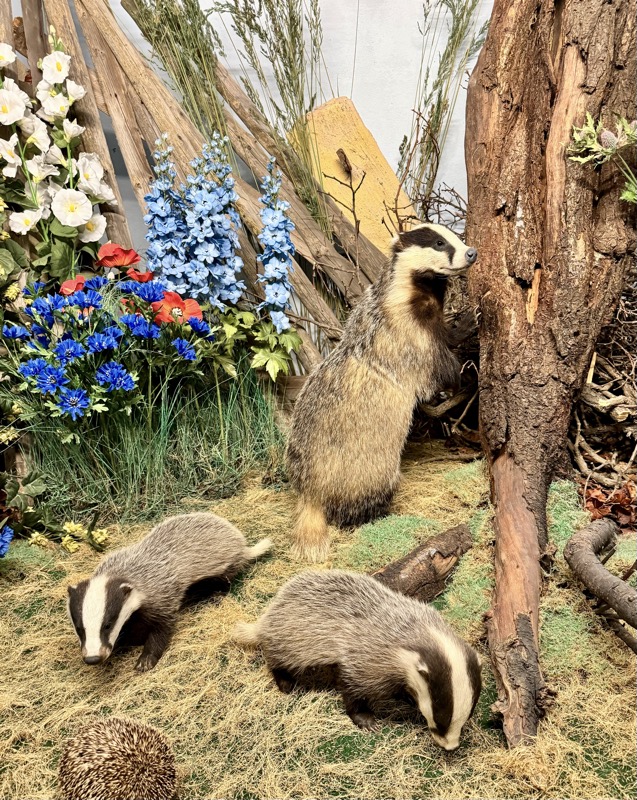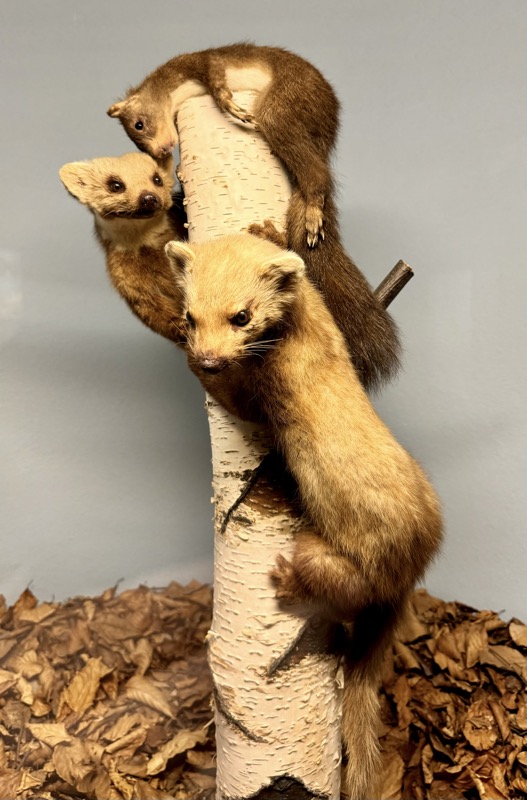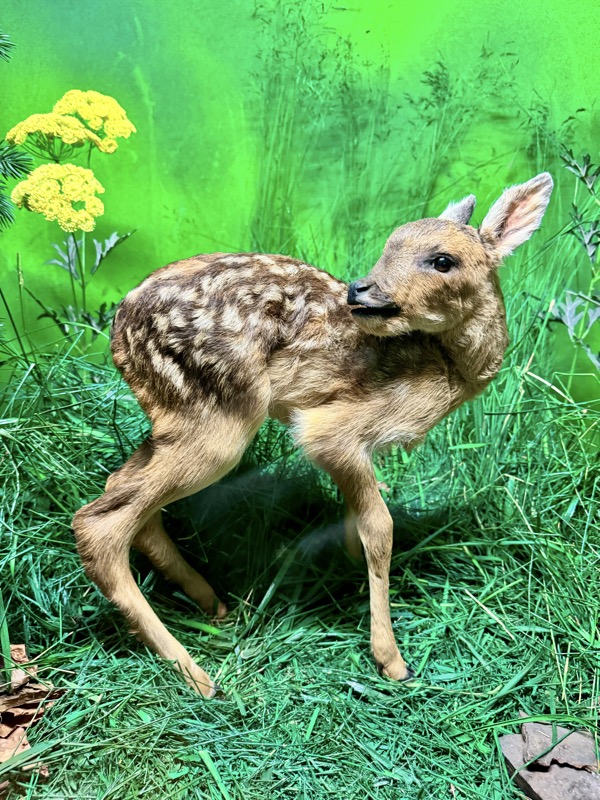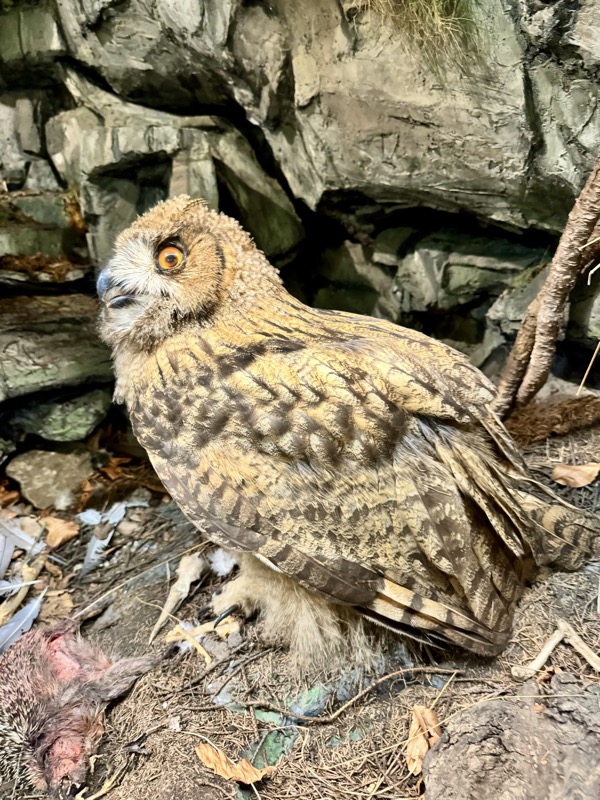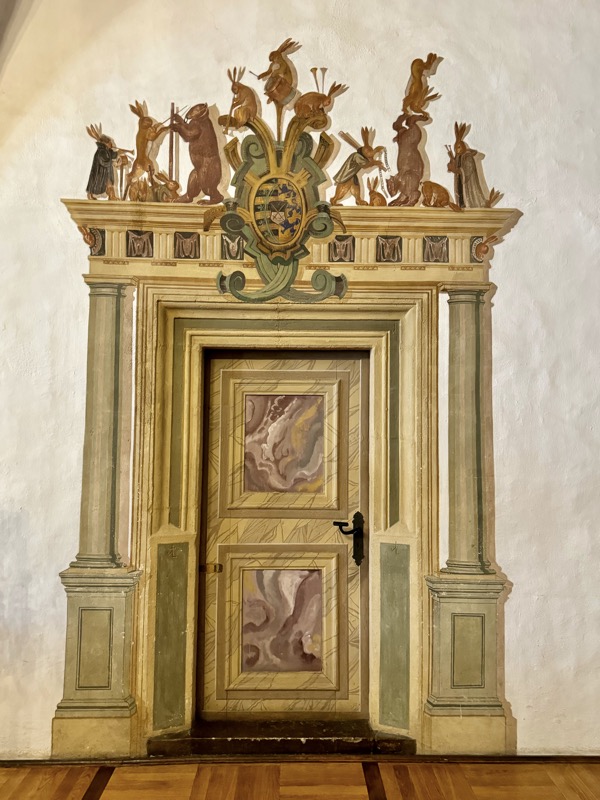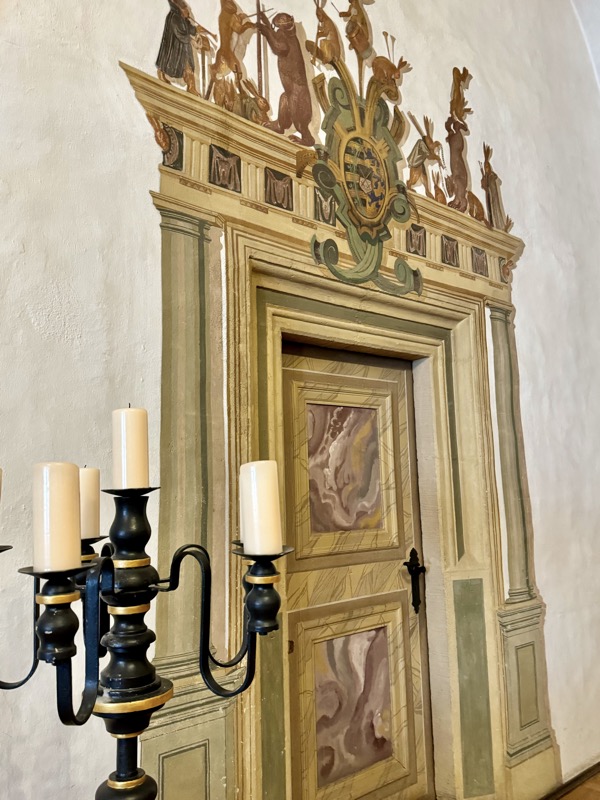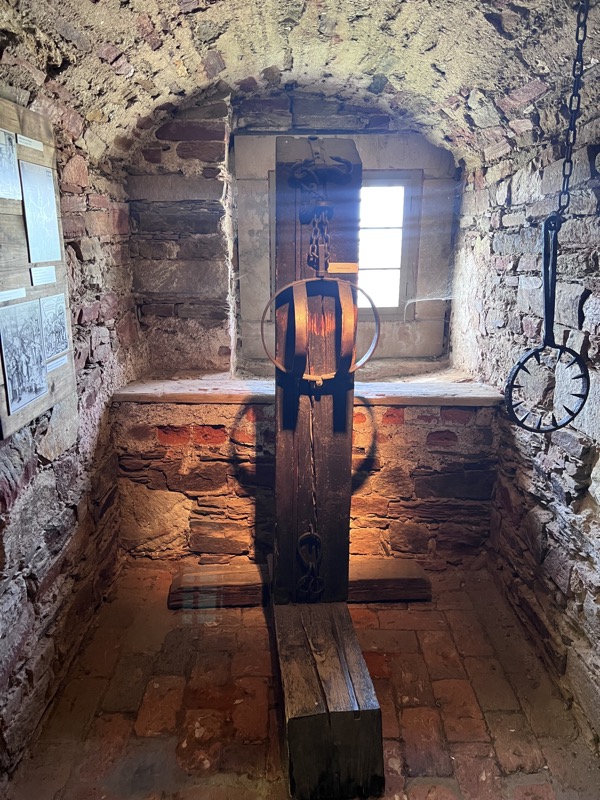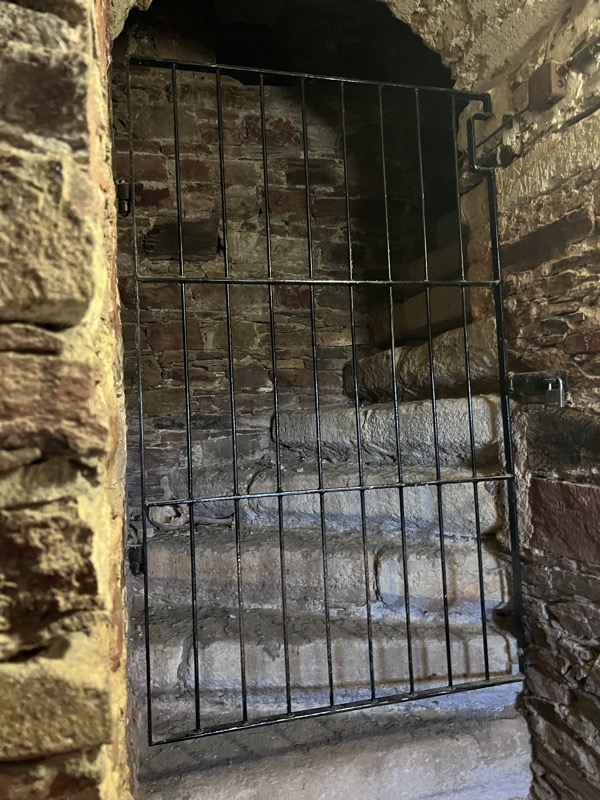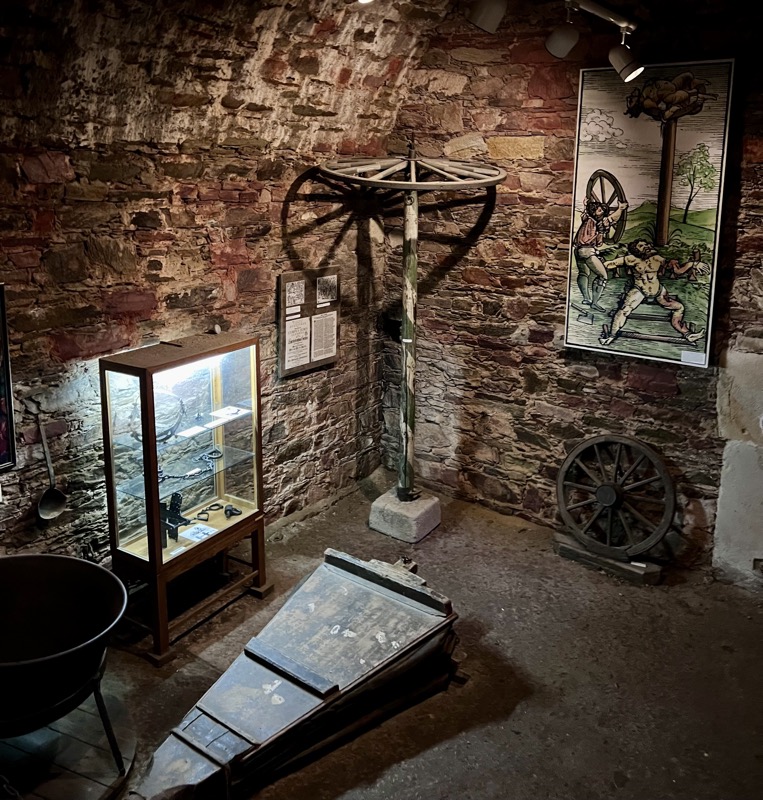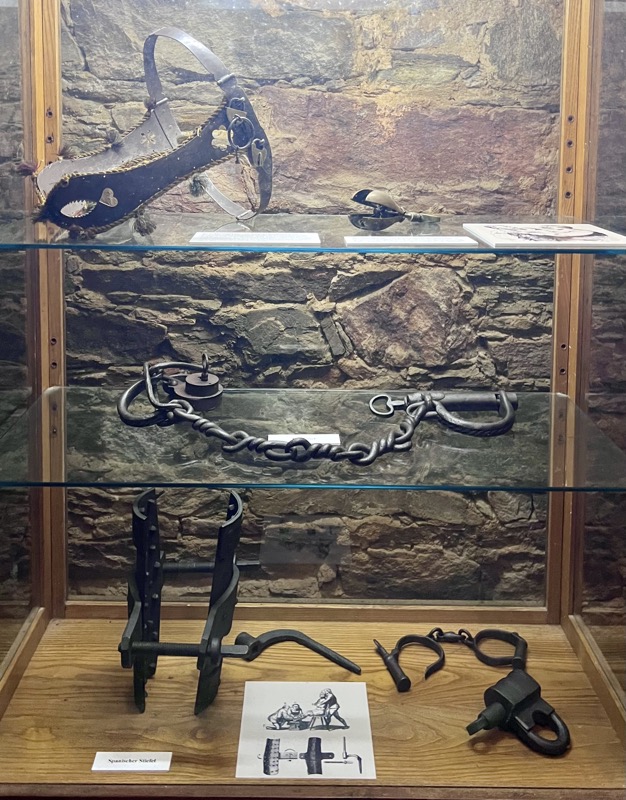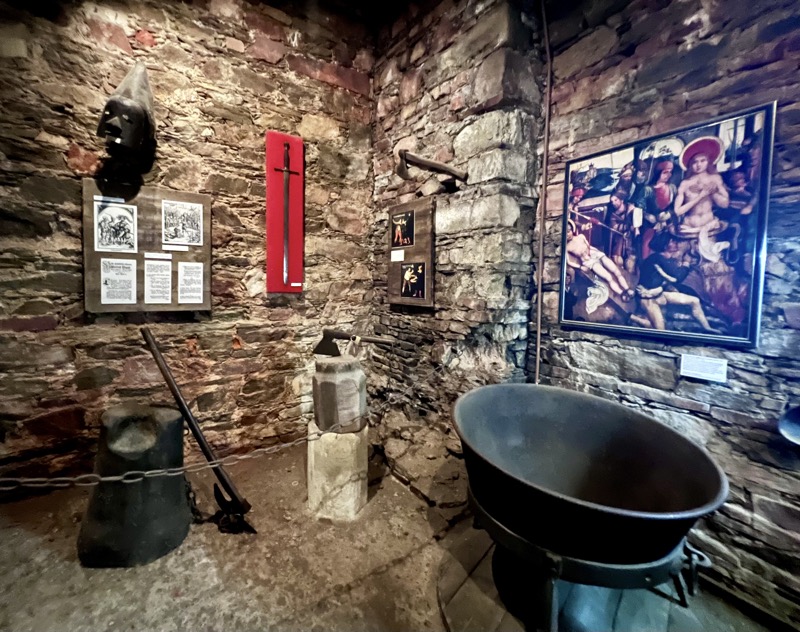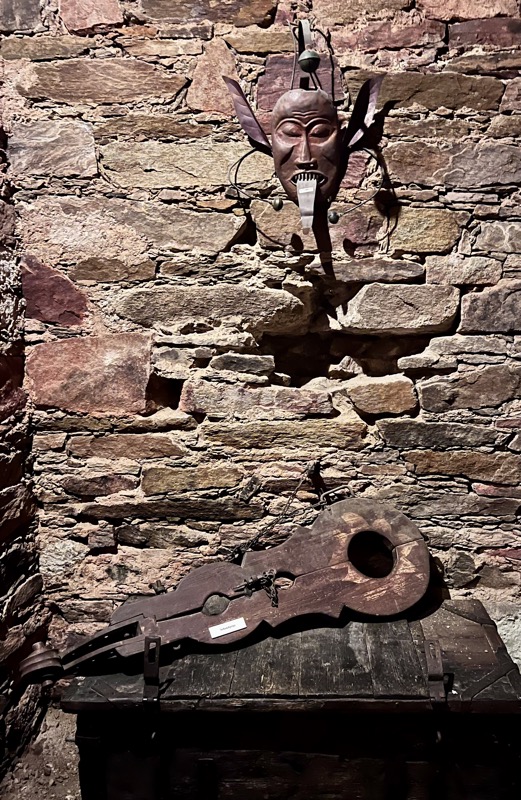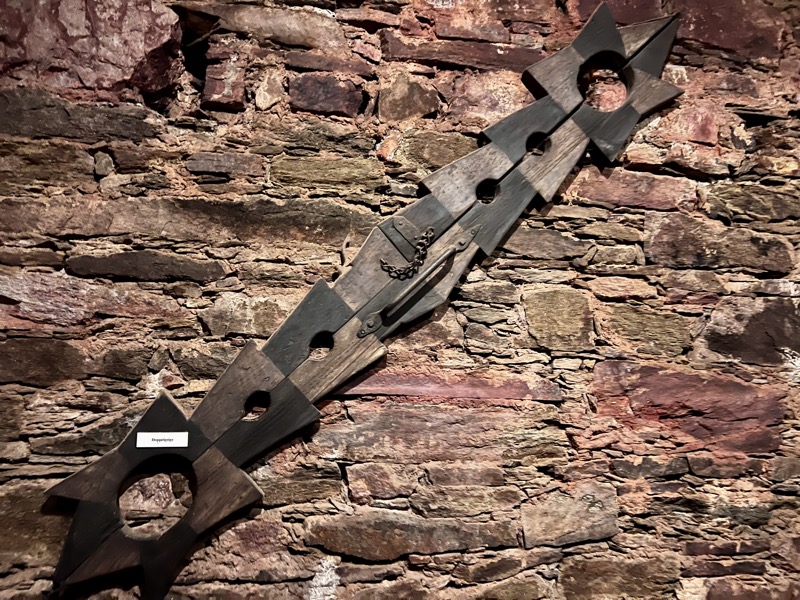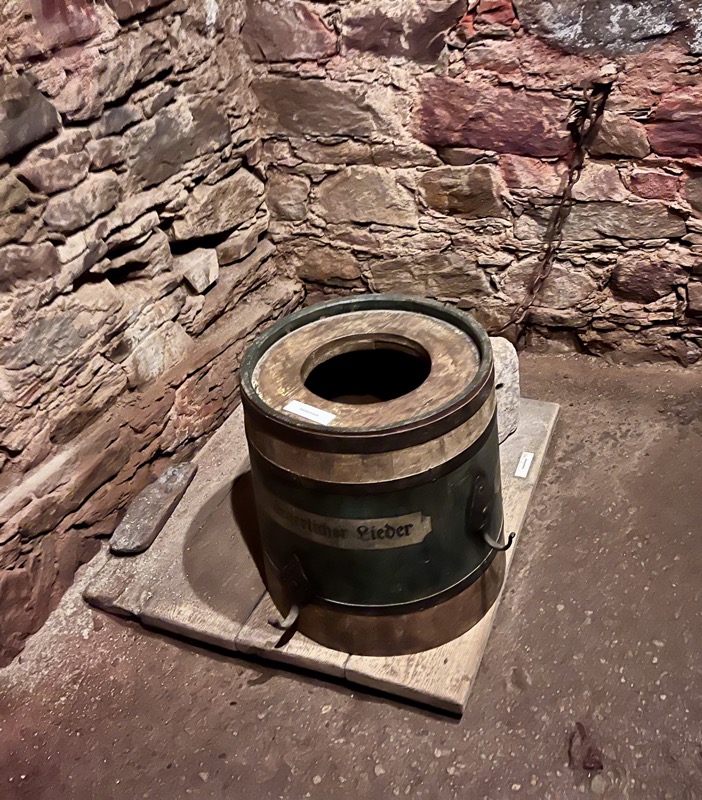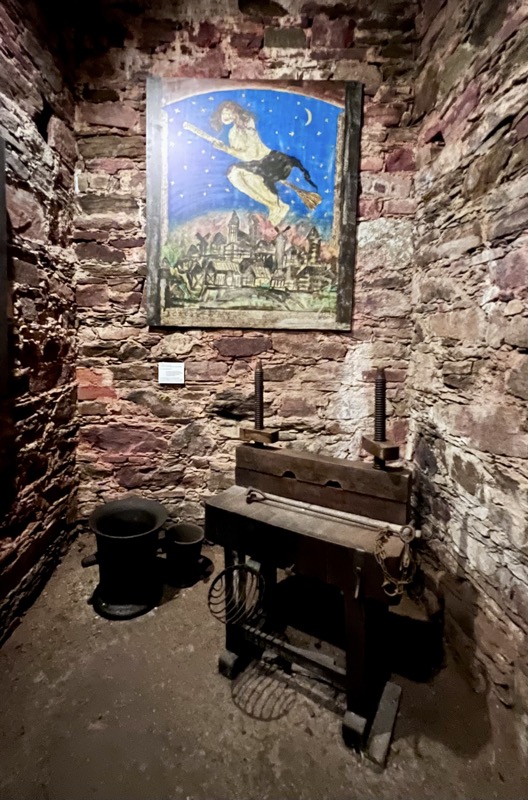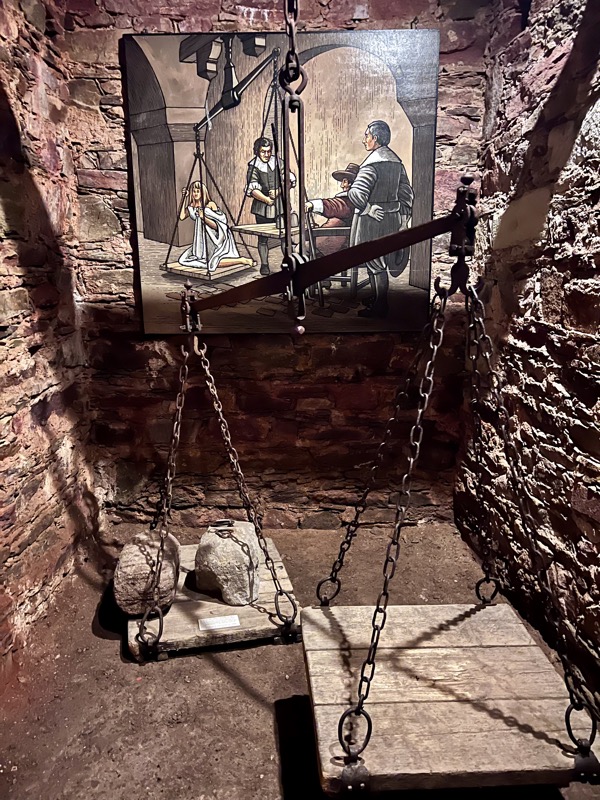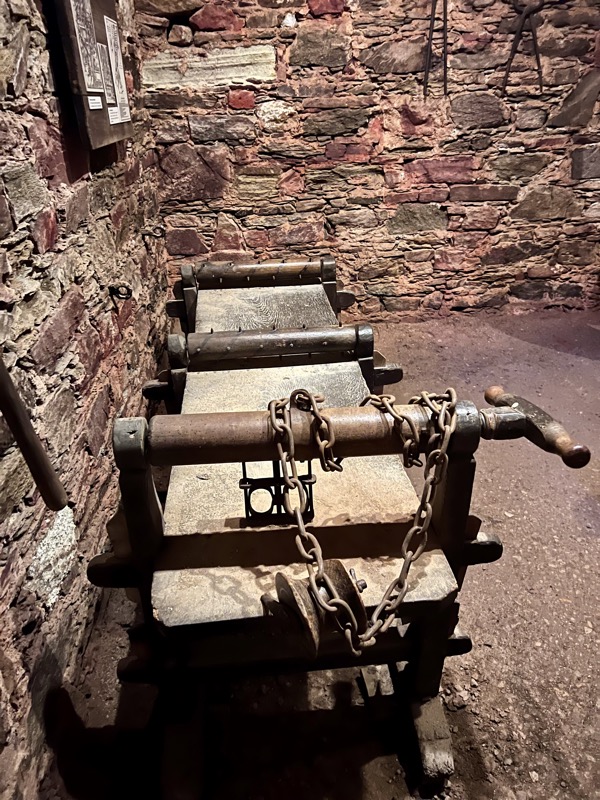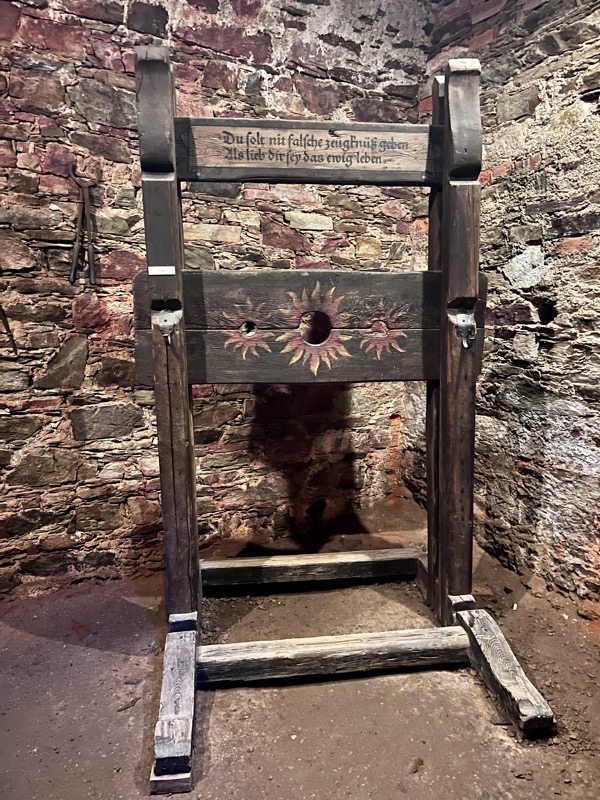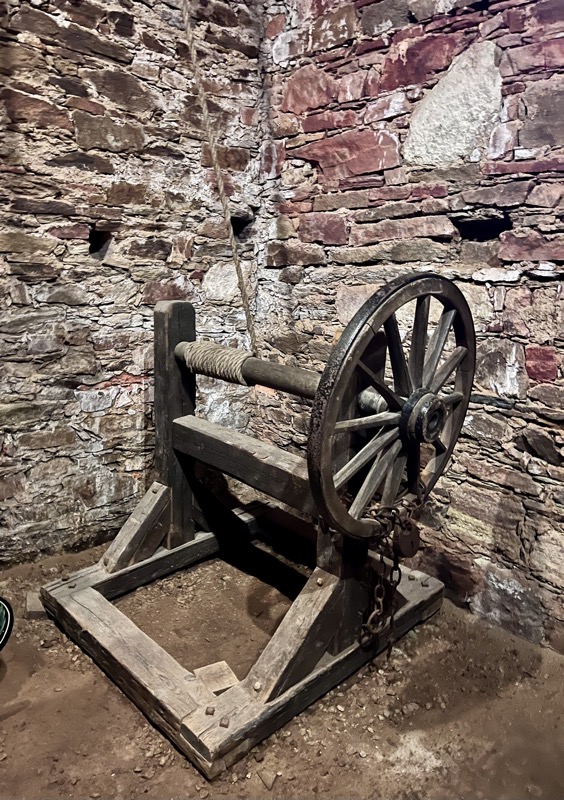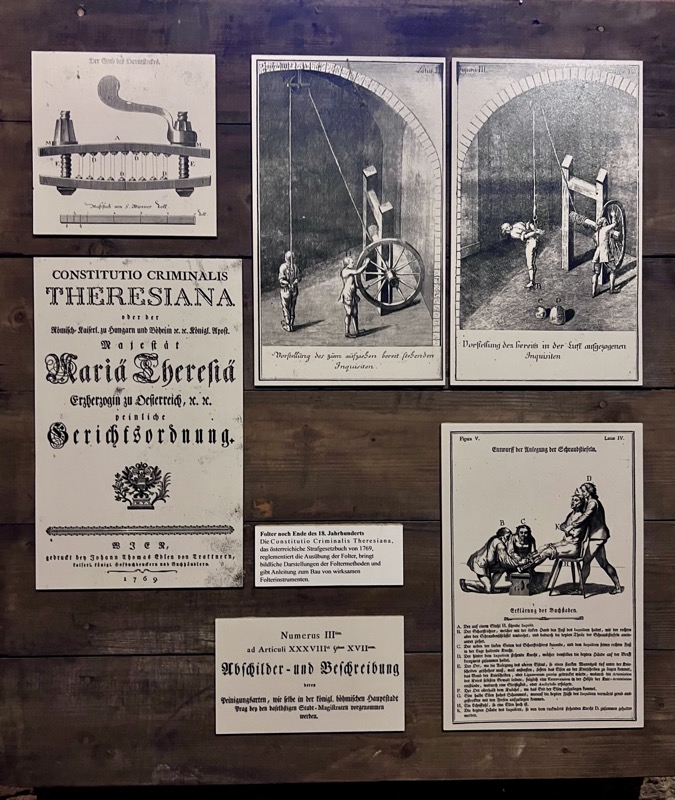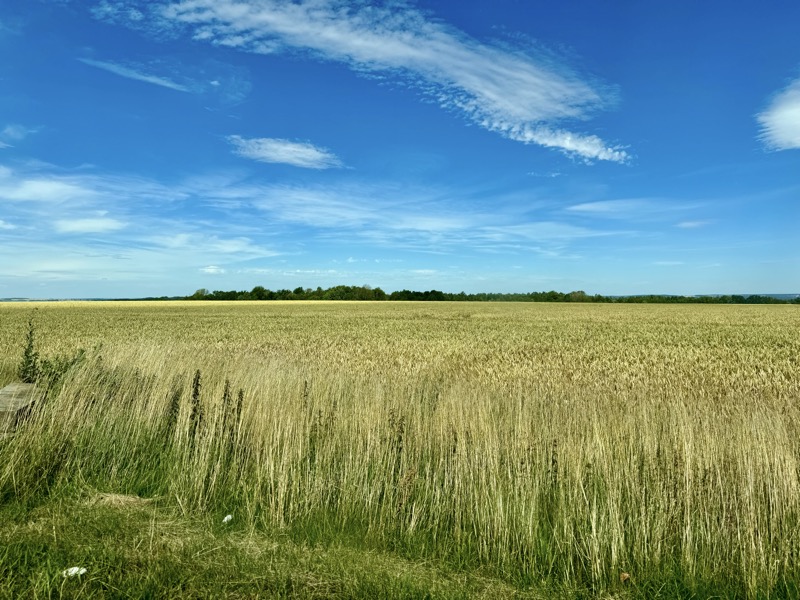Arrived in Bamberg after driving through a bit of a storm… deep water on the streets, some hail, small trees down – quite the mess. It’s always interesting seeing how other places deal with what in Brisbane is summer afternoon on a Tuesday. Seriously, this wee storm hit the news. You can tell their drains and systems are not set up for it at all, whereas when I was growing up, summer afternoon thunderstorms were a dime a dozen and at least a few a week. Roads are nasty when they don’t have sufficient storm surge drains.
Anyway, it all made for a pretty sunset, and if it hadn’t been raining still and if we had noticed the sky turning bright red sooner, we would have tried to bop around to the Rat Haus for a photo of it in the cool colours. Knew it would be gone by the time we got there though… so the shot below is not my photo!

Wandering through the old town towards the famous Bamberg Altes Rathaus, we saw many cool wood and stone buildings typical of these small German towns. They’re so picturesque and quaint, it’s lovely to just walk through and admire the buildings.
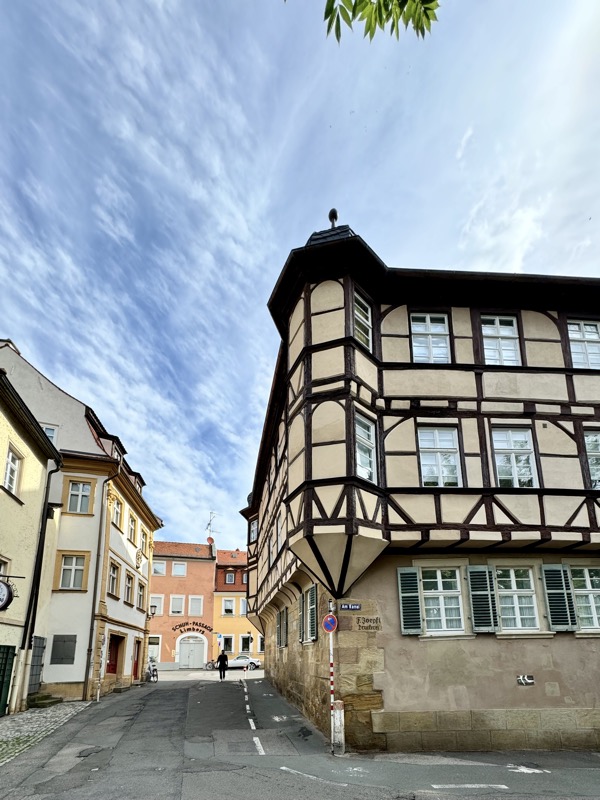
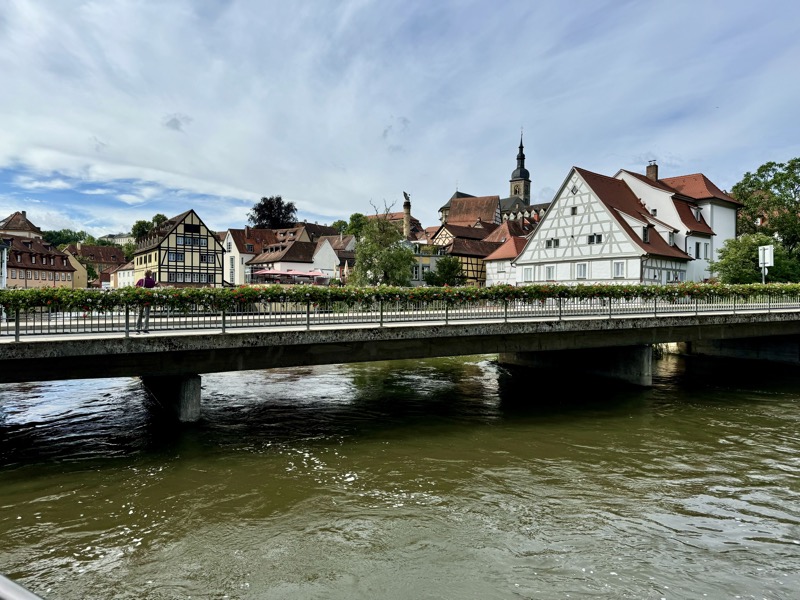
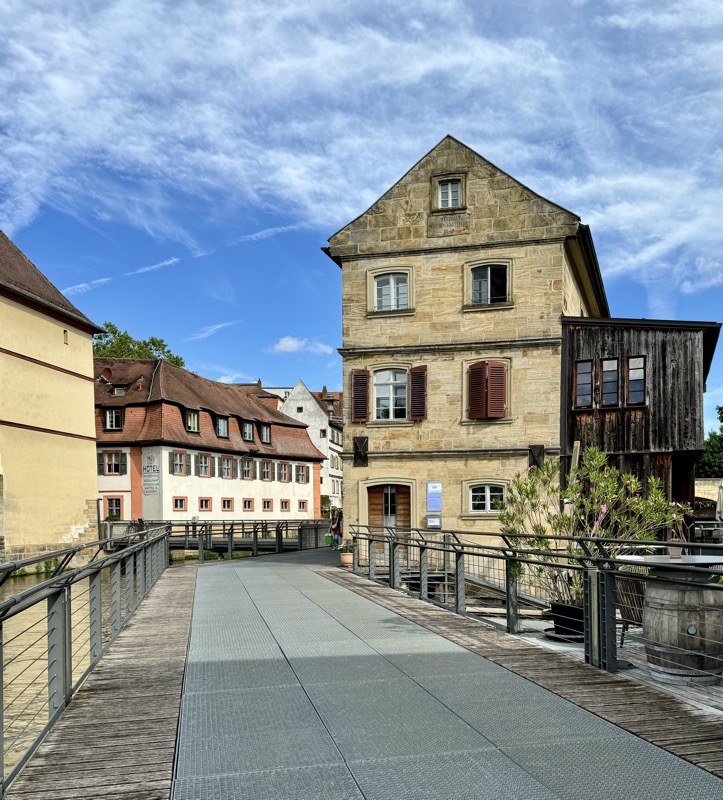
The Altes Rathaus or town hall was first mentioned in records in 1387. It is also known to have been rebuilt in 1461 and 1467 to its current state; during those construction stages, it fortunately kept its Gothic style.
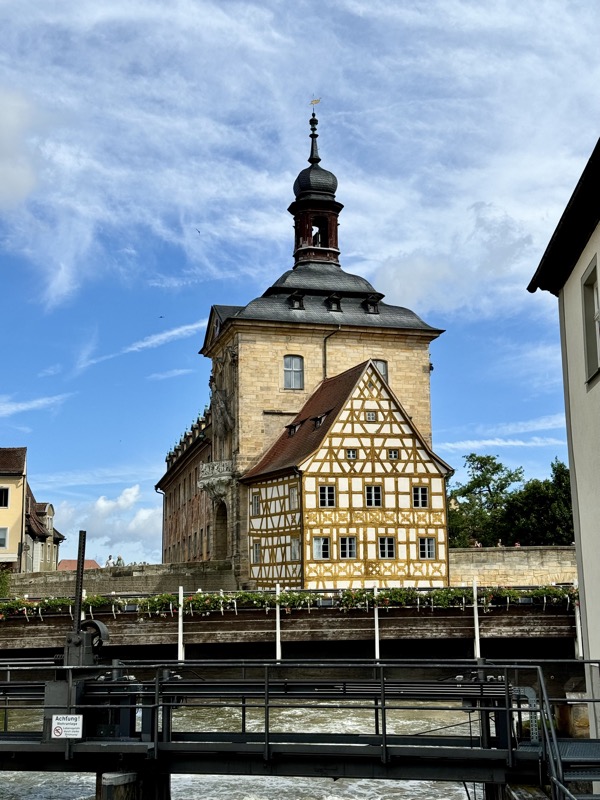
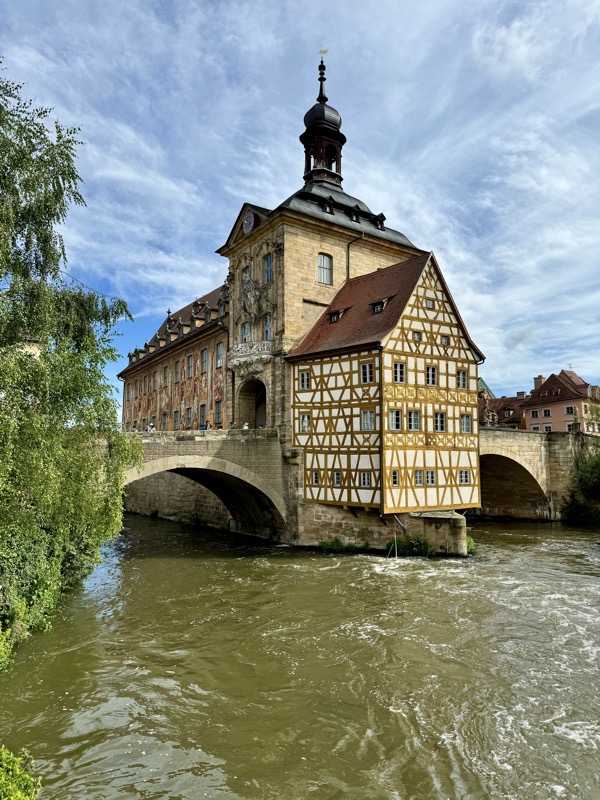
Johann Jakob Michael Küchel redesigned the Altes Rathaus in a more Baroque and Rococo between 1744 and 1756. The Altes Rathaus is the most iconic symbol of Bamberg built into the middle of the River Regnitz, between the Upper and Lower Bridges.

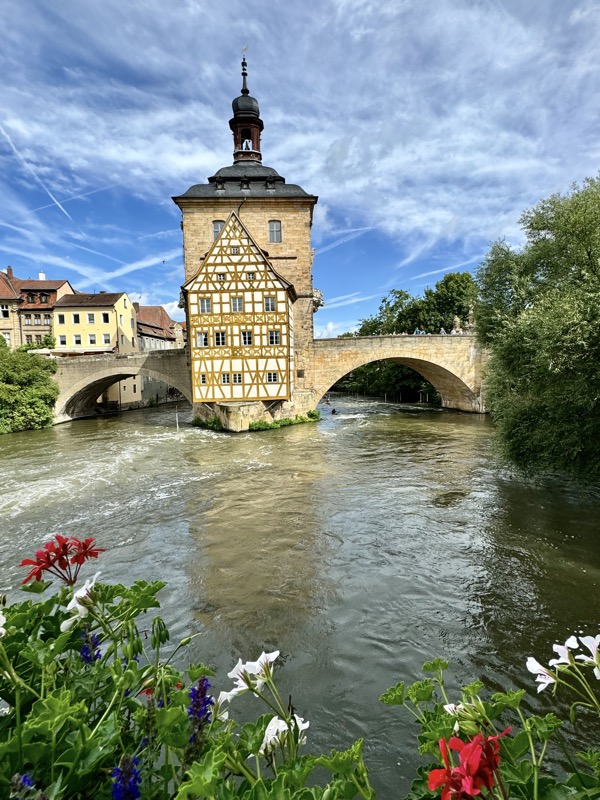
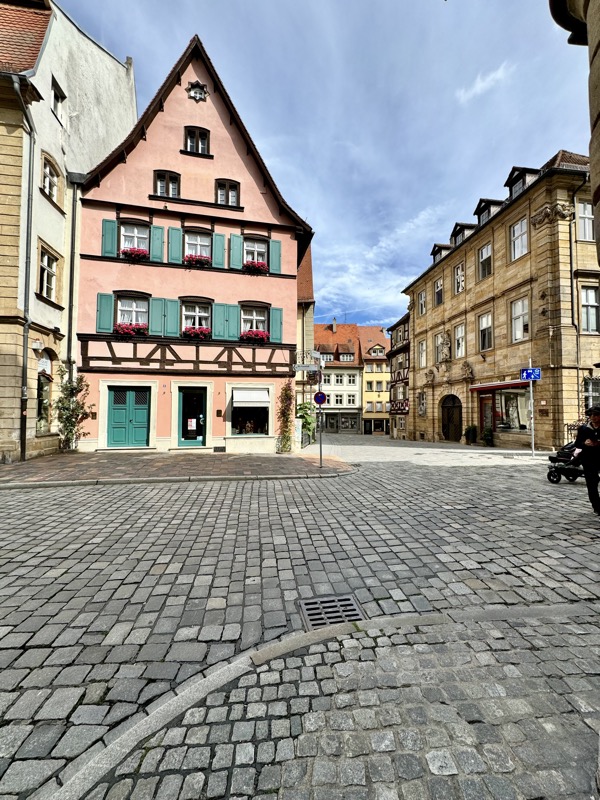

The facade paintings were originally created by Johann Anwander in 1755 but they have been restored many times. In the Post WWII era, the paintings were particularly faint and dirty, and a painter named Anton Greiner was commissioned to repaint them between 1959 and 1962. Both sides of the Rathaus are completely decorated with allegorical scenes and trompe l’oeil architectural details.
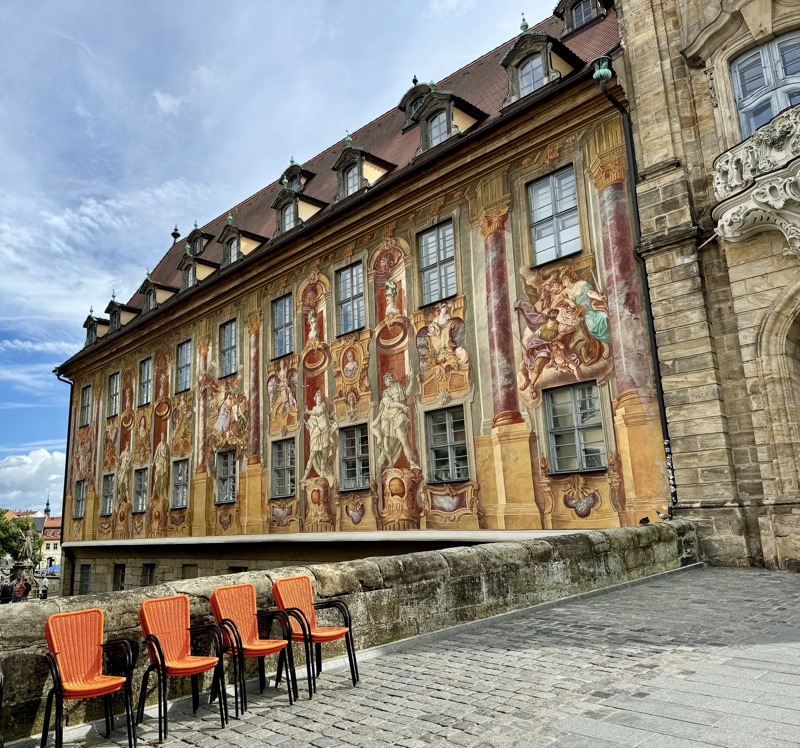
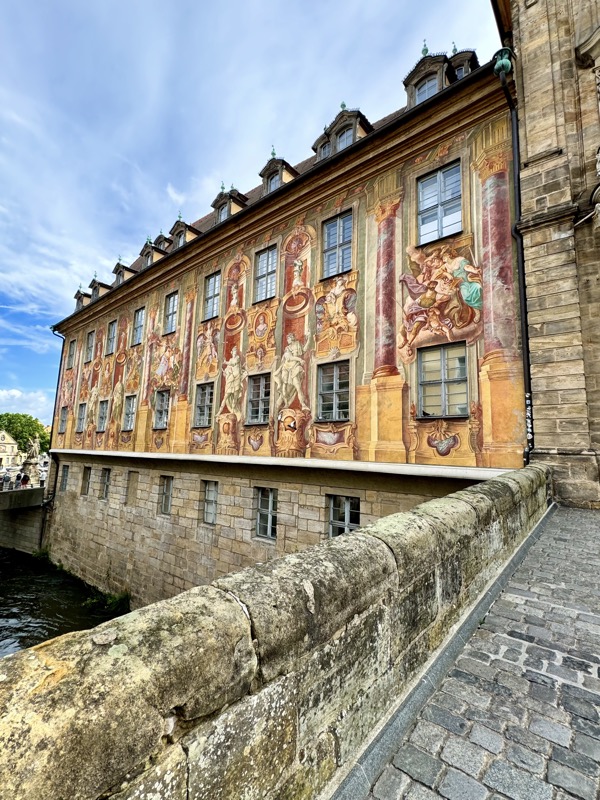
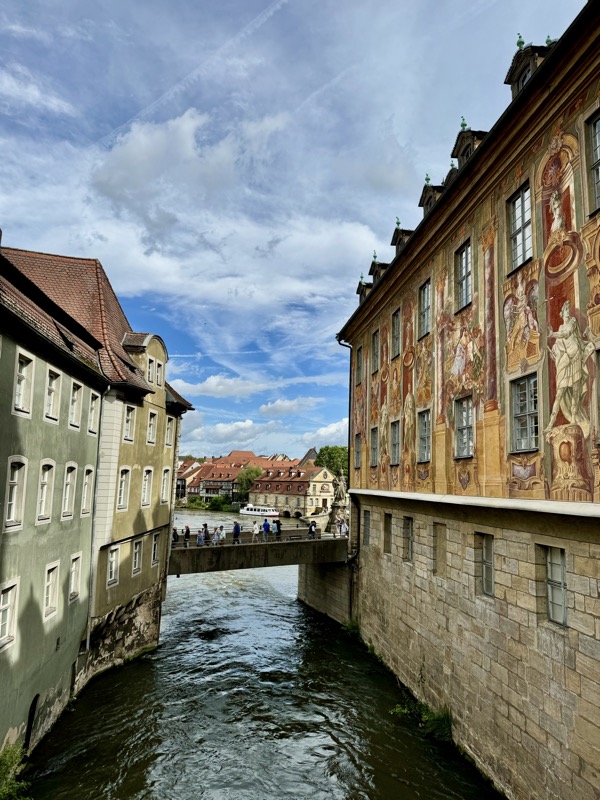
If you look below the Rathaus, you can see some churning water which local kayakers have set up into a slalom course. There must have been a dozen of them in the water on the gentle rapids while we were there.
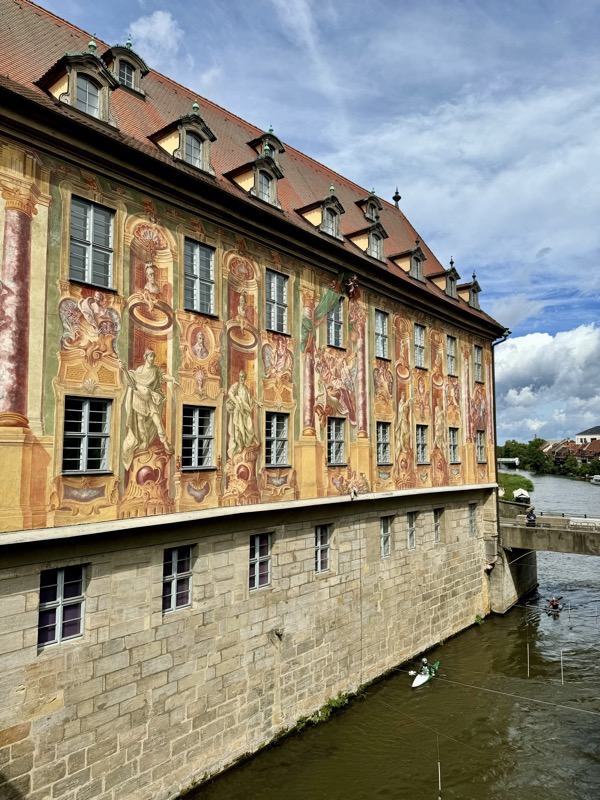
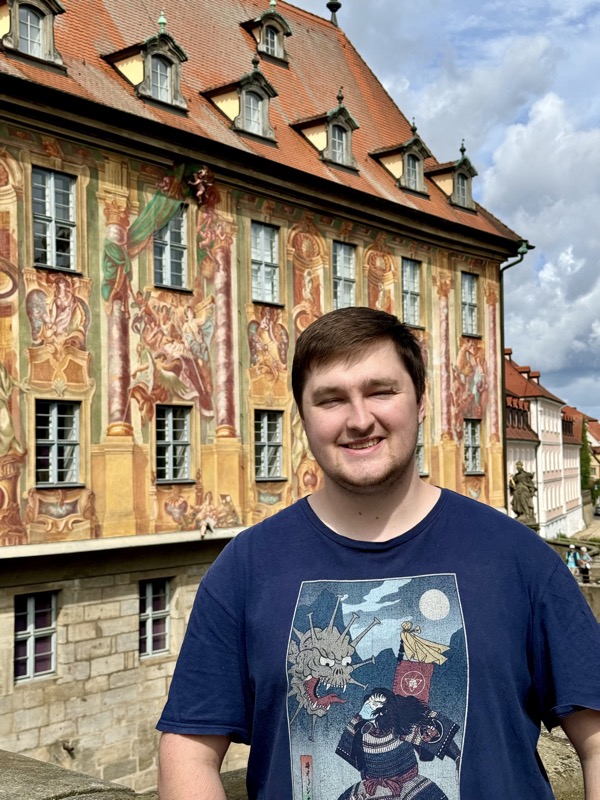
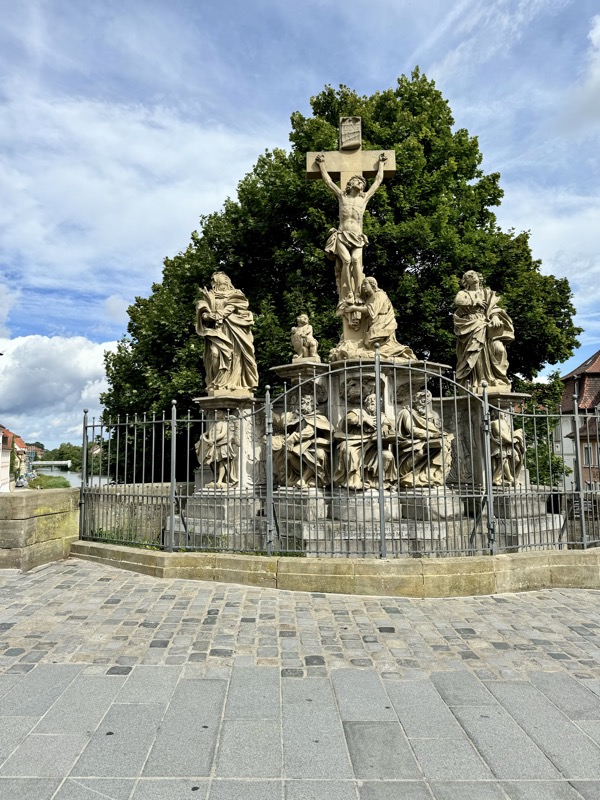
Facade of the Goldschmiede area – shops full of jewellers.


Brauhaus row.
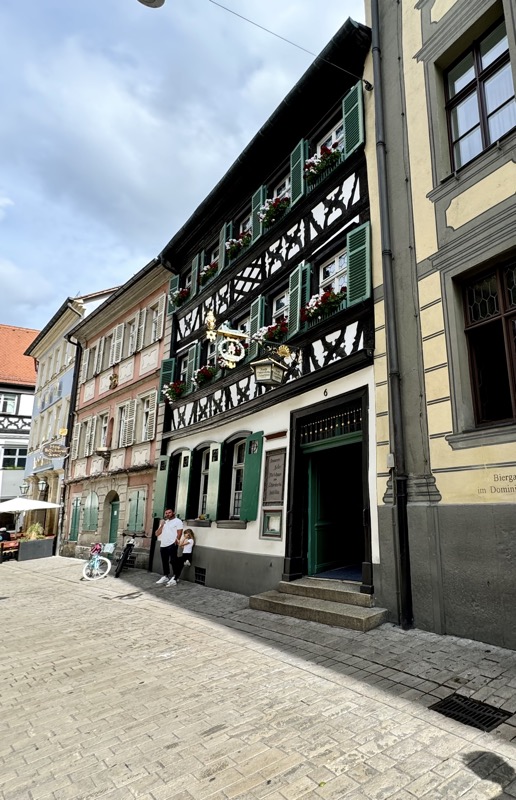

Wandeirng up towards the Cathedral Dom.

It was a fair bit steeper than you led us to believe, Google Maps…
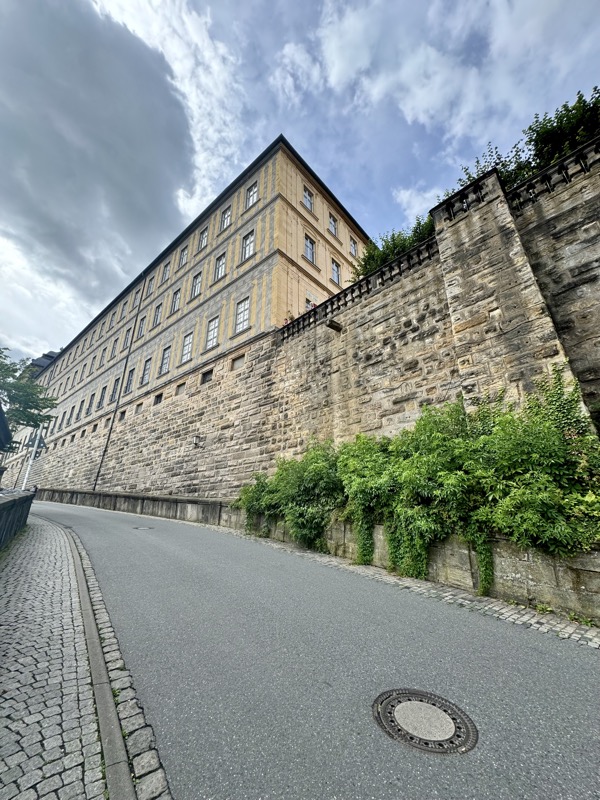
Sadly, the Cathedral is usually closed on Sunday mornings (presumably for services), and today it wasn’t opening at all, but this did weirdly lead to a free entracne to the nearby Bamberg History Museum.
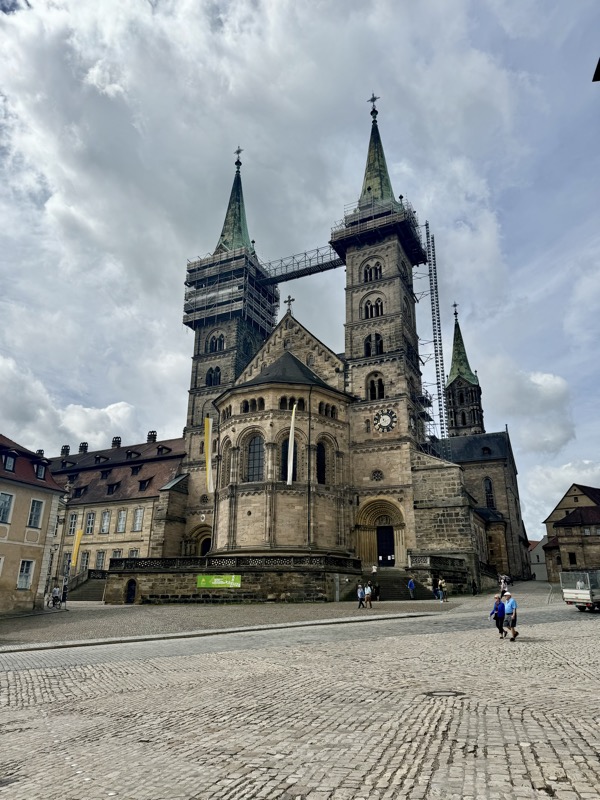

The Old Court House houses the Bamberg City Museum.

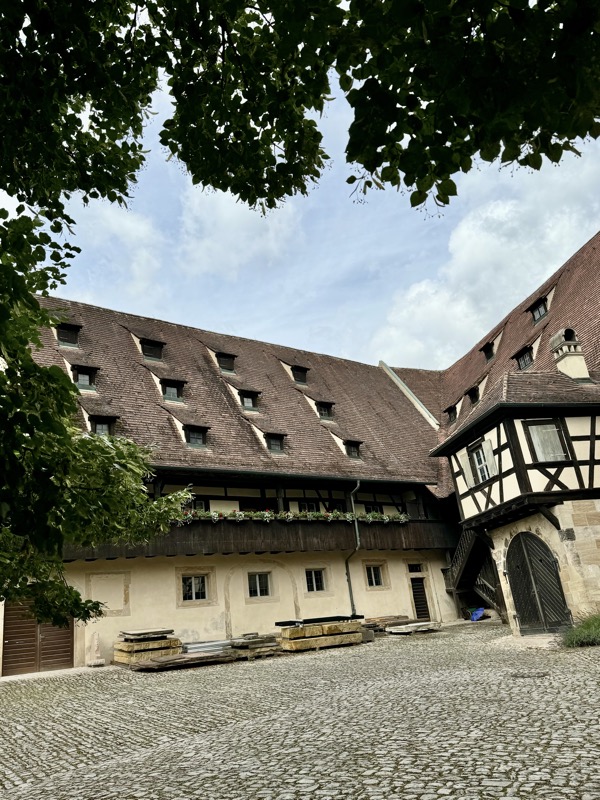
Saints Henry and Kunigunde, Unknown artist/s, c.1370, sandstone.
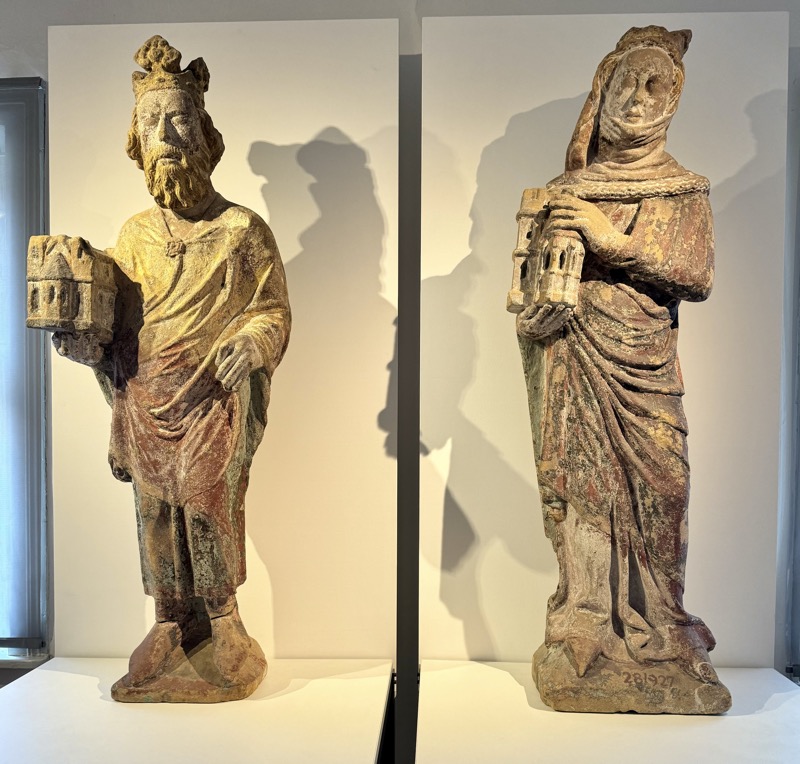
Crucifixion, Unknown Southern German copied from Christoph Schwartz, (Munich, 1545-1592). Oil on wood.
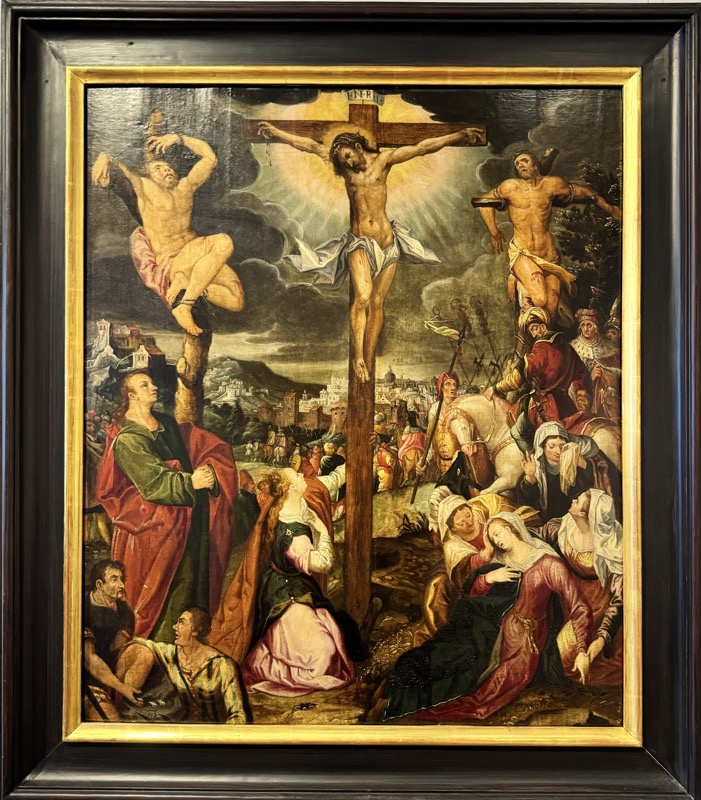
LEFT: Death of the Virgin, Unknown Franconian artist, late 15thC, oil on wood.
RIGHT: Death of the Virgin, Unknown Southern German artist, 16thC, oil on wood.
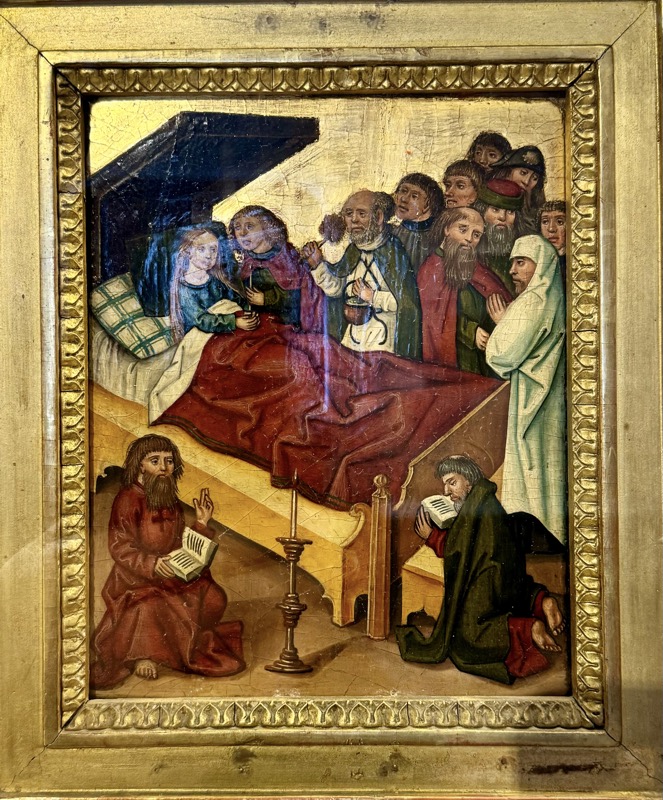
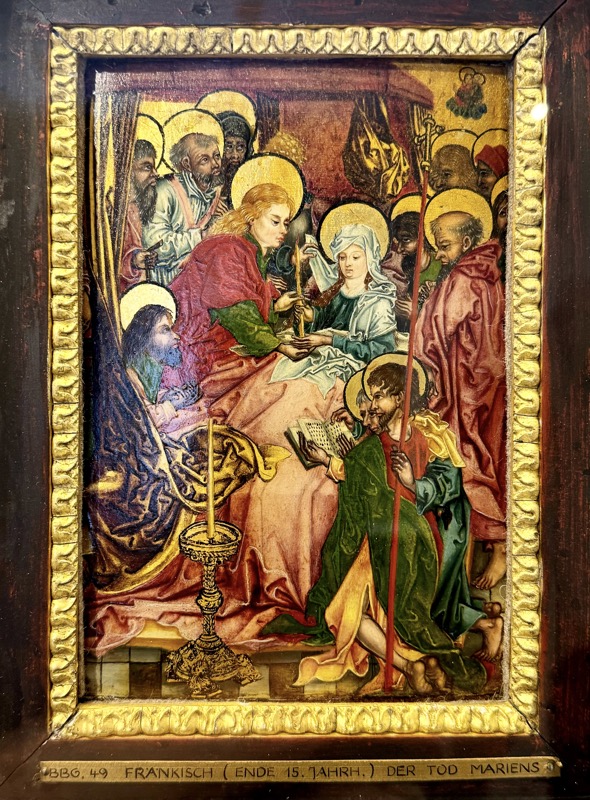
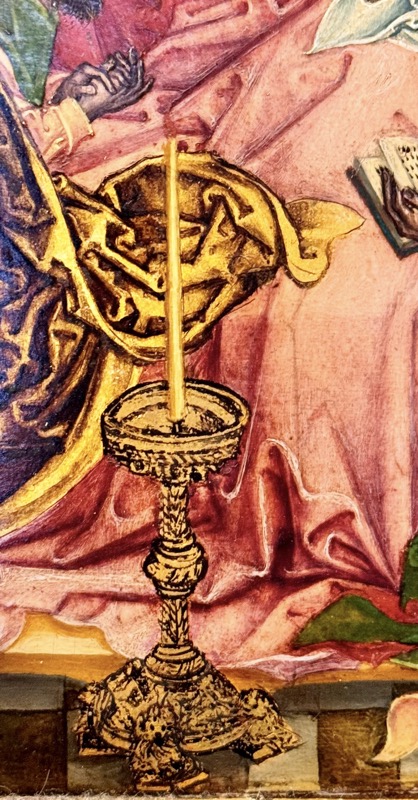
Reading Mary with Child, crowned by Angels. Unknown Dutch artist, early 16thC, oil on wood.
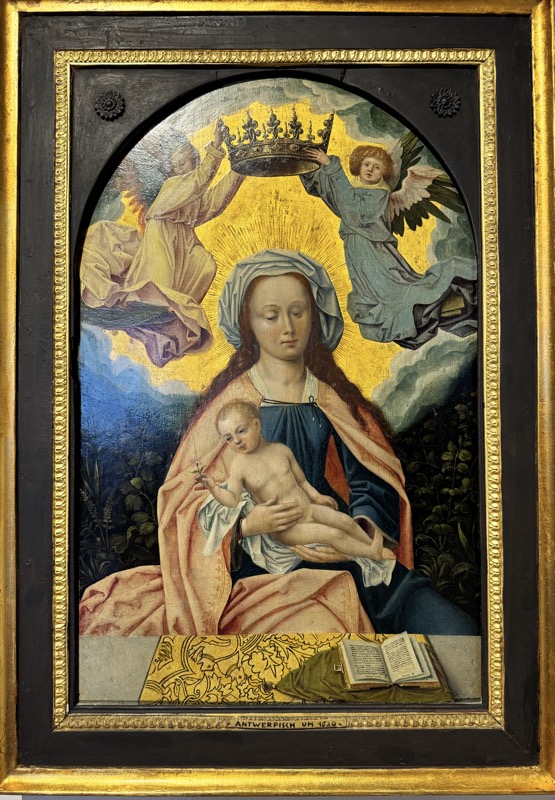
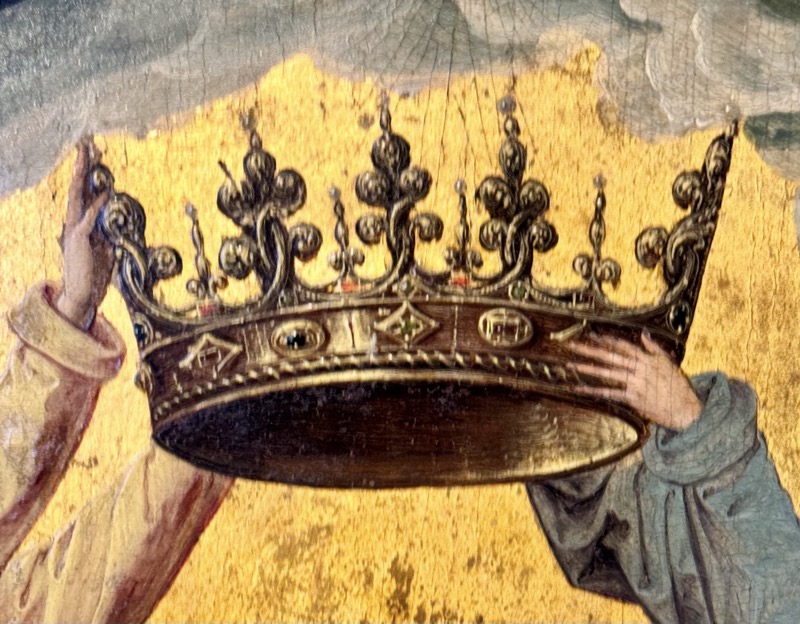
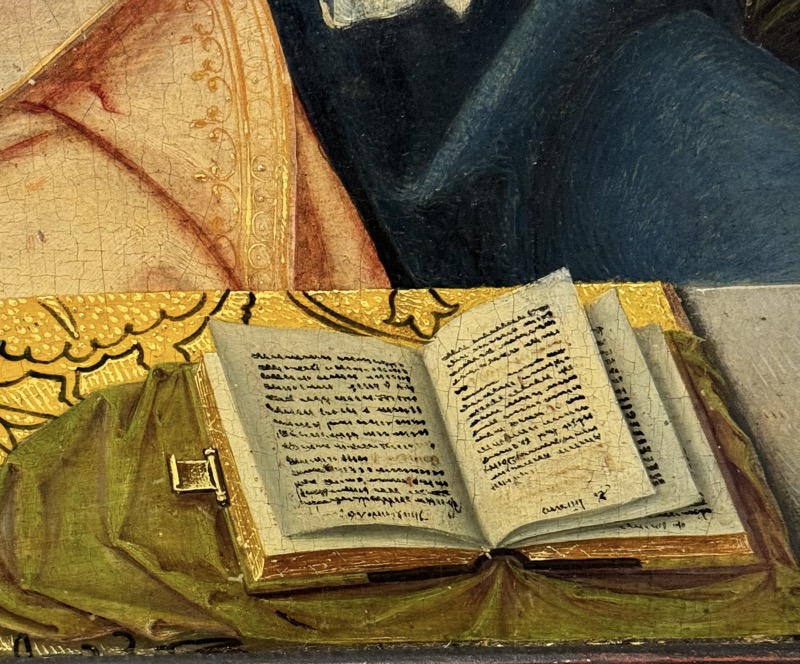
Death of the Virgin (again!), Workshop of Hans Pleydenwurff, (Bamberg 1420-1472), c.1460, oil on wood.
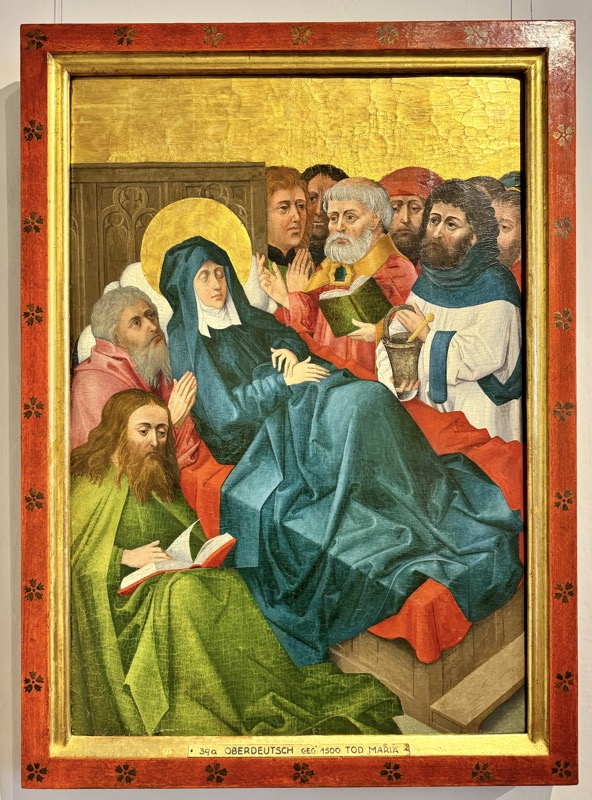
Bamberg Clare Altar, form the Workshop of the Master of Bamberg Clare, c.14500/1500, oil on wood.


Hortolona, the mother of Saint Clare in prayer, Unknown Nuremberg artist, c.1360, tempera on oak.
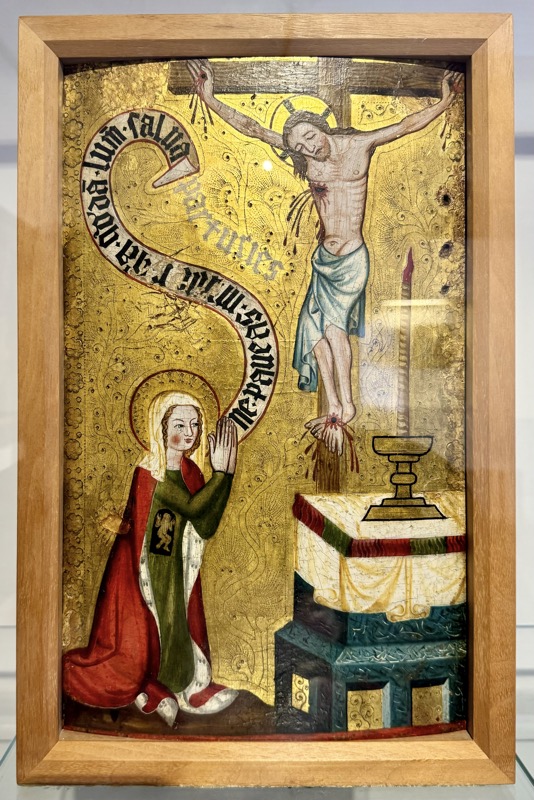
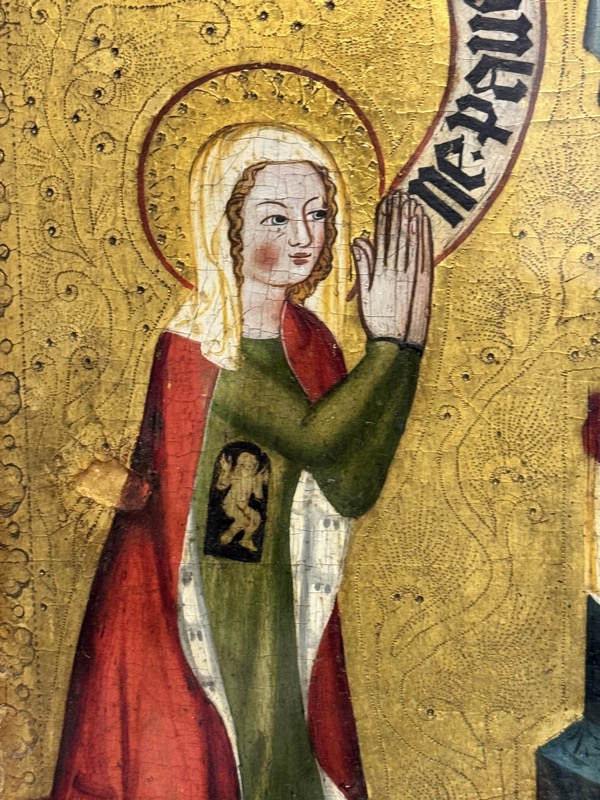
Saint Clare Raises the Dead, Unknown Nuremberg artist, c.1360, tempura on oak.
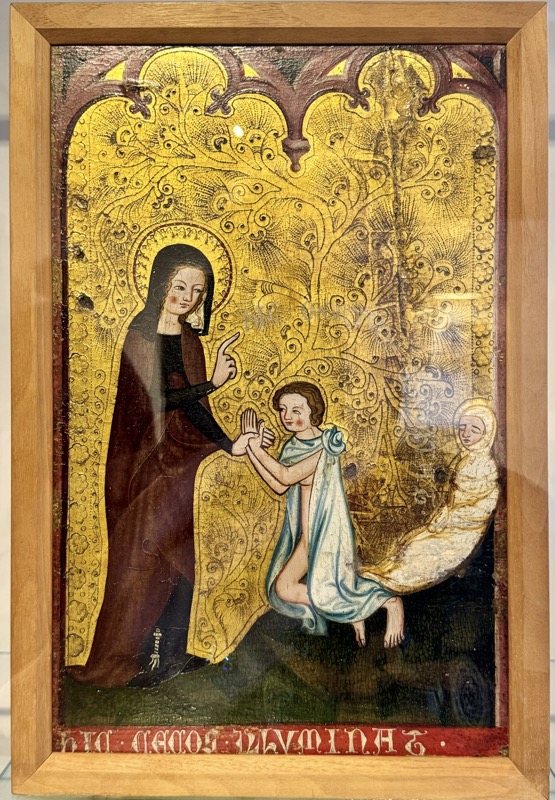
Jesus and John the Baptist as Children, Lucas Cranach the Elder, c.1535. Oil on wood.
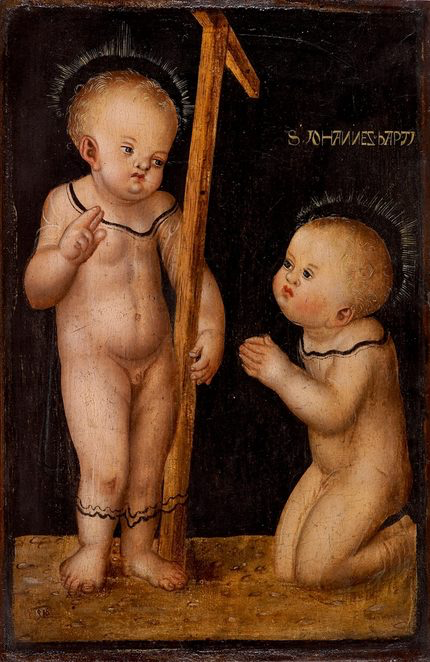
The Ploughshares Legend, Unknown Franconian artist, City of Bamberg, c.1550-1600, oil on wood.
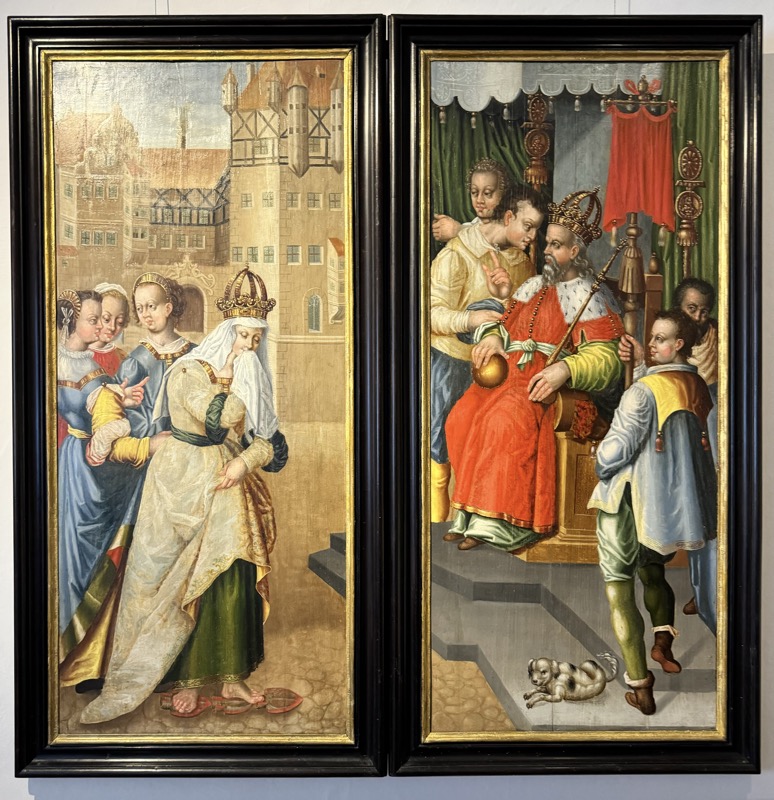
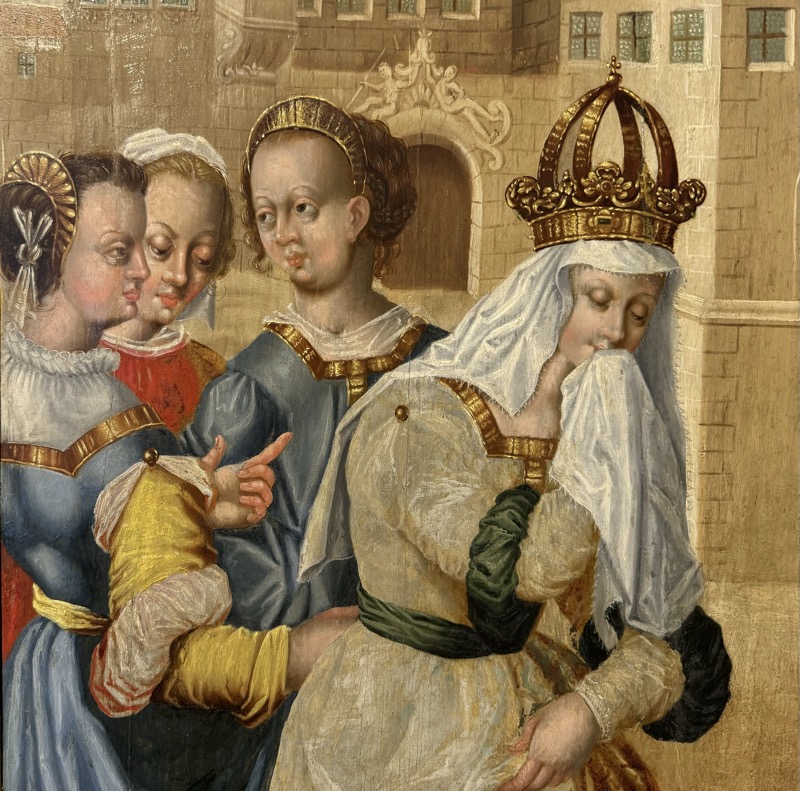
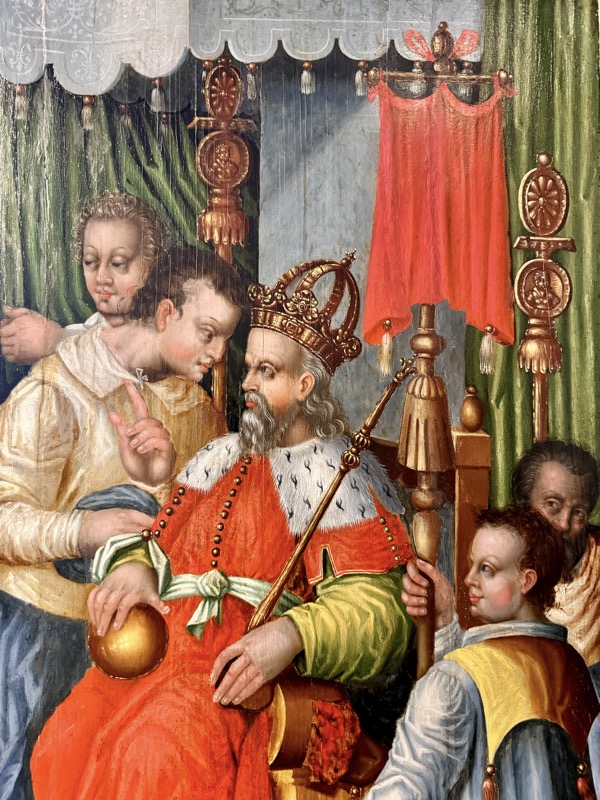
The Penny Miracle, Unknown Franconian artist, Bamberg Municipality, c.1550-1600. Oil on wood.
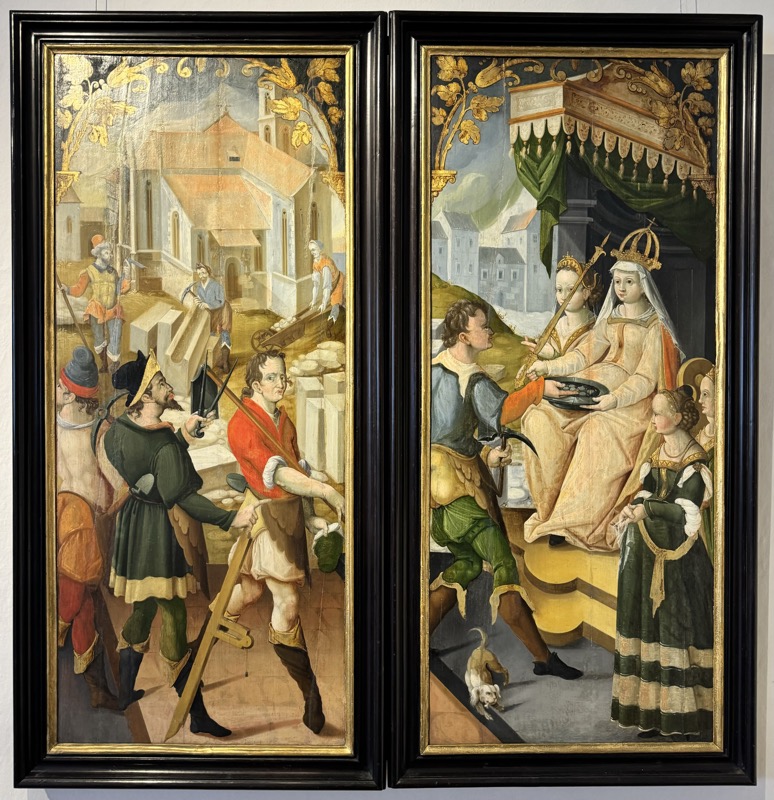
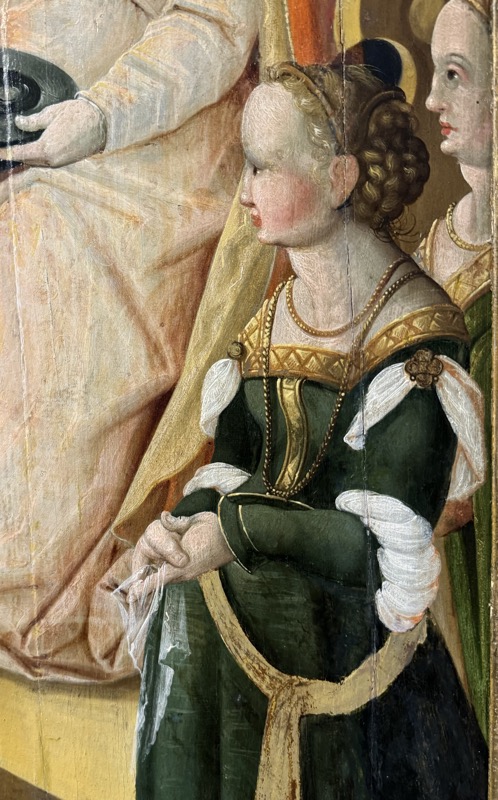
Saint Catherine, Unknown South German artist, Late 15thC, tempera on wood.
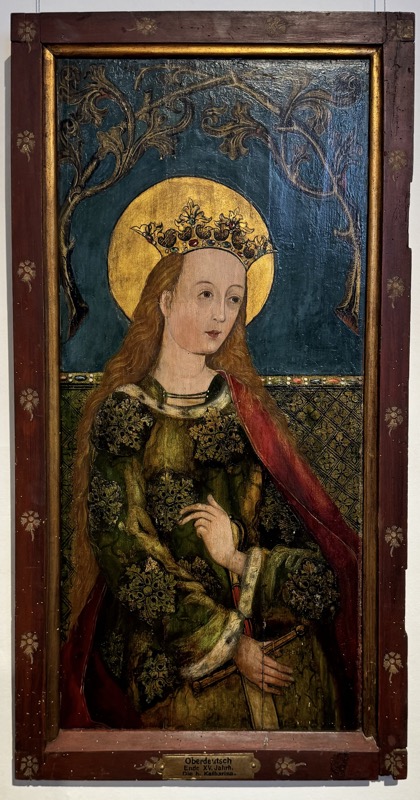
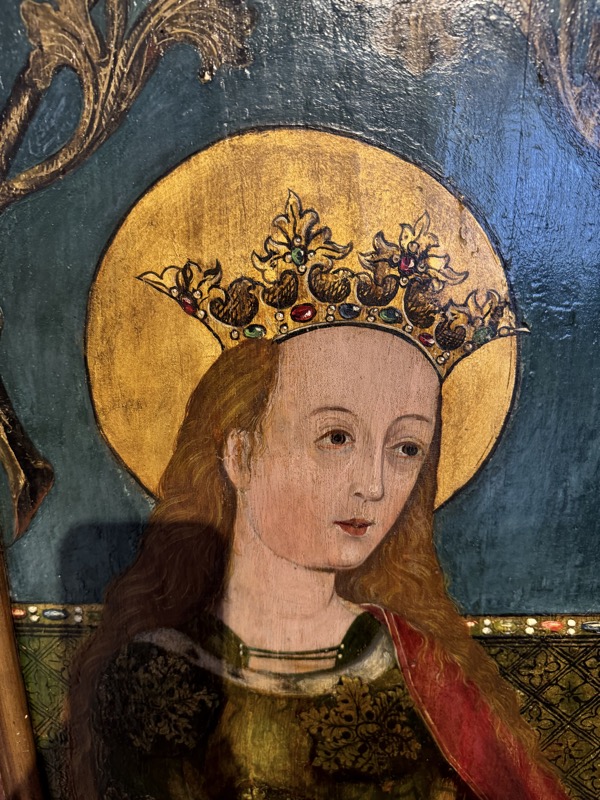
The Adoration of the Magi, Unknonw artist, copy after Lucas Cranach the Elder, c.1600, oil on wood.
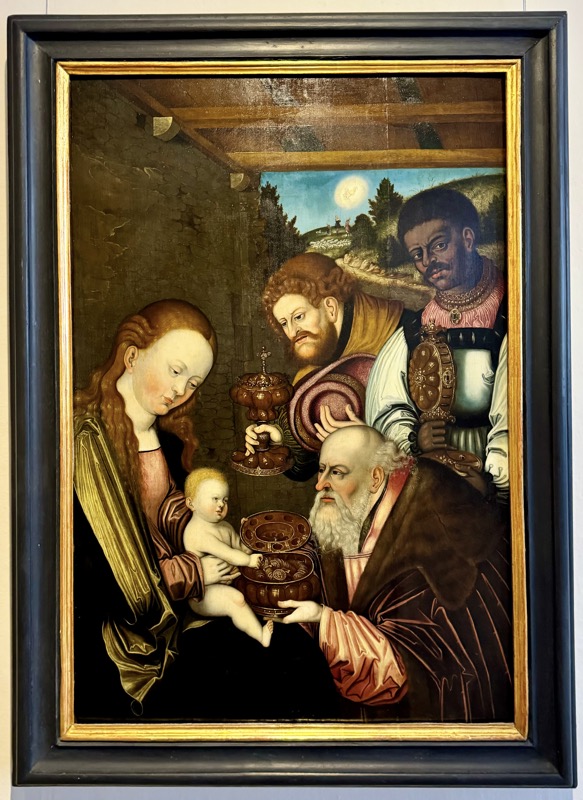
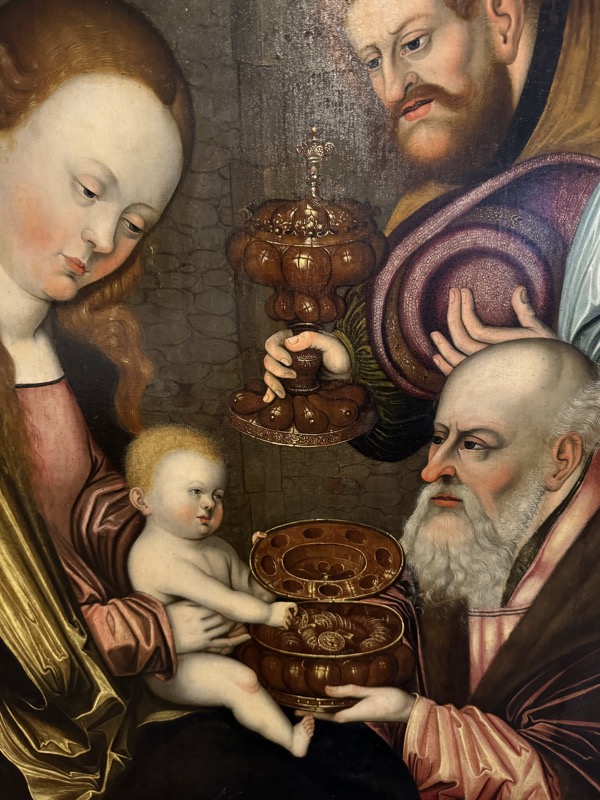
Portrait of the Mayor of Cologne, Peter von Heimbach, artist: Bathrolomäus Bruyd (Wesel of Cologne, 1493-1555), c.1545, tempera on wood.
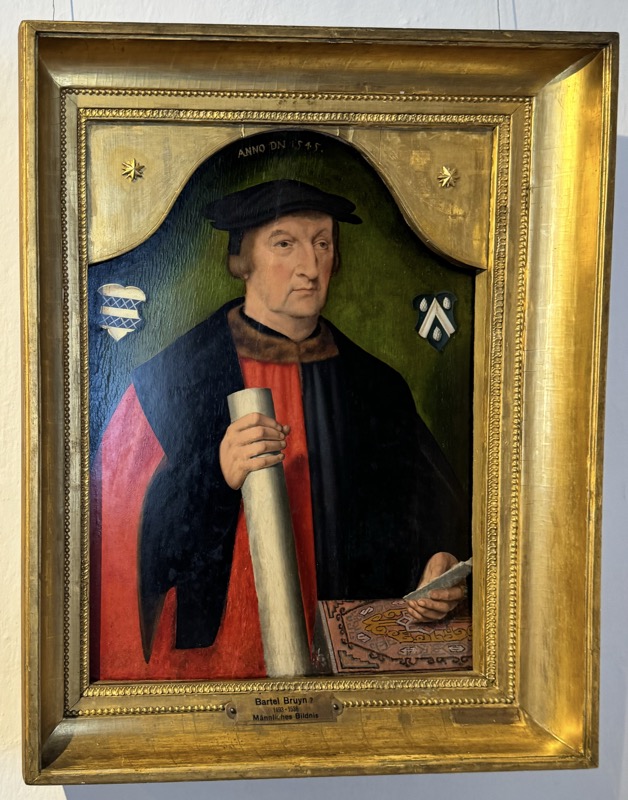
Young Bacchus, Unknown Roman artist, 17th-18thC, oil on canvas.
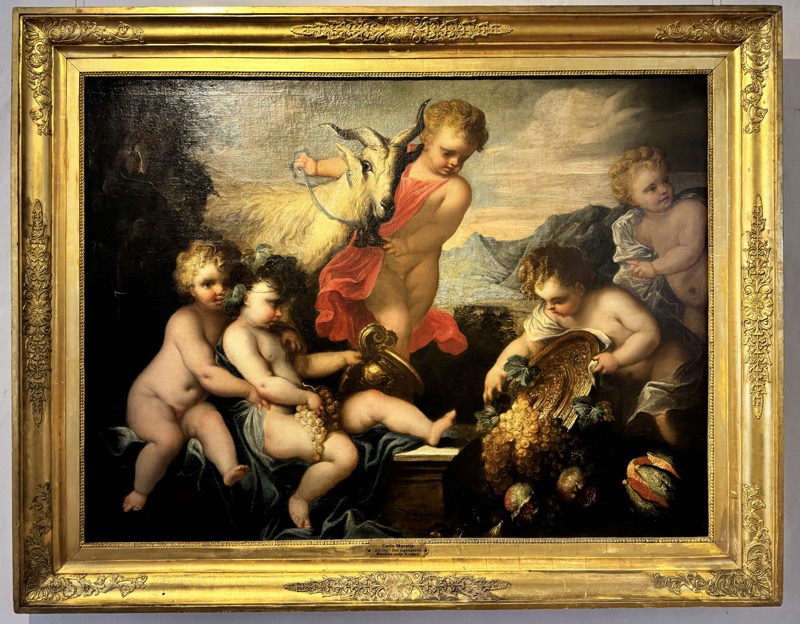
Young Bacchus, circle of Nicolas Poussin (Les Andelys, Normandy 1594-1665), 17thC,m oil on canvas.

Latona with her children Apollo and Diana, Anton Raphael Mengs (Aussig/Bohemia 1728-1779), 18thC, oil on canvas.
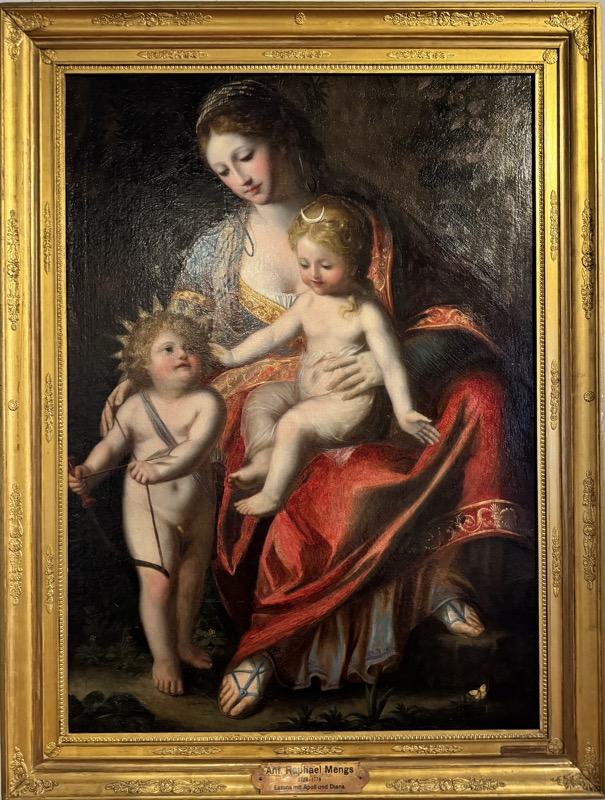
Winter Landscape, Circleof Joos de Mompher II (Antwerp 1564-1635), late 16thC/early 17thC. Oil on wood.
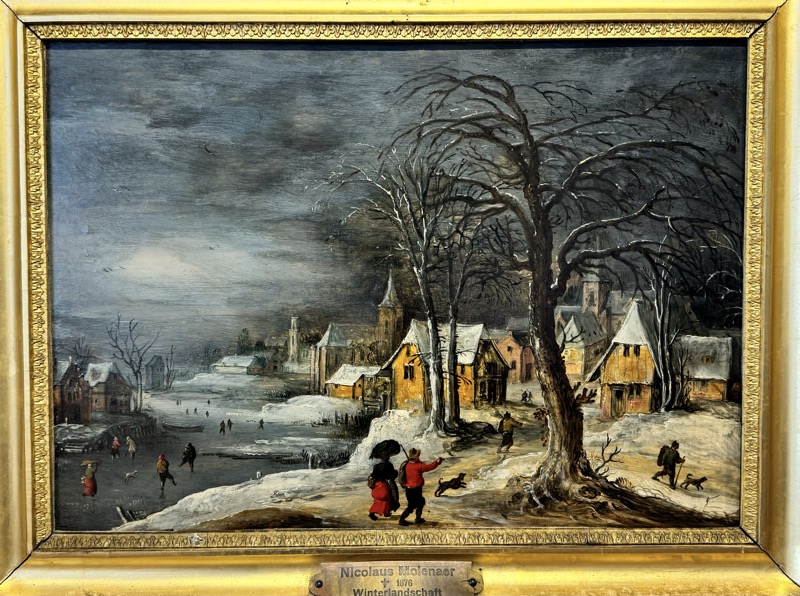
The Bread Eater / The Arrow Carver
Peter Breugehel the Younger, (Brussels 1564-1638, Antwerp), c.1620. Oil on wood.
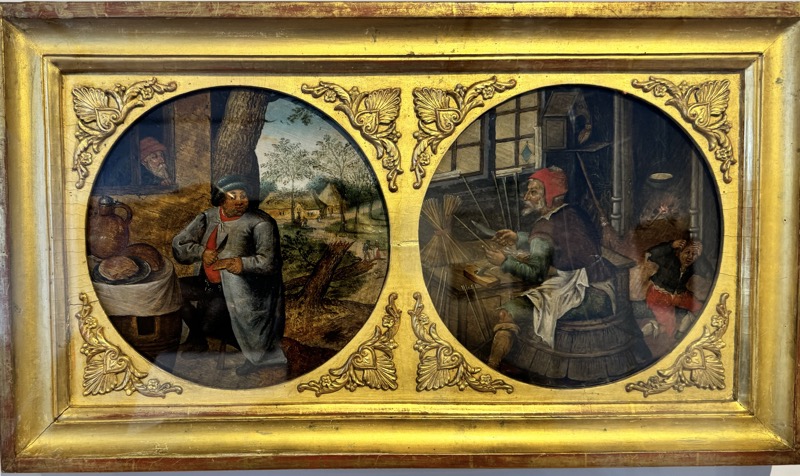
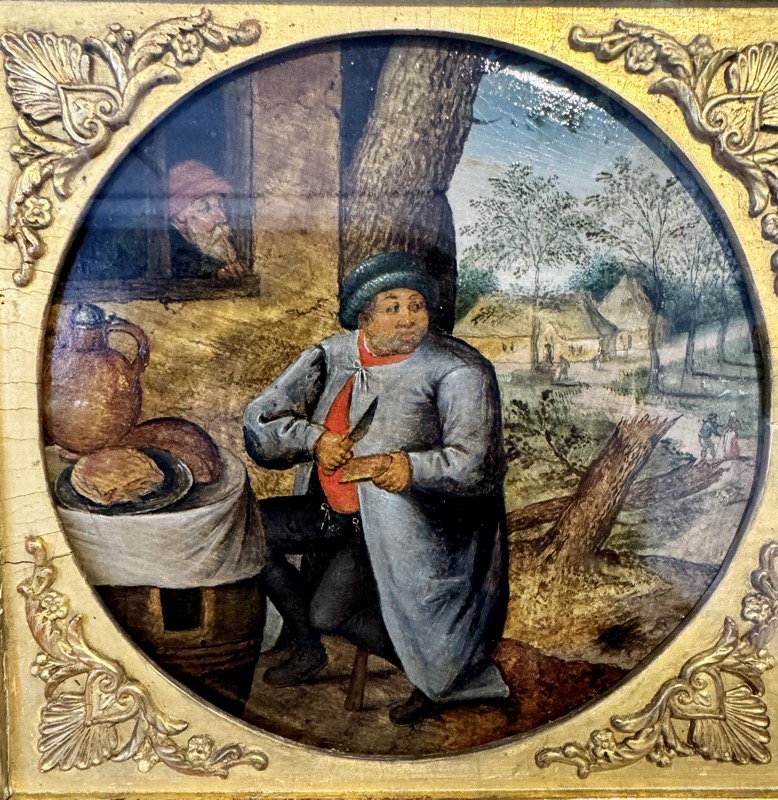
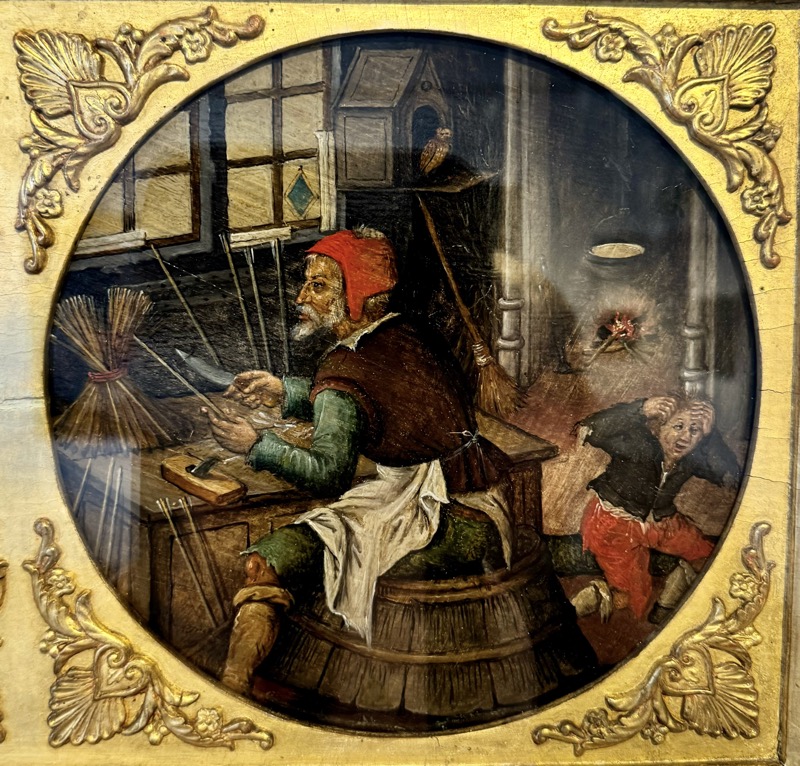
The Gift / The Punished Licker
Peter Breugehel the Younger, (Brussels 1564-1638, Antwerp), c.1620. Oil on wood.
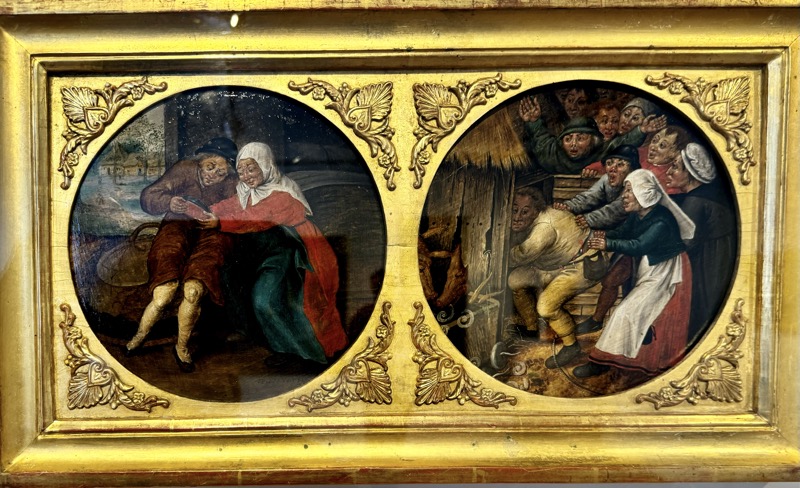
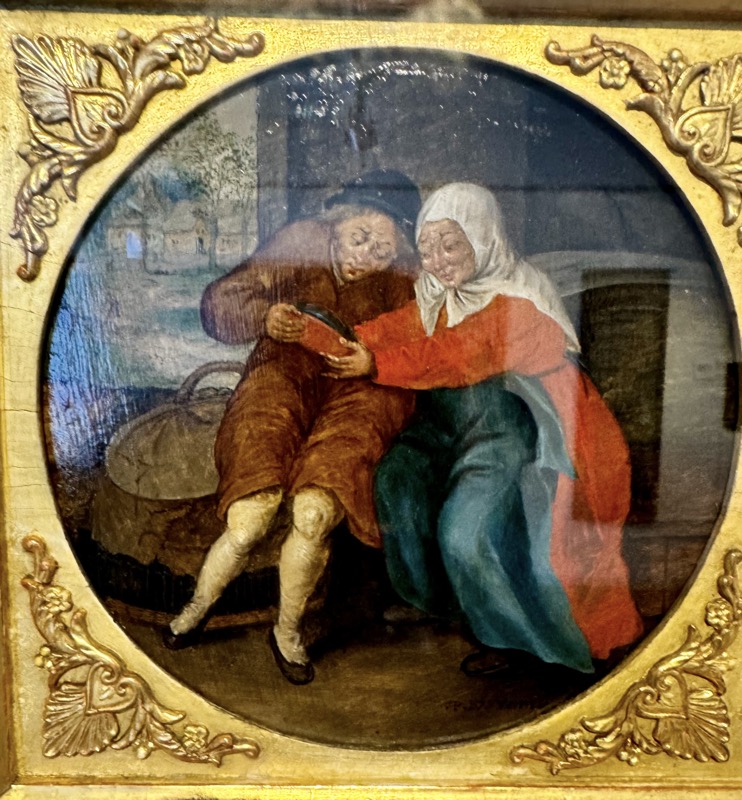
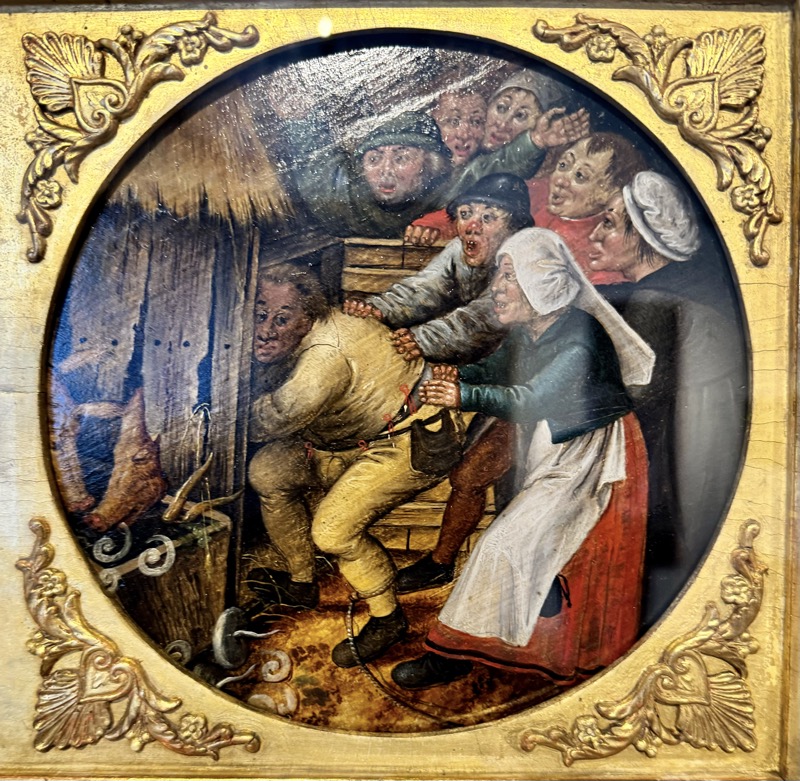
So, Still Life artworks confuse me. I can see and appreciate the skill involved in rendering the tableau so perfectly, but I just don’t understand why they became so popular… particularly in the Low Countries in the 17thC. Still life paintings depict carefully selected and arranged inanimate objects (that bit I can get – it’s kinda like a small product creative advertising shoot!), such as fruit, flowers, kitchen utensils, goods at the market, hunting spoils, weapons or musical instruments. But they are also supposed to be creating a an illusion of reality that can convey a deeper meaning, such as the transience and fragility of life… umm, yeah! All these flowers, and food items are gonna rot eventually, so they’re all temporary. I don’t know, apparently some of them contain allegories, proverbs, ríddles or humorous tales, but who knows?
Still Life, copy after Jan Davidsz De Heem (Utrecht 1606-1684, Antwerp), c.1638.
Oil on canvas… needs more lobster.

The Anatomy of Dr. Tulp, Willy Fries (Zurich, 1881-1865) copied after a Rembrandt. Oil on canvas.
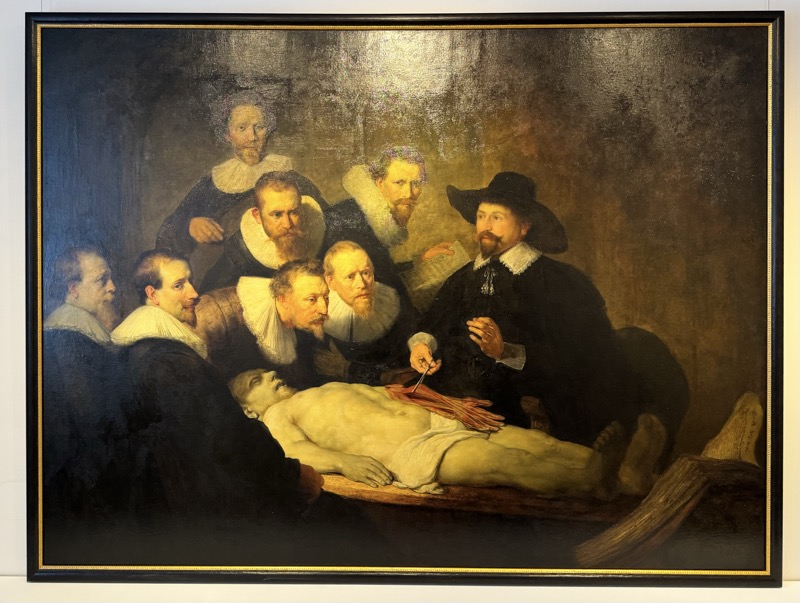
Children at the Window, Johann Nikolaus Treu (Bamberg 1734-1786(, c.1760. Oil on canvas.
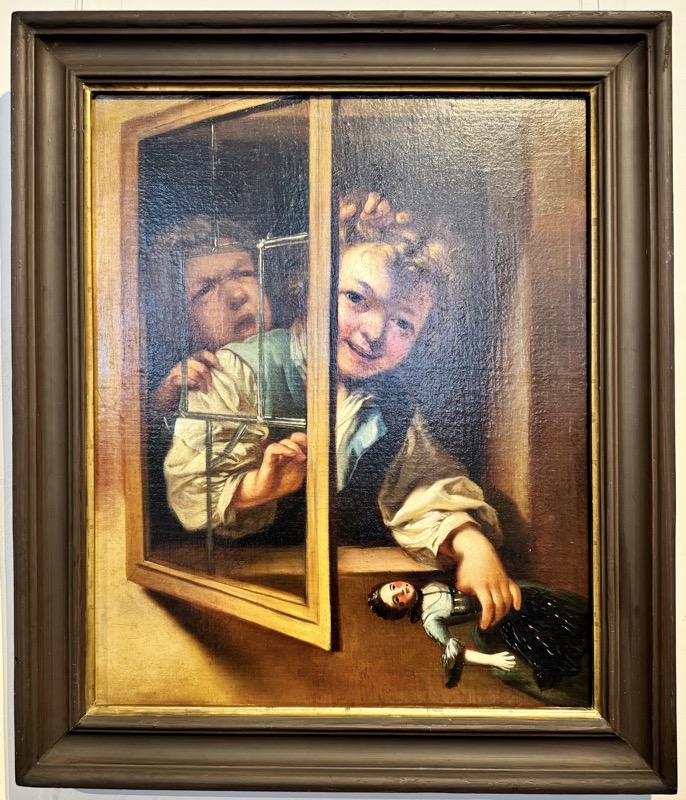
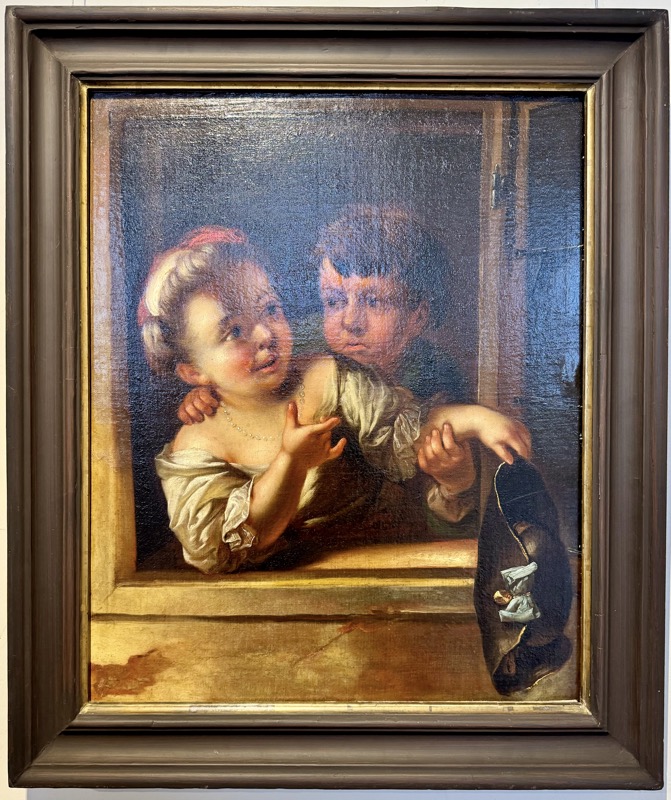

Death of Mary, unknown artist, c.1500, relief from the Carmalite Church and thought to be part of a winged altar. Workmanship is of a high quality and thought to be connected with the workshop of Dürer and his teacher, Michael Wolgemut. Linden wood.
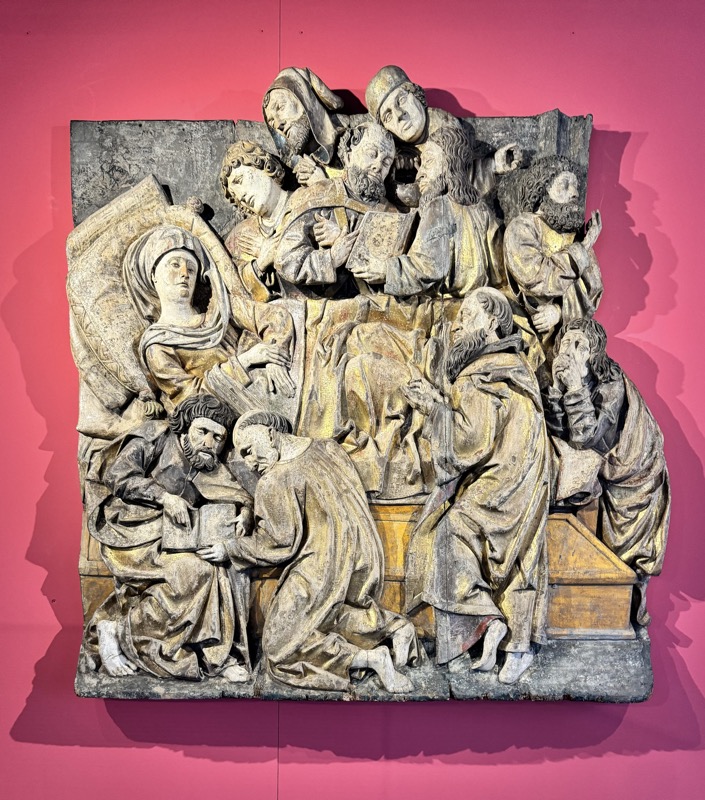
St Katharine, c.1500. Bamberg, carved and painted Linden wood.
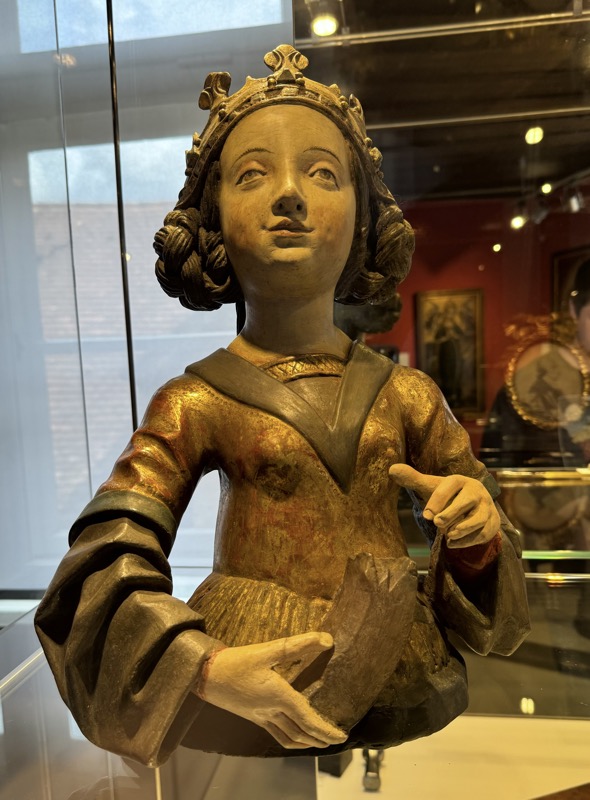
The next few objects were interesting, but I couldn’t find any information on them at all.

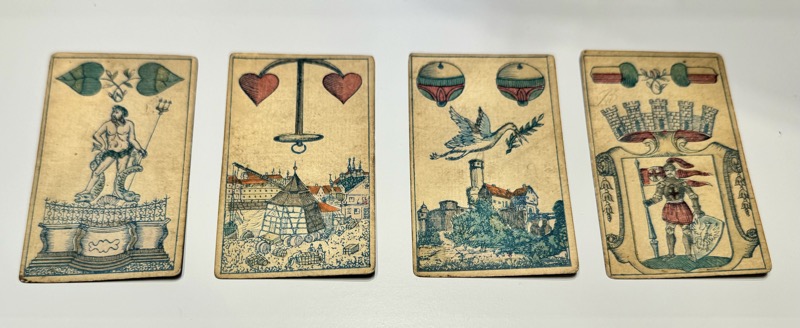
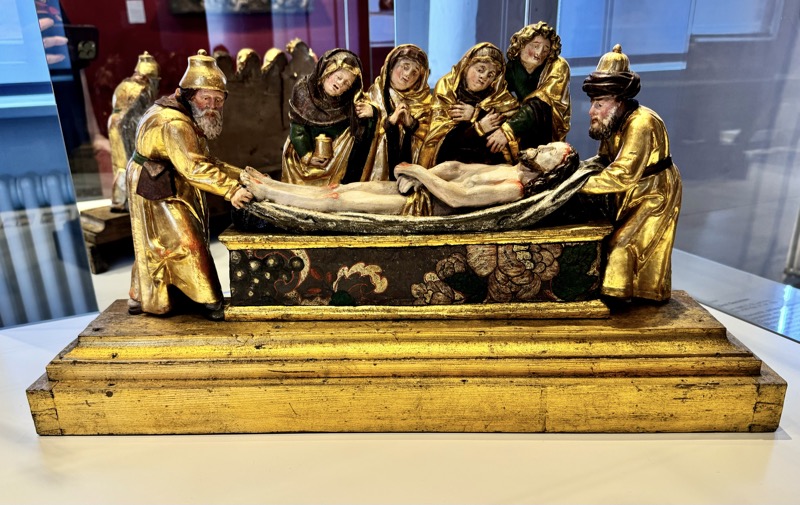
Hallways of the Old Court House which houses the museum.
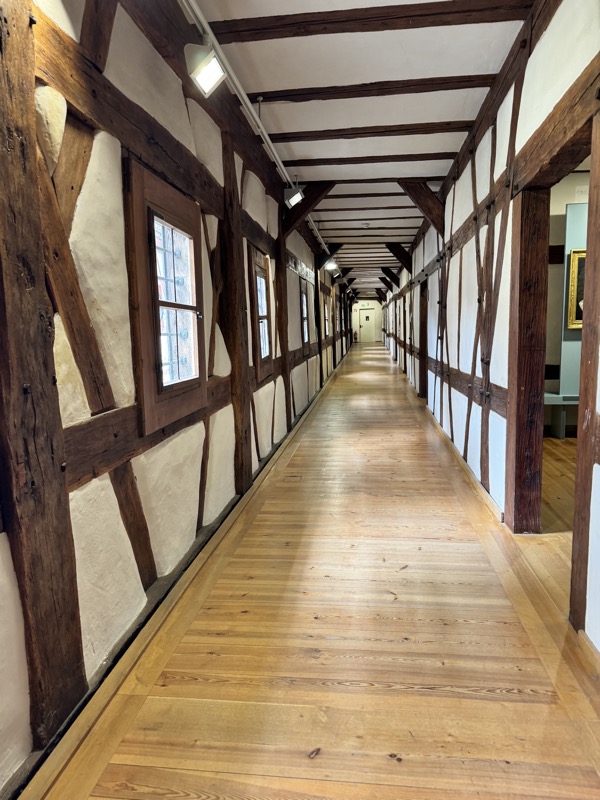
GIRAFFE WINGS – Christoph Ehrlich (1782- 1830) cherry veneer, ebony, ivory, in oil. C.1828. The trained organ builder Christoph Ehrlich set up an instrument factory for pianos and guitars in Bamberg and offered the special shape of this giraffe grand piano: tall instead of long, it fit into small Biedermeier rooms.
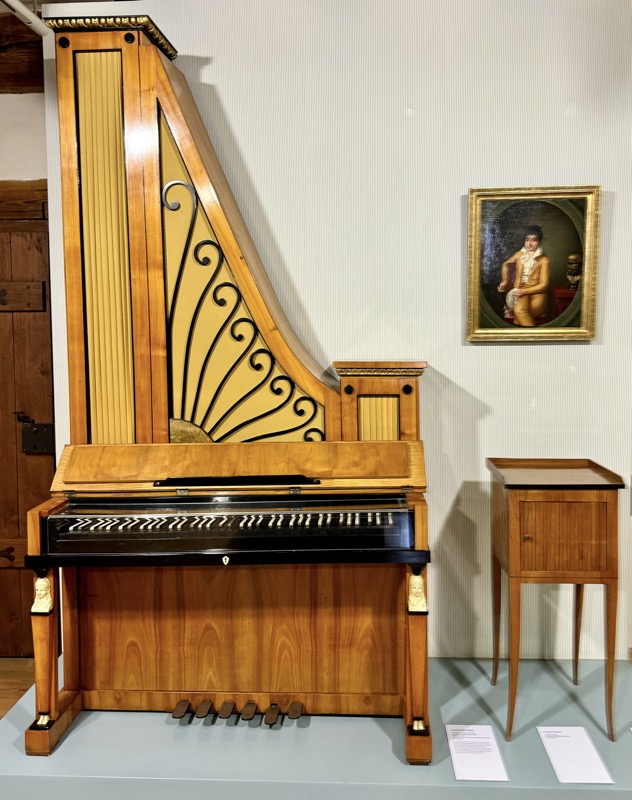

STANDARD OF THE VELOCIPED CLUB, Bamberg, 1893, silk, bouillon threads, brass.
On June 17, 1882, the new cycling fashion found expression in Bamberg when 20 men founded the Velociped Club. It is one of the early German cycling clubs. Races were held on the cycling track, which required great skill on the fast but dangerous high-wheelers. The cyclist greeting “All Heil” that was common at the time was printed on the flag.
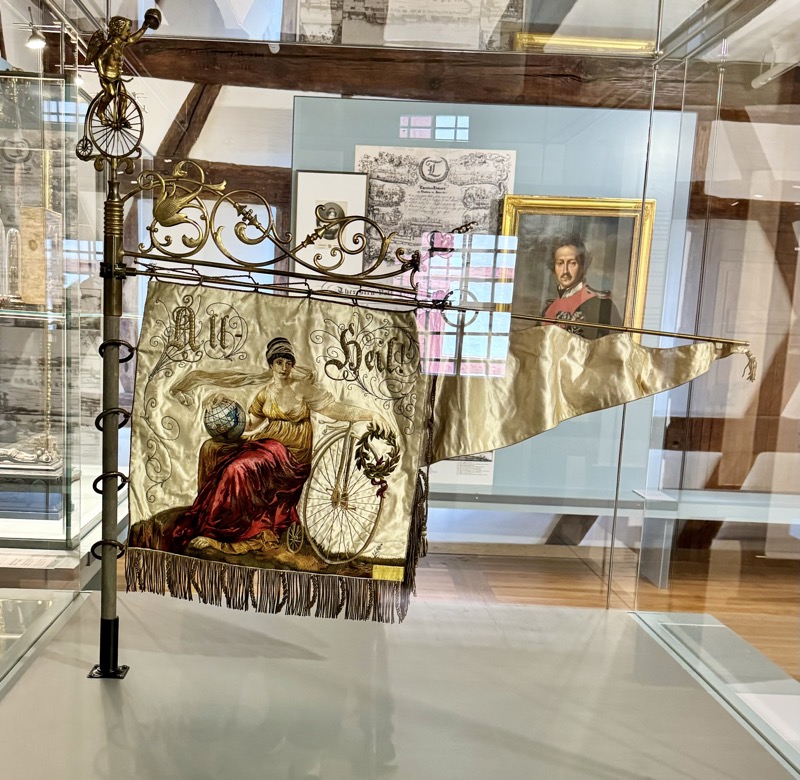

St George fighting the Dragon, wood, papier-mache, modelling clay, glass, pearls. C. 1852.
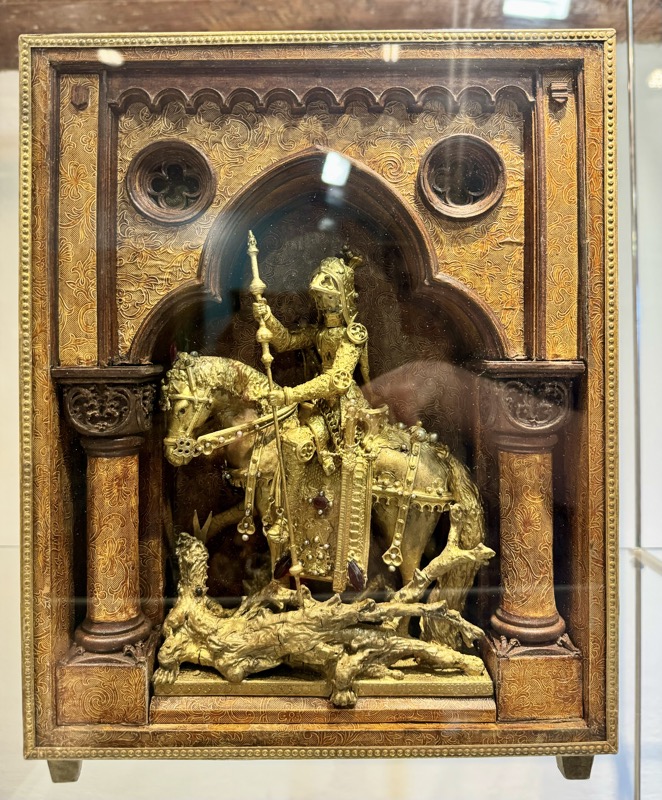
Most of the objects in these galleries were very modern and were related to the recent history of Bamberg; as a medieval enthusiast, they were not my primary area of interest.

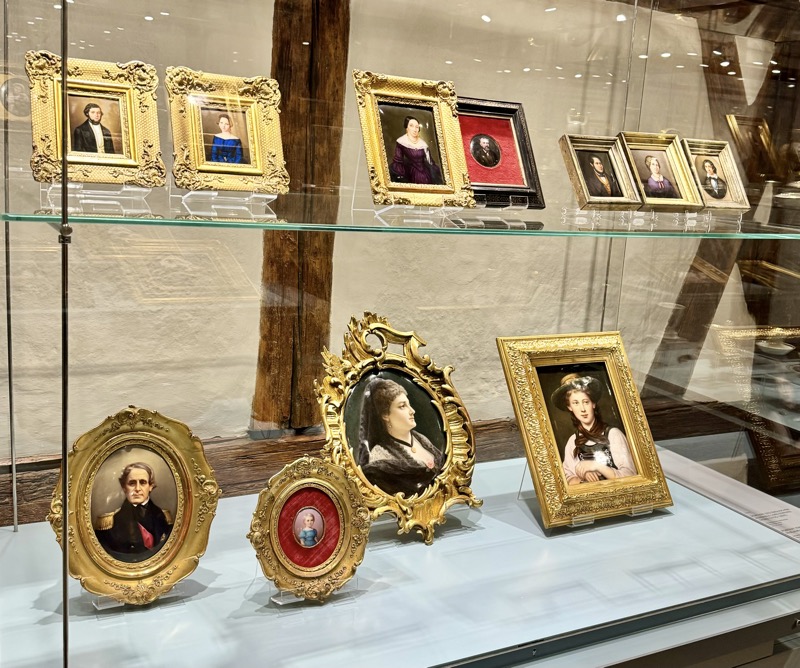
Granatschmuck – Garnet jewellery: gold, garnet, silver, c. 1850.
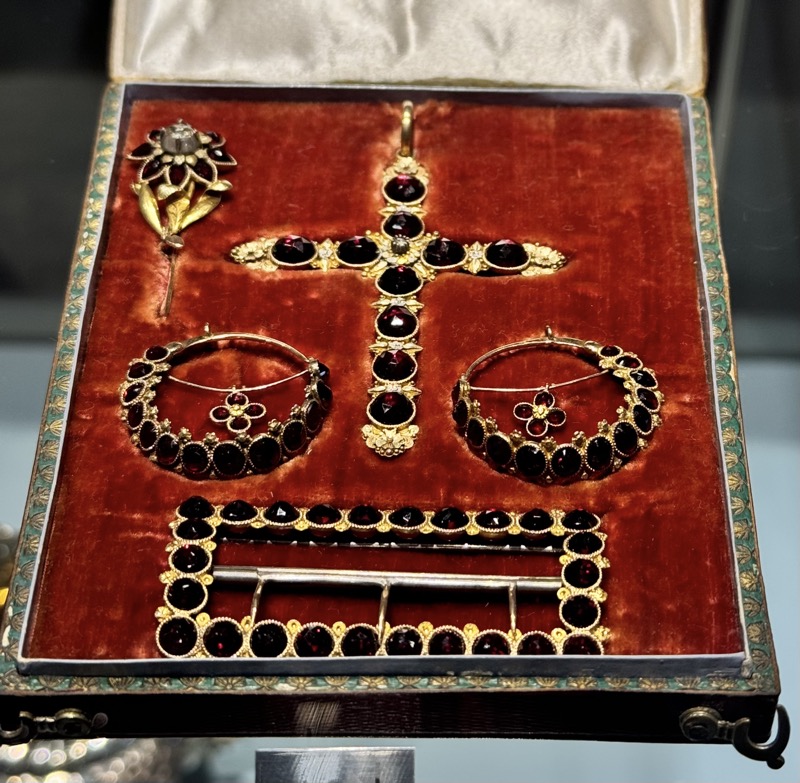
Two Bridal Crowns, Franconia. Copper wire, brass sheet ‘tinsel’, cardboard, glass beads, linen, silk, cotton. Late 19thC/early 20thC. Bridal crowns or holiday crowns were worn by young unmarried women in procession on important holidays until their wedding. Common in Franconian Switzerland and the Mistelgau region to the north.
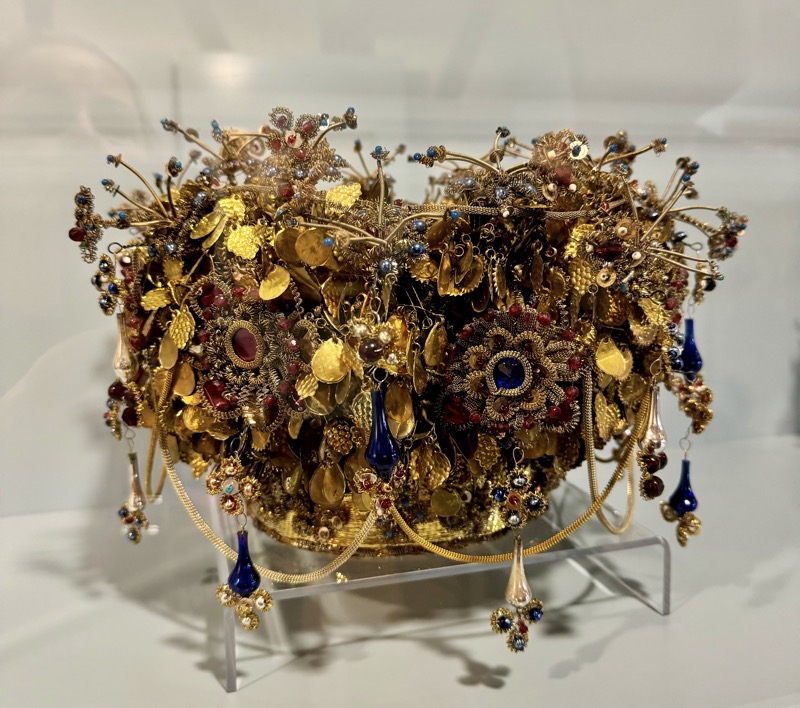
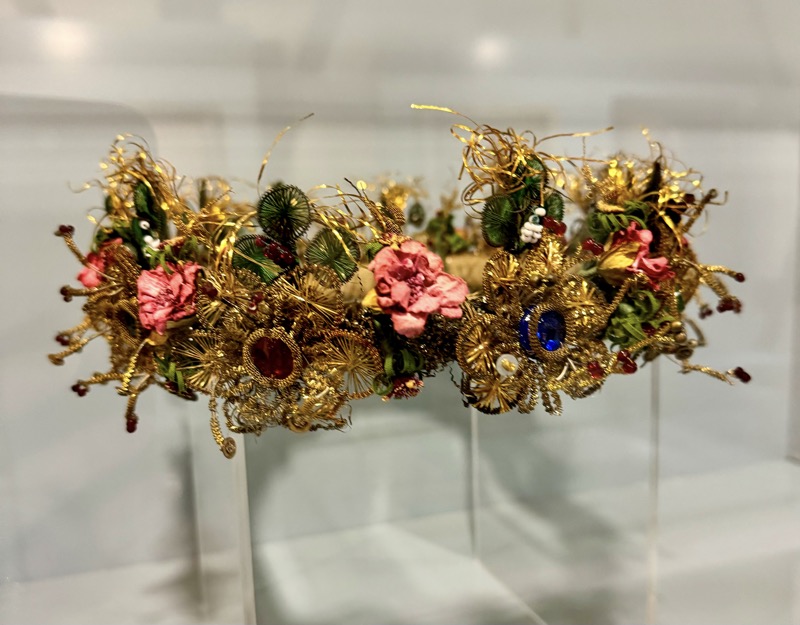
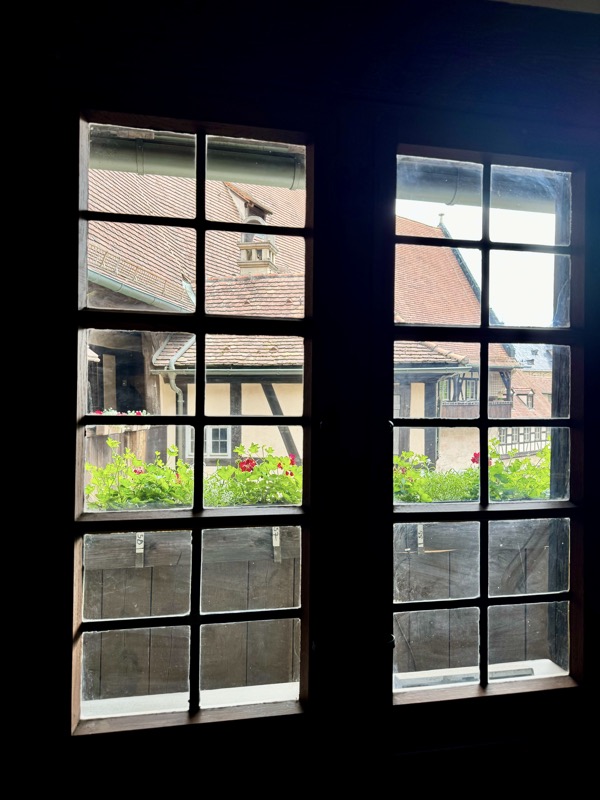
The Nues Residence, which contains a large collection of Asian ceramics and porcelain that we didn’t want to spend $$$$ to go see.
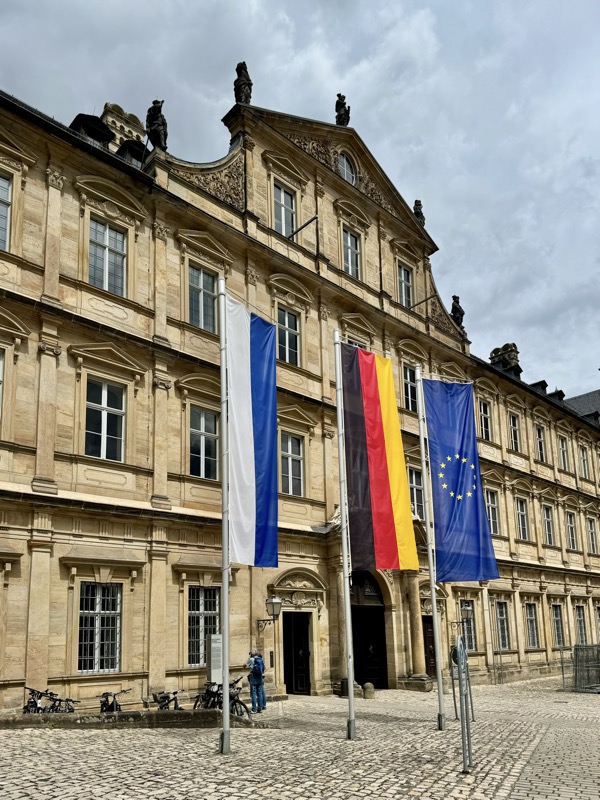
Through this building is the entrance to the Rosengarten.
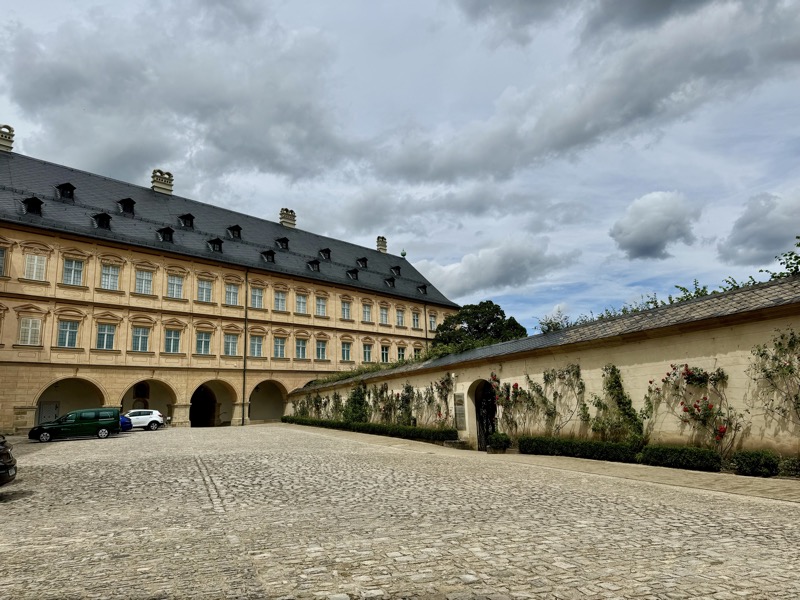
The Rose Garden is in the inner courtyard of the New Residence and offers a great view over Bamberg. The garden itself is formal in nature and is mostly roses… not sure what else you can say about that. It was quite busy while we were there, and sadly lacking in benches where visitors could loiter.
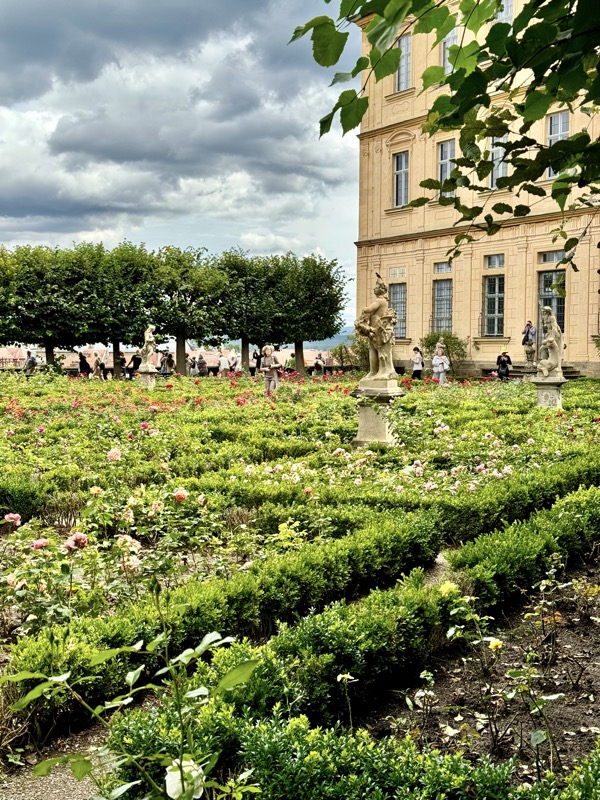
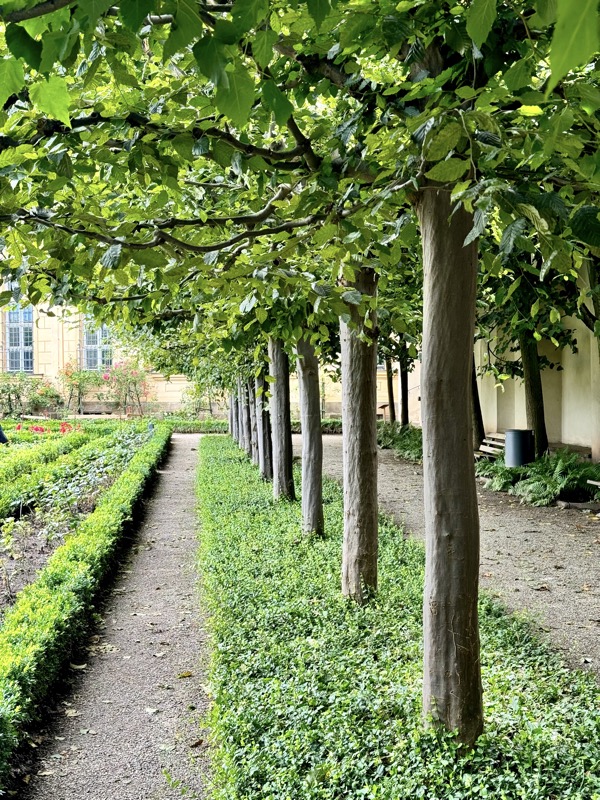
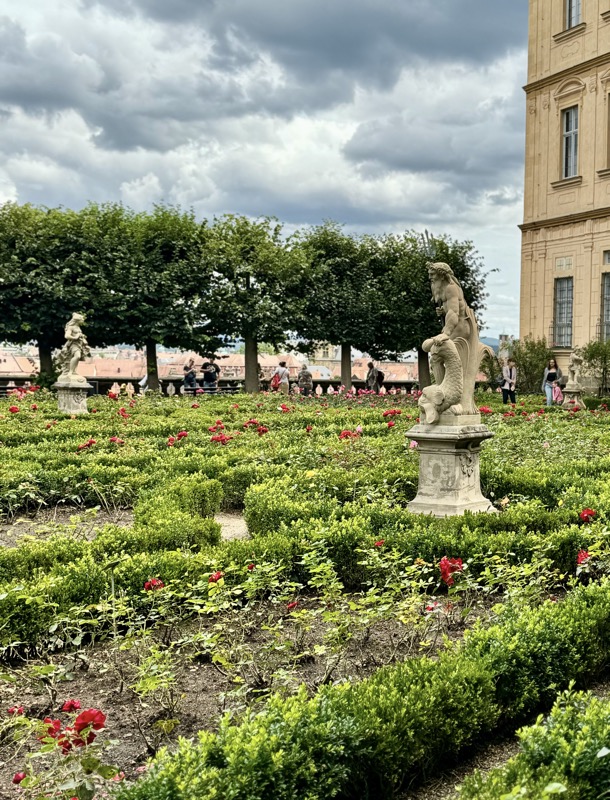

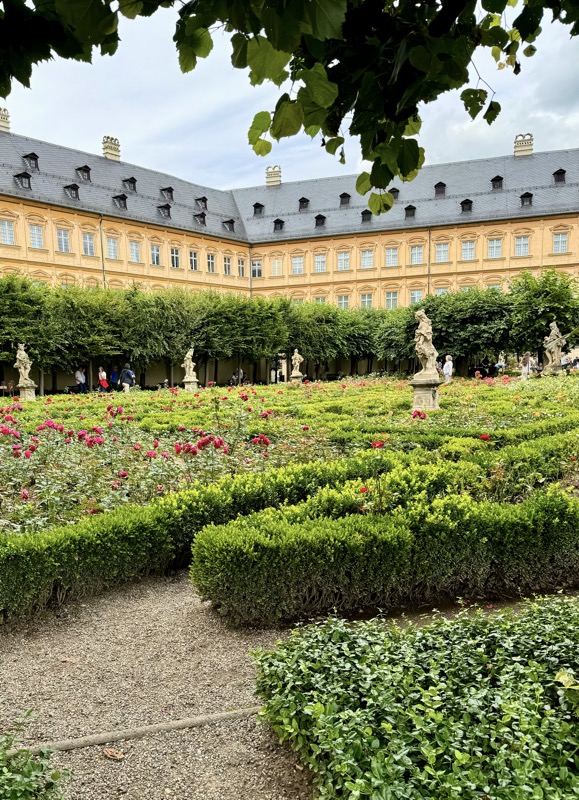
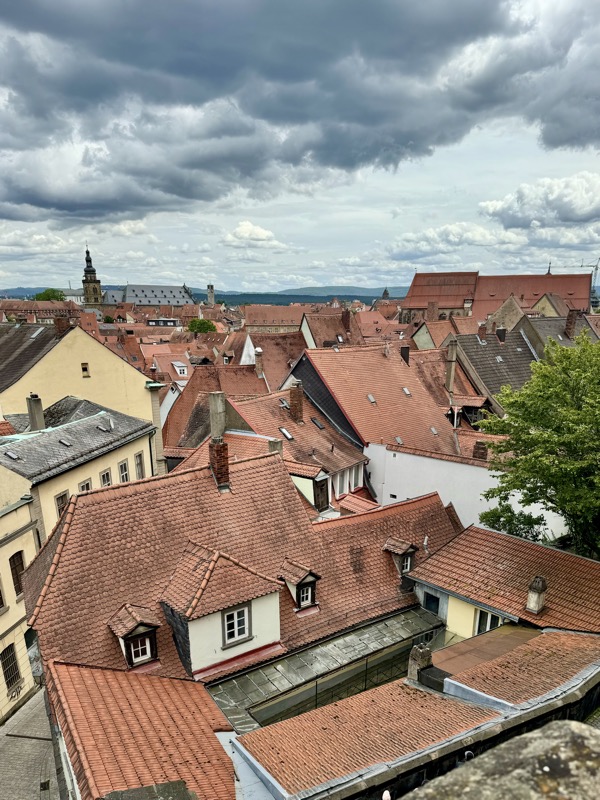
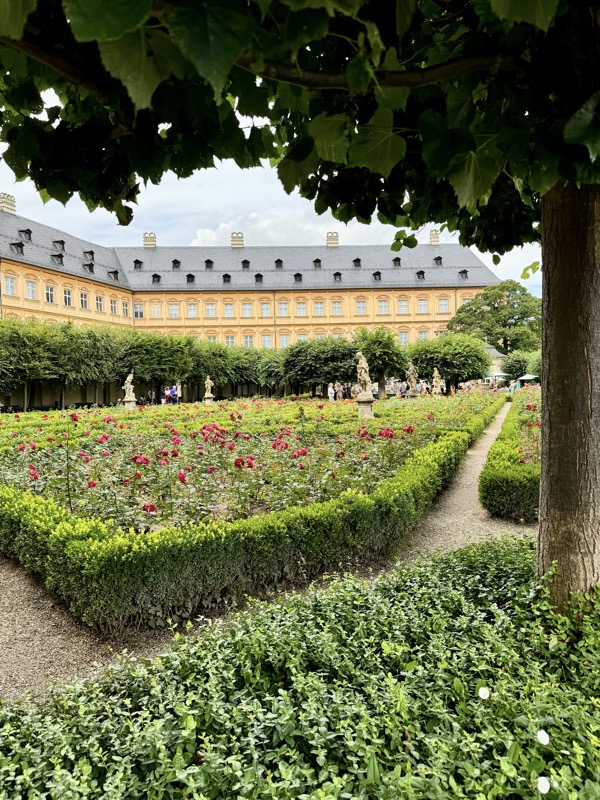
Having skipped breakfast and having wandered 5.4kms around the rather small old town and museum, we decided it was time to hunt for some brunch… alas, by 13:00, fruhstuck options were all gone, and we ended up at a Bavarian Brauhaus. Angus chose the Jagerschnitzel and I opted for what I thought was going to be something lighter: a couple of bratwurst sausages. Delicious – we are now losing track of our rating system for mushroom sauce served with schnitzels!
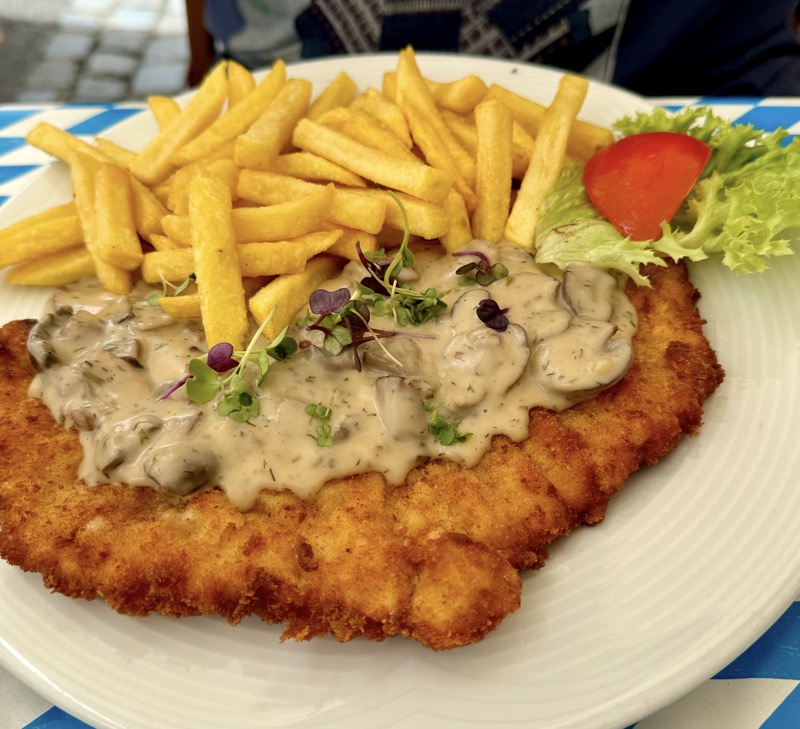
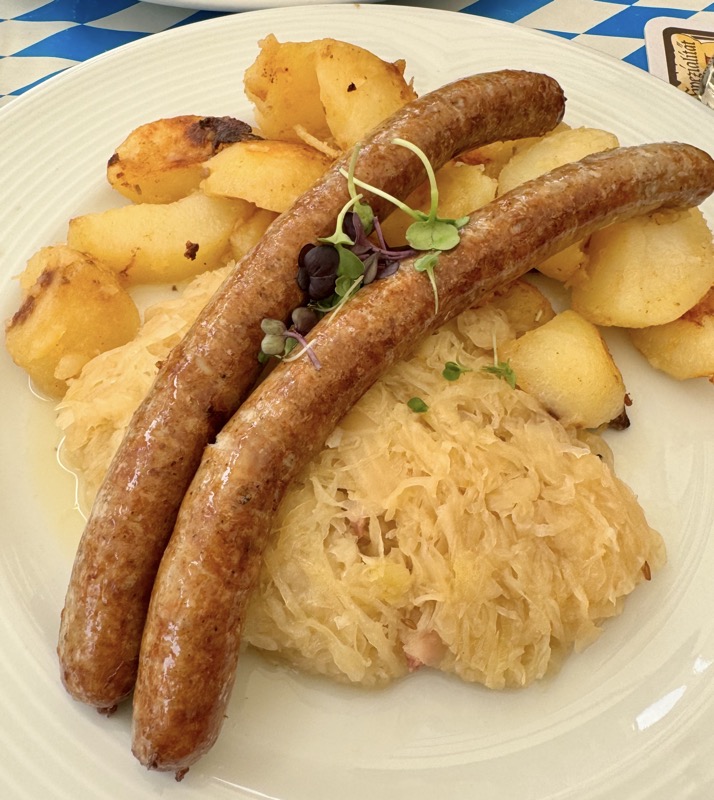
Little bit of souvenir shopping – looking for the tackiest things ever, of course – before heading back to the hotel to get some work done.

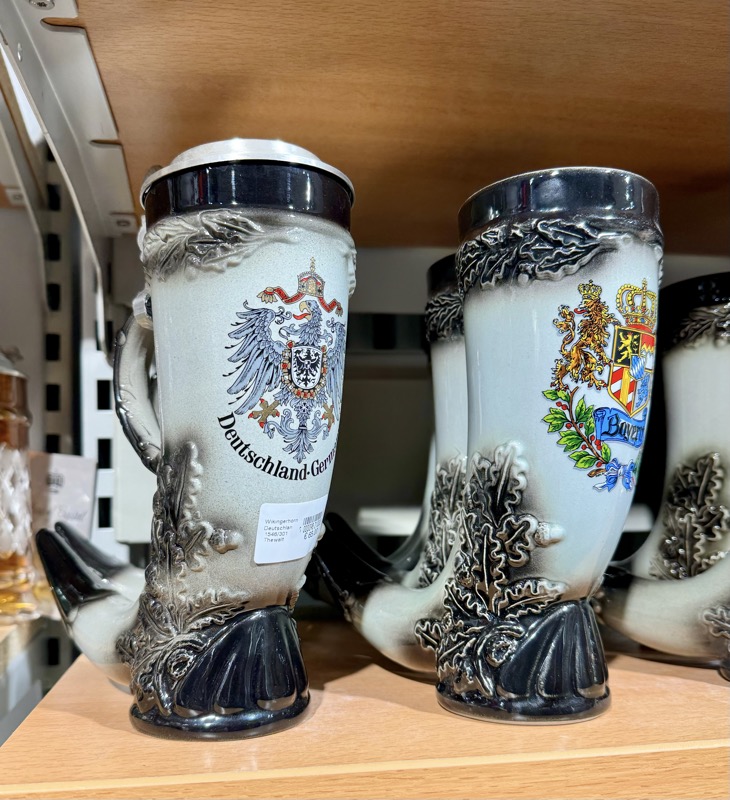
Which mean coming back past the RatHaus – looks totally different in the afternoon light, and I couldn’t see the aura around the sun with the naked eye at all. Something something atmospheric weirdness.
